Top 25 Best Project Management Software in 2024
Finding a project management software that meets a long list of requirements can be challenging due to the numerous options available. With varying strengths and weaknesses, not all software will have all the desired features, and some may have unnecessary additional ones. It is crucial to prioritize essential features, compare and test different options, and weigh the cost-benefit before deciding. Effective project management ensures that projects are completed on time and meet their goals. PM software tools make planning, delegating tasks, and maintaining team organization easy.
25 Most Popular Project Management Software Tools for 2024
Project management software typically comprises functionalities for assigning and monitoring tasks, fostering team collaboration and communication, managing schedules and deadlines, and monitoring and reporting progress. Additional prevalent features include allocating resources, tracking budgets and costs, and managing documents and files. Project management software integrates with tools like time-tracking and project accounting.
#1. Notion

Notion is an all-in-one workspace software that provides users with a highly flexible platform to manage tasks, notes, projects, and databases in one integrated location. Designed for individuals and teams alike, Notion supports various functionalities, including document creation, knowledge management, and task tracking. Its intuitive drag-and-drop interface allows users to customize their workspaces extensively, making it a popular choice among professionals seeking an adaptable and visually appealing organizational tool. Notion’s collaborative features, such as real-time editing and easy sharing, facilitate efficient teamwork and communication. Available across multiple devices, Notion helps streamline workflows and enhance productivity in a modern digital environment.
Features
Notion excels in project management through its highly customizable workspace, where teams can organize and track projects using a variety of views like Kanban boards, calendars, and lists. The platform supports the creation of tailored templates, allowing teams to streamline workflows and ensure consistency across projects. With its robust database functionality, Notion enables users to manage tasks, set deadlines, assign responsibilities, and track progress. The tool also facilitates real-time collaboration, allowing team members to comment, share documents, and update statuses efficiently. Integrated notifications and reminders help keep projects on schedule, making Notion a comprehensive solution for managing diverse and dynamic project needs.
Rating:
Best Features:
Boards and custom fields
Pricing
Notion’s pricing includes a free Personal plan with unlimited pages and blocks for individual use. The Plus plan costs $10 per month, offering unlimited file uploads and version history. For teams, the Business plan is $18 per user per month, featuring advanced collaboration tools and admin controls. Large organizations can opt for the Enterprise plan, which includes advanced security, SAML SSO, and dedicated manager support, with prices available upon request. Additional discounts are available for annual subscriptions.
Plus Plan:
Unlimited File Uploads, 100 guests
Plus Plan Price:
USD$10/user/month
#2. Bitrix24

Bitrix24 is a free online project management software offering a comprehensive suite of tools designed to ensure the success of any project, regardless of its scale. It allows the creation of unlimited tasks and projects, fostering collaboration through online platforms. Users can allocate specific hours for each task or project, enhancing time management. Additionally, Bitrix24 provides access to advanced features like task dependencies, facilitating complex project planning and execution. This software is ideal for managing diverse projects efficiently, providing essential resources for effective task organization and team collaboration.
Features
Bitrix24 is an all-in-one project management and collaboration platform offering a range of features to boost team productivity. It includes advanced task management capabilities, efficient project tracking, visual Gantt charts for effective scheduling, and Kanban boards for agile workflow management. The software also provides time-tracking tools for monitoring project hours, pre-designed templates for quick task and project setup, automated workflows to streamline task management, and CRM integration to align project activities with sales processes.
Rating:
Best Feature:
CRM Platform
Pricing
Bitrix24 stands out with its comprehensive feature set and a free plan accommodating unlimited users, albeit with a limitation of 5GB storage and restricted access to advanced features. Its paid subscriptions vary from $61 to $249 monthly, influenced by the chosen plan and the payment frequency – monthly or annually. Opting for longer-term payments results in more cost-effective plans. Unlike many project management systems, this pricing structure is particularly competitive as it doesn’t charge per user. This aspect makes Bitrix24 an economically advantageous choice, especially for organizations with many users, as the cost doesn’t increase with user count.
Basic Package:
5 users, CRM, 24GB
Basic Price:
USD$49/month (5 users)
#3. Monday.com

monday.com is a cloud-based solution that empowers businesses to develop custom work management tools and applications. Initially launched in 2014 as a work collaboration tool, it has since evolved into many workflows, such as customer relationship management (CRM), project management software development, human resources, marketing, and more. With monday.com, you can leverage the company’s pre-existing templates or create your own from scratch to fit your needs.
Features
monday.com is versatile project management software designed to accommodate various workflow needs. It offers a wide range of features and views. Users can customize dashboards to track projects, workflows, and tasks effectively.
The platform supports multiple views, such as Kanban, Gantt, Grid, and Calendar, facilitating different planning preferences and project management methodologies. Its collaborative tools enable real-time communication, file sharing, and updates, ensuring team alignment. With automation capabilities, users can streamline repetitive tasks, enhancing productivity and allowing them to focus on strategic tasks.
Rating:
Best Feature:
Interactive Dashboard
Pricing
For a monthly subscription, monday.com offers three pricing plans: Basic, Standard, and Pro, which cost $10, $12, and $20 per user, respectively. It’s important to note that each plan requires at least three users. monday.com has recently unveiled a free plan that offers fundamental features for a maximum of two individuals.
Additionally, users can take advantage of a 14-day free trial of the Pro plan without providing credit card information.
Basic Package:
Unlimited boards, 5GB storage, No guest access
Basic Price:
USD$8/user/month
#4. AceProject

AceProject is web-based project management software built to manage projects from start to finish. It provides an extensive solution for teams and enterprises to regulate critical workflows and eliminate uncertainties. This online collaboration and time-tracking software can be effortlessly implemented as software-as-a-service, allowing it to suit any project.
Features
AceProject delivers various features to manage projects from end to end. The project tracking features are Gantt charts, advanced reports, project templates, and recurring tasks. The time tracking features are time approval, time clock, and time reports. The document management features are document sharing, versioning, and locking. The expense tracking features are expense approval and expense reports.
Rating:
Best Feature:
Report Engine in their new interface
Pricing
AceProject proposes various flexible plans to fit different requirements and budgets. The free Basic plan incorporates 3 users, unlimited tasks, 3 projects, and 1 GB of online storage. Users can choose from various paid plans, including Standard, Advanced, Silver, and Gold, starting at $24 monthly. Each package caters to a specific number of users, projects, and storage space.
Standard Package:
10 users, 10 projects, 5GB
Standard Price:
USD$24/month (10 users)
#5. ClickUp

ClickUp is a versatile, cloud-based project management software designed to enhance productivity and streamline workflows for teams of all sizes. With features ranging from task management and collaboration to time tracking and document sharing, ClickUp offers a comprehensive solution that adapts to various business needs. Its intuitive interface and customizable options make it a go-to platform for improving team efficiency and project oversight.
Features
ClickUp offers a comprehensive suite of task and time management features alongside advanced collaboration tools. It enables users to design tailored workflows utilizing over 12 views, including List, Gantt, Board, Dashboard, and Calendar. Time management is streamlined through schedule creation and capacity tracking, while collaboration is facilitated through comment assignments, real-time chat, attachment sharing, and in-app video recordings, underpinning ClickUp’s functionality.
Rating:
Best Feature:
Kanban board view
Pricing
ClickUp pricing structure caters to a variety of needs with a free tier offering essential features, making it accessible for individuals and small teams. Its paid plans—Unlimited, Business, and Enterprise—scale with additional functionalities like advanced reporting, increased storage, and dedicated support, designed for growing teams and organizations seeking more customization and control. This tiered approach ensures flexibility and value for users at different stages.
Unlimited Package:
Time Tracking, Forms, Unlimited Storage
Unlimited Price:
USD$7/month/user
#6. Wrike

Wrike is an online project management software well-suited for teams handling small- to medium-sized projects. It provides more than day-to-day task tracking and includes Gantt charts, dashboards, and built-in reporting tools. With more advanced features, a steeper learning curve exists to set up projects and navigate the pages. However, the pages, controls, and menus are visible, and the interface is functional.
Wrike is utilized not only by project teams but also by marketing teams, creative teams, product development teams, and professional services teams. It streamlines project planning, improves visibility, centralizes communication among team members, and simplifies workflow. Although Wrike provides a time log view and time tracking features, they are only available on paid Business and Enterprise plans.
Features
Wrike offers a robust suite of project management features designed to streamline workflows and enhance team collaboration. Customizable dashboards provide at-a-glance insights into project progress and key metrics. The proofing and approval features facilitate efficient review cycles, while resource planning tools help optimize team workloads. Cross-tagging enhances organization and tracking across projects. Gantt charts and Kanban boards offer flexible planning views. Moreover, Wrike integrates seamlessly with numerous external applications, enhancing its utility and adaptability for various team needs and workflows.
Rating:
Best Feature:
Kanban Boards
Pricing
Wrike’s pricing plans cater to diverse team sizes and needs. The Team plan, at USD$9.80 per user per month, supports 2-25 users with unlimited projects, ideal for small teams. The Business plan, at USD$24.80 per user per month, accommodates 5-200 users, offering extensive features for larger teams. For enterprises with 5 to an unlimited number of users requiring advanced capabilities, Wrike provides a custom-priced Enterprise plan, also with unlimited projects.
Team Package:
Unlimited projects, Google Sign-In, 2GB storage per user
Team Price:
USD$9.80/user/month
#7. Teamwork Projects

Teamwork Projects is a straightforward yet powerful tool for teams seeking a user-friendly platform with advanced capabilities. It emphasizes simplicity by reducing the complexity of collaboration. Users can quickly and easily see what everyone is working on, who they are working with, and what comes next without navigating through lists and charts.
Teamwork Projects lets users plan tasks, subtasks, and milestones with a Gantt chart or in-list view. Choose from task list templates to start quickly. It has a built-in messaging function lets people track task progress or share content with notebooks. Use a board view to visualize task flow, track time, organize everything with tags, bill clients with invoicing tools, and get high-level or detailed reports.
Features
Teamwork Projects provides essential features for effective project management and team efficiency. Its Board view organizes projects by stages, while Portfolios oversee multiple projects and workloads. Project time budgets ensure on-time, within-budget delivery. Burndown and utilization reports offer progress and performance insights. Workload reports monitor team capacity, preventing overload. Additionally, built-in billing, invoicing, and budgeting tools streamline financial management, making it simpler to track expenses and manage project finances, ensuring a smooth operational flow.
Rating:
Best Feature:
Time Tracking and User Rates
Pricing
Teamwork.com offers a variety of pricing plans tailored to different needs and team sizes. The Free Forever plan is designed for small teams or individuals just starting with project management. The Starter plan, at $5.99 per user per month, offers more customization and integration for small teams. The Deliver plan, priced at $9.99 per user per month, adds collaboration and advanced features for larger teams. Grow, at $19.99 per user per month, suits large organizations with complex projects. For very large enterprises requiring maximum customization and scalability, the Scale plan is available upon contact with Teamwork.
Starter Plan:
Unlimited projects, Unlimited Client Users, 3 custom fields
Starter Price:
USD$5.99/user/month
#8. Asana

Asana is a powerful project management software designed to help teams stay on top of their work and accomplish their goals more efficiently. With customizable views catering to every team member’s needs, Asana is the ideal solution for marketers looking to streamline their workflows and collaborate seamlessly. The software’s free version offers unlimited storage, past project records, and messaging capabilities on the platform.
If you need an advanced reporting and exporting platform to boost Asana’s capabilities, consider Bridge24 for Asana.
The Premium and Business plans offer advanced features for those with more demanding needs, including timelines, workload management, and project portfolios. Asana’s intuitive design and easy-to-use interface make it a popular choice for small and enterprise-level companies. Overall, Asana is an indispensable tool for marketers looking to maximize their productivity and achieve success.
Features
Asana offers powerful features designed to streamline project management and team collaboration. Users can access dashboards to overview project progress, set and track goals, and customize fields for tailored management. Portfolios organize projects, while rules automate tasks. Forms gather essential information, and workload and time-tracking features ensure efficient resource allocation. Gantt charts, timelines, and calendars facilitate detailed planning and scheduling.
Rating:
Best Feature:
Custom Fields for Tasks and Projects
Pricing
Asana offers three pricing plans tailored to varying project management needs. The Personal Plan is free, ideal for newcomers with features like task management and project boards. The Starter Plan, at $10.99 per user per month, adds functionalities such as timelines and custom fields for growing teams. The Advanced Plan, priced at $24.99 per user, provides comprehensive tools, including portfolio management and custom rules for organizations seeking advanced project management capabilities. Pricing adjusts with team size.
Starter Plan:
Unlimited projects, 5 project views, custom fields for tasks/projects
Starter Price:
USD$10.99/user/month
#9. Trello
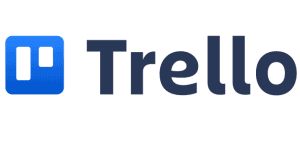
Trello is an excellent choice if you are new to managing projects or starting a business. It is a simple application that utilizes the Kanban system with visual boards, columns, and cards. The click-and-drag interface of Trello is akin to an online whiteboard with virtual Post-it notes that can be moved around, making it highly adaptable for managing individual projects and ongoing workflows.
If you need an advanced reporting and exporting platform to boost Trello’s capabilities, consider Bridge24 for Trello.
Features
Trello simplifies project management with its intuitive features. Cards and boards allow users to organize tasks and projects visually, while power-ups integrate additional functionalities. Advanced checklists and custom fields enhance task specificity. Dashboards offer a consolidated view of project progress. The timeline feature aids in planning, and the calendar ensures deadlines are met, making Trello a versatile tool for teams of any size.
Rating:
Best Features:
Advanced Checklists and Custom Fields
Pricing
Trello offers four pricing plans. The Free Plan is for individuals or teams just starting out. The Standard Plan, at $5 per user per month, with advanced checklists and custom fields, suits small teams needing more management features. The Premium Plan, costing $10 per user per month, offers more views and is designed for teams requiring advanced tracking and visualization. The Enterprise Plan, priced at $17.50 per user per month, caters to large organizations needing extensive security and control features.
Starter Plan:
Unlimited boards, custom fields, and advanced checklists
Starter Price:
USD$5/user/month
#10. Basecamp

Basecamp is a well-suited solution for any business looking to enhance task organization and communication. It is one of the pioneers in the online productivity platform, having launched in 1999 and has since garnered over 3 million users. With a continued focus on simplicity, everything included in the software, including its current version 3, has been designed to facilitate ease of use for the customer.
If you need an advanced reporting and exporting platform to boost Basecamp’s capabilities, consider Bridge24 for Basecamp.
Features
Using Basecamp, users can access to-do lists, schedules, document management, charts, reports, notifications, and various communication and collaboration tools in one application. The message board facilitates company-wide communication, Campfire enables real-time group chat, Pings supports direct messaging, and Check-in questions provide regular reporting. With everything centralized in one workspace, work is more visible, and people are more accountable, making it easy to search, track, and clarify information.
Rating:
Best Features:
Kanban boards and Group Chat built-in
Pricing
Basecamp starter plan costs $15/user/month and allows unlimited projects and 500 GB of storage space. The Pro Unlimited plan, which costs $299 monthly, includes all features and supports unlimited users. Web, desktop, and mobile versions are available. Since it has fixed pricing, larger teams can get more value than smaller teams.
Starter Plan:
Unlimited projects, invite guests for free, 500 GB of storage
Starter Price:
USD$15/user/month
#11. Zoho Projects
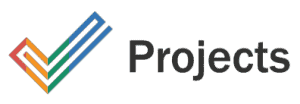
Zoho Projects is a comprehensive project management tool designed to facilitate project planning and collaboration for teams of all sizes. It features a wide range of functionalities including task management, time tracking, and Gantt charts to help streamline workflows. The platform offers a free package for small teams, while its competitively priced Premium and Enterprise packages cater to growing and large organizations respectively, with additional features like project templates, custom fields, and advanced security options.
Features
Zoho Projects offers numerous features at a very affordable price, giving users more excellent value for their money. These features include task management, task automation, time tracking, charts and reporting, issue tracking, and social task management. Users can create tasks, assign them, and track their progress until completion. Zoho Projects also features milestones, dependencies, a Kanban board view, and a Calendar view.
Rating:
Best Features:
Custom Fields and Time Tracking
Pricing
Zoho Projects introduces a tiered pricing structure to accommodate varying project management needs. The Free package includes 2 projects, subtasks, and 5GB of storage, ideal for small teams or individual projects. The Premium package, at $4 per user, offers unlimited projects, project templates, and time tracking, suitable for growing teams. The Enterprise package at $9 per user for large organizations adds custom fields, custom roles, single sign-on, and two-factor authentication, providing enhanced security and customization options.
Premium Plan:
Unlimited projects, subtasks, 20 templates, 100 GB of storage
Premium Price:
USD$4/user/month
#12. Microsoft Project

It is no surprise that Microsoft Project is on this list, particularly if you require PM software for big projects. This software has been around for decades and was many companies’ de facto standard for planning projects. In its current version, it resembles other Office applications, but it remains a favorite among seasoned project managers due to the depth of its features, albeit with limited tutorials.
Features
Microsoft Project includes task management, portfolio management, and resource management tools. It has built-in templates, project planning, multiple timelines, a roadmap view, and ready-made reports. You can use it to evaluate project proposals, model different portfolio scenarios, and share reports. It also features tools for resource requests, heat maps, and resource analytics for monitoring purposes.
Rating:
Best Features:
Gantt Chart
Pricing
Microsoft Project offers three plans for project management. Plan 1, at $10 per user/month, provides basic tools for efficient project management and collaboration. Plan 3, at $30 per user/month, adds advanced management features, resource allocation, and the option to install the desktop app on up to five devices. Plan 5, at $55 per user/month, is designed for portfolio and resource managers, offering comprehensive management tools, demand management, and portfolio optimization.
Project Plan 1:
List view, Gantt chart, graphs, integration with Teams
Project Plan 1 Price:
USD$10/user/month
#13. ProofHub
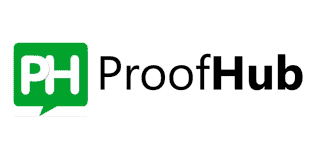
ProofHub is an all-in-one project management and team collaboration that brings all of your projects, teamwork, and team communication to one place. You can create a custom workflow, break a project into tasks, collaborate on tasks with the team from a centralized place, and track the real-time progress of a project. It is an easy-to-use and easy-to-learn tool for users of all levels of experience to learn the basics within minutes. You have all the features you need to stay on top of project management and make it easy for teams to work together.
Features
ProofHub is a feature-rich project management tool that provides you with a comprehensive set of features. It provides you with task management, Gantt chart, Kanban board, custom workflows, and project templates to manage projects. The software offers project reports to overview the progress of the project. Time tracking features such as timesheets, time reports, and automatic timer helps you with accurate tracking. Real-time chat, project discussions, task comments, notes, and file sharing make collaborating easy. The online proofing allows you to review, edit, and share feedback on digital assets.
Rating:
Best Feature:
Task management
Pricing
ProofHub offers two flat fee plans to fulfill the needs of companies of all sizes. It means you can add unlimited users for a flat fee. The Essential plan costs $45/month for unlimited users and up to 40 projects when billed annually and the Ultimate Control plan costs $89/month for unlimited users, unlimited projects, and all the premium features when billed annually. This is a great option for companies who do not want to pay per user per month fee.
Essential Plan:
Unlimited users, 40 projects, 15 GB storage
Essential Plan Price:
USD 45 per month for unlimited users
#14. Jira

Jira by Atlassian is the ultimate project management tool designed to facilitate the planning and tracking of work across diverse teams. Renowned for its flexibility and powerful features, Jira adapts seamlessly to any project type, from software development to task management. Its intuitive interfaces and customizable workflows enable teams to streamline their processes, enhance collaboration, and increase transparency. With Jira, project leads can assign tasks, track progress, and manage deadlines effectively, ensuring that every team member is aligned and productive. Whether you’re part of a small startup or a large enterprise, Jira offers the scalability and tools necessary to achieve your project goals efficiently.
Features
Jira offers a comprehensive suite of features designed to enhance project management through advanced planning, tracking, and collaboration tools. Key features include powerful Scrum and Kanban boards, allowing teams to manage tasks effectively and monitor progress in real-time, customizable workflows that accommodate any project type, real-time progress tracking, and collaboration tools that keep team members connected and informed. Additionally, Jira facilitates the efficient launch of projects with robust release management tools and detailed reporting capabilities that provide insights into project status, team performance, and more. Jira’s AI-driven task suggestions also help optimize workflows and ensure that teams focus on high-priority tasks, making it an essential tool for bringing big ideas to fruition efficiently.
Rating:
Best Features:
Kanban and Scrum boards
Pricing
Jira offers a range of pricing options designed to accommodate teams of all sizes, each with distinct features and benefits. The Free plan is perfect for small teams or startups, supporting up to 10 users at no cost and providing 2 GB of storage along with unlimited goals, projects, tasks, and forms. For those needing more resources, the Standard plan costs $7.16 per user per month, offering user roles and permissions, along with 250 GB of storage and unlimited user capacity. The Premium plan, recommended for larger teams, is priced at $12.48 per user per month and includes advanced tools such as Atlassian Intelligence for content management, cross-team planning, and unlimited storage. Lastly, the Enterprise plan caters to large organizations requiring robust analytics, enhanced security, and enterprise-grade management features and is billed annually. It also provides unlimited automation, 24/7 support, and a 99.95% uptime guarantee, emphasizing Jira’s commitment to supporting enterprises at scale.
Premium Plan:
Align multiple teams with unlimited storage
Premium Plan Price:
$12.48 per user per month
#15. Airtable
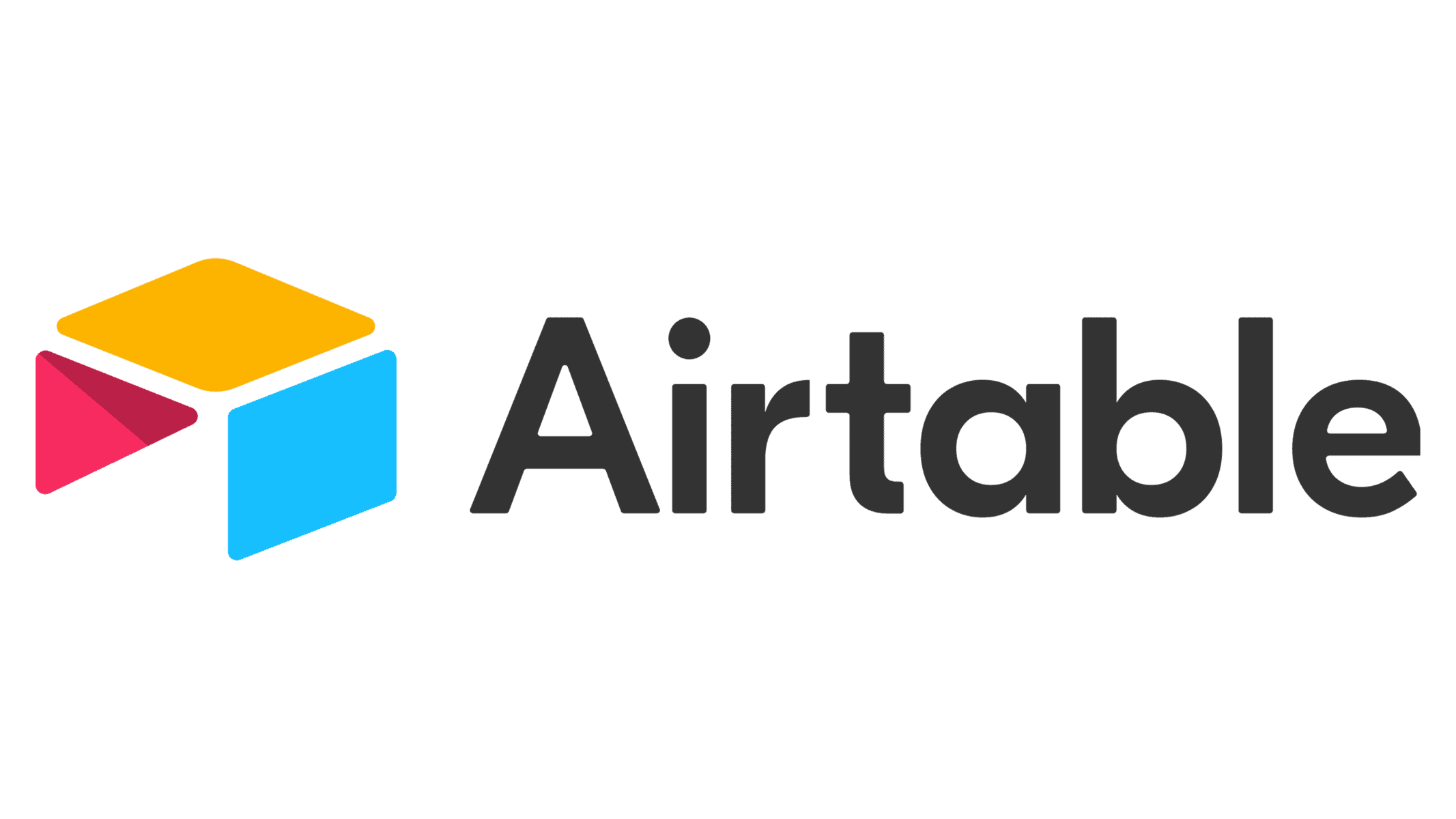
Airtable revolutionizes how teams build collaborative and productivity applications, offering a low-code platform designed for innovation and flexibility. By empowering users to move beyond rigid, traditional tools, Airtable allows for the operationalization of critical data and the reimagining of workflows through advanced AI integration. This platform is ideal for those looking to customize their workflow solutions without deep coding expertise, enabling a more streamlined and efficient approach to project management and data handling. Airtable is designed to empower your team to work faster and more confidently than ever before.
Features
Airtable’s platform is designed to enhance team productivity and data management through powerful features. Its automation feature helps streamline complex processes, allowing users to automate repetitive tasks and save valuable time. With their interface designer, users can create customized interfaces directly from their data, enabling personalized dashboard views that make information both accessible and actionable. Airtable also offers flexible data visualizations that can be customized to meet the unique needs of different teams, improving clarity and workflow efficiency. Powerful reporting tools allow users to measure and analyze data comprehensively. These tools facilitate the sharing of insights and enable informed decision-making across teams. To get projects up and running quickly, Airtable provides a selection of pre-configured apps designed for immediate use, helping users to implement solutions faster.
Rating:
Best Features:
App building and embedded AI workflows
Pricing
Airtable offers a range of pricing plans tailored to various organizational needs. The Free plan supports up to 5 editors with unlimited bases, 1,000 records per base, and basic features like the Interface Designer. The Team plan, at $20 per seat/month billed annually, includes 50,000 records per base and advanced views and integrations. For more extensive requirements, the Business plan at $45 per seat/month provides enhanced data sync and admin tools. Large-scale enterprises can opt for the Enterprise plan, which offers extensive customization and governance features.
Team Plan:
For teams developing apps to facilitate collaboration on shared workflows
Team Plan Price:
$24 per seat per month
#16. Todoist

Todoist is the ultimate tool for mastering your daily tasks and managing unending to-do lists. As the world’s top-rated task manager and to-do list application, Todoist empowers over 30 million users globally to stay focused, organized, and calm. Whether you’re juggling work deadlines, personal projects, or family commitments, Todoist offers a streamlined platform to track and tackle everything efficiently. With its simple yet powerful features, users experience the peace of mind that comes from having their entire life organized at their fingertips. Start organizing your tasks with a tool designed to transform productivity, effortlessly capturing and organizing all your tasks in one reliable location.
Features
Todoist offers a powerful suite of features to boost productivity and streamline task management. Its centralized admin panel simplifies project coordination, while an extensive activity log provides insights into team performance, enhancing decision-making. Productivity charts visualize progress, and file upload capabilities facilitate seamless collaboration. Real-time notifications and comments ensure continuous communication across the team. Automatic backups and 24/7 data sync protect your data and keep your task list current. Todoist also integrates with email for easy task creation from emails. Additional features like recurring due dates, priority levels, and customizable templates streamline your workflow and project planning.
Rating:
Best Feature:
Quick add feature with recurring due dates and reminders
Pricing
Todoist offers flexible pricing to suit various needs. The Beginner plan is free and includes 5 personal projects, smart quick add, various layout options, and basic integration capabilities. For more advanced features, the Pro plan costs $4 per month (billed yearly) and expands capacity to 300 personal projects, adds task reminders, duration settings, and an AI Assistant, among others. The Business plan, at $6 per member/month (billed yearly), includes everything in Pro plus extensive team functionalities like a shared workspace, up to 500 team projects, and enhanced team roles and permissions.
Pro Plan:
300 personal projects, AI assistant, 100MB
Pro Plan Price:
$5 per month billed monthly
#17. Smartsheet

Smartsheet is a premier enterprise work management platform designed to empower organizations to manage projects, programs, and processes efficiently. Trusted by over 90% of Fortune 100 companies, Smartsheet offers a robust foundation for handling tasks that range from modest projects to expansive portfolios. Its flexibility and modern approach to work management enable teams to operate with security and adaptability, making it an indispensable tool for businesses looking to scale their operations. Whether managing small-scale projects or large, intricate processes, Smartsheet provides the necessary tools to enhance productivity and drive successful outcomes.
Features
Smartsheet stands out with its powerful automation capabilities, allowing users to streamline processes and minimize repetitive tasks, significantly boosting productivity. The platform’s advanced dashboards and reporting tools offer real-time, actionable insights that empower decision-makers to track progress and manage resources effectively. Smartsheet also excels in team collaboration, facilitating seamless communication and coordination across various stakeholders. With its robust integrations, Smartsheet seamlessly connects with multiple applications, enhancing workflow continuity. These core features make Smartsheet a versatile and indispensable tool for managing complex projects and workflows in dynamic business environments.
Rating:
Best Features:
Workflow automation and multiple task management charts
Pricing
Smartsheet offers a flexible pricing model tailored to meet different needs, starting with a free plan that includes up to 2 editors and basic project management features. The Pro plan, at $9 per user per month, allows for up to 10 users and unlimited viewers, adding more robust capabilities such as unlimited sheets and 20 GB of storage. The Business plan, recommended for larger teams, costs $32 per user per month and supports unlimited editors, advanced admin capabilities, and extensive automation. Enterprises can opt for custom pricing, which includes enhanced security features and enterprise-grade controls.
Business Plan:
Ideal for managing business projects and programs with unlimited free editors
Business Plan Price:
$25 per user per month/Billed yearly
#18. Toggl Plan

Toggl Plan offers an intuitive solution for managing your team’s workload through its visually oriented resource planning and project scheduling software. Designed to address common challenges such as scheduling conflicts, missed deadlines, and team burnout, Toggl Plan provides a clear, colorful timeline that makes it easy to visualize and optimize project timelines and team allocations. This tool ensures that managers and team members alike can stay aligned and informed, ensuring a more organized and efficient workflow. Ideal for teams of any size, Toggl Plan simplifies project management and helps prevent overload, making it a valuable asset in any project-driven environment.
Features
Toggl Plan offers a wide selection of features designed to streamline project management and enhance team collaboration. Its core strengths include Gantt charts for detailed project scheduling and Kanban boards for agile task management, both supporting visual planning methods that enhance clarity and team alignment. The tool also offers comprehensive calendar planning options, including team calendars that sync with individual tasks and deadlines. For remote teams, Toggl Plan facilitates robust project planning and management, enabling users to create product timelines and roadmaps effortlessly. These features make Toggl Plan an ideal choice for agencies and internal teams aiming to balance capacity and streamline workflows.
Rating:
Best Features:
Gantt charts for detailed project scheduling and Kanban boards for agile task management
Pricing
Toggl Plan offers a free 14-day trial with no credit card required, allowing users to explore its features before committing. Pricing starts at $9 per user per month for the Team plan, which includes team and project timelines, task management tools like multi-assign tasks and recurring tasks, and timeline sharing. The Business plan costs $15 per user per month, adding client collaboration, Google Calendar import, data exports, and Single Sign-On (SSO). Both plans offer a 10% discount for annual subscriptions, enhancing value for long-term users.
Team Plan:
Plan and track team projects and multi-assign tasks (100MB per file)
Team Plan Price:
$9 per user per month
#19. Podio

Podio offers a dynamic project management platform designed to synchronize team efforts seamlessly. It empowers organizations to build tailored business tools that enhance both work efficiency and communication. By centralizing project data, content, and conversations into one comprehensive tool, Podio facilitates a unified collaboration point for teams. This transformation ensures that all processes are aligned, making it easier for team members to stay connected and productive. Whether you’re managing a small project or running large-scale operations, Podio adapts to fit your needs, streamlining workflows and boosting teamwork.
Features
Podio stands out with its versatile features designed to streamline teamwork and enhance productivity. Key features include customizable Podio Apps, which allow teams to create tailored workflows and data management systems. Its robust integrations with popular tools ensure seamless connectivity across platforms, enhancing workflow automation. The API supports custom integration development, further tailoring the platform to specific business needs. File sharing is simplified, enabling easy distribution and management of documents. Task management tools help prioritize and track project progress, keeping teams on schedule. Additionally, Podio’s mobile accessibility ensures team members can stay connected and productive, even on the go.
Rating:
Best Features:
Organized team communication and collaboration
Pricing
Podio offers flexible pricing tailored to your business needs, with plans priced per employee per month. For smaller teams, a Free plan supports up to five employees at no cost. The Plus plan, at $14 per month, introduces automated workflows to save time. For more extensive needs, the Premium plan at $24 per month provides a full suite of advanced features. Additionally, custom plans are available for larger teams, ensuring that Podio can scale with your organization. These rates are available on a monthly basis or with a discounted annual subscription.
Team Plan:
Save time with automated workflows
Team Plan Price:
$14 per month
#20. MeisterTask
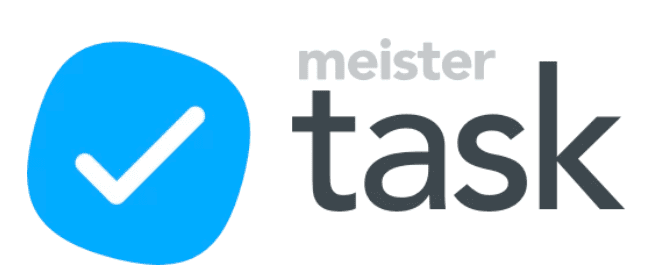
MeisterTask is a premier task management platform designed to enhance the productivity and alignment of teams across any industry. Known for its intuitive interface, MeisterTask facilitates a seamless integration into your team’s workflow, allowing for easy setup and adoption. By enabling team members to collaborate effectively, track progress, and manage tasks efficiently, it serves as an essential tool for teams striving for operational excellence. Whether you’re coordinating simple projects or complex initiatives, MeisterTask offers the tools and flexibility needed to ensure your team performs at its best.
Features
MeisterTask is one of the most intuitive task management tools out there with innovative features tailored for both individual productivity and team collaboration. Its core capabilities include robust task management that allows users to create, assign, and track tasks effortlessly. Enhanced project management features facilitate the planning and execution of projects with precision. For communication, MeisterTask offers built-in tools that ensure seamless interactions among team members. Additionally, it supports comprehensive project documentation, enabling teams to maintain all necessary information in an organized and accessible manner. The platform is also designed to be scalable, efficiently accommodating teams of varying sizes and complexities.
Rating:
Best Feature:
Online project and team collaboration management
Pricing
MeisterTask offers diverse pricing plans to cater to varying needs. The Basic plan is free and ideal for individual users, featuring essential task management, up to 3 projects, and unlimited members. The Pro plan costs $9 per user/month, adding unlimited projects, external sharing, and automation. At $16 per user/month, the Business plan introduces subtasks, timelines, and custom fields. For large organizations, the Enterprise plan provides tailored pricing and includes a dedicated account manager and personalized onboarding, addressing specific enterprise requirements.
Pro Plan:
Unlimited project, unlimited tasks, and 200 MB per file
Pro Plan Price:
$9 per user per month
#21. ProjectManager.com

ProjectManager.com is a leading provider of award-winning project and work management software designed to facilitate team collaboration in managing projects, resources, and tasks online. With a focus on streamlining project execution, this intuitive platform enables teams across various industries to plan, track, and deliver projects with precision and efficiency. The user-friendly interface ensures a quick adaptation for new users, minimizing setup time and maximizing productivity. Professionals looking to enhance their project outcomes can start with a free trial, leveraging the software’s robust features to execute any project process or methodology on one simple-to-use platform.
Features
ProjectManager.com equips teams with advanced tools to streamline project management efficiently. Key features include detailed Gantt charts for precise planning, task lists, and customizable Kanban boards for effective task management. The platform’s real-time dashboards and portfolio management tools provide critical insights into project status and resource allocation, ensuring that project deliverables meet quality standards and timelines. Additionally, automated workflow capabilities and project timesheets simplify administrative tasks, boosting productivity. The mobile app ensures accessibility, allowing project management on the go. These tools support a variety of project methodologies, making ProjectManager.com a versatile choice for dynamic professional environments.
Rating:
Best Features:
Kanban board and Gantt charts (for detailed planning, visualization of workflows, and execution)
Pricing
ProjectManager.com offers tiered pricing, starting with the Team plan at $13 per user per month when billed annually or $16 monthly. This plan supports up to 10 users and 20 projects, including unlimited tasks, comments, and 5GB of storage. The Business plan, at $24 when billed annually or $28 monthly, expands capabilities to 100 projects and adds resource management, advanced reporting, and 25GB of storage. The Enterprise level provides customized solutions with unlimited projects and storage, enhanced security, and dedicated support. This is ideal for large organizations with multifaceted needs. Features across plans include mobile app access, various project view options, and integration capabilities.
Business Plan:
No user limits, up to 100 projects, and 25GB of file storage
Business Plan Price:
$24 per user/month billed annually or $28 billed monthly
#22. Hive

Hive stands out as a premier project management tool, tailored for teams that demand efficiency and flexibility in their workflows. Designed to enhance workplace productivity, Hive has been widely tested and proven by leading global companies like Google, Toyota, and Comcast, ensuring its capability to handle the fast-paced demands of any industry. This platform simplifies project management by offering an all-in-one suite where teams can track tasks, collaborate seamlessly, and access hundreds of templates to jumpstart any project. With Hive, you get a zero-risk, 14-day free trial to fully explore its features. Whether you’re looking to streamline communications, boost efficiency, or enhance collaboration, Hive provides best-in-class functionality and the support necessary to achieve your goals.
Features
Hive provides an all-in-one project management solution that streamlines every aspect of team operations. Key features include diverse project layouts, enabling users to visualize tasks in the format that suits them best, from Gantt charts to Kanban boards. Its robust collaboration tools ensure seamless communication across team members. Time management features help track time spent on tasks, enhancing productivity. Hive also offers extensive customization options to tailor workflows to specific needs. Powerful automations save time by streamlining repetitive tasks, while comprehensive reporting and analytics offer deep insights into project performance. Additionally, Hive supports a wide range of integrations, further enhancing its utility by connecting with other tools used by teams.
Rating:
Best Features:
Flexible project hierarchies and seamless, agile management
Pricing
Hive offers flexible pricing plans to suit various needs, beginning with a Free Plan that includes 200MB storage, up to 10 workspace members, and unlimited tasks, ideal for light project management. The Starter Plan, at $1.50 per user per month, builds on this by adding unlimited storage, up to 10 projects, and advanced features like Gantt views and cloud storage integrations. For larger teams, the Teams Plan at $5 per user per month includes everything in the Starter Plan plus the ability to handle up to 50 workspace members, with added functionalities like time tracking, unlimited workflows, and custom fields. For organizations seeking more flexibility, extra support, and enhanced security, the Enterprise Plan is available—prospective users should contact sales to tailor a package to their specific needs. Hive also offers significant savings with yearly billing, enhancing affordability for long-term users.
Teams Plan:
Up to 50 workspace members and unlimited projects, users, and workflows
Teams Plan Price:
$5 per user per month
#23. TeamGantt

TeamGantt’s project management tool elevates the way companies like Amazon, Netflix, Nike, and Intuit plan and execute their projects. As a top-rated, free Gantt chart tool, TeamGantt offers an intuitive platform centered around a visual timeline, simplifying task scheduling and team collaboration. With the ability to invite clients and teammates to engage in real-time project updates, TeamGantt ensures efficient workflow integration without a steep learning curve. Whether you’re looking to manage a small team project or a large-scale corporate initiative, TeamGantt’s user-friendly interface and robust features make it one of the easiest and most effective ways to stay on track and achieve project success.
Features
TeamGantt offers a robust suite of features designed to optimize project management and enhance team collaboration. With drag-and-drop simplicity, users can easily adjust timelines and reorder tasks, making it simple to manage project details on the fly. A standout feature is the ability to view all projects simultaneously in a single Gantt chart, providing a clear overview and facilitating better resource management. The tool also includes comprehensive workload and team availability tabs to prevent over-scheduling and ensure balanced task distribution. Additional capabilities include easy collaboration tools, real-time progress updates, file storage, and the option to print detailed project timelines. TeamGantt’s mobile-friendly design and compatibility across different operating systems ensure access and functionality from virtually anywhere, enhancing productivity and team connectivity.
Rating:
Best Feature:
Free Gantt chart maker
Pricing
TeamGantt’s pricing structure emphasizes affordability and flexibility, charging only for managers while offering free access to collaborators. The Pro plan, at $59 per month per manager, allows the management of up to 20 projects featuring unlimited tasks and collaborators. This plan includes comprehensive Gantt chart features like calendar views, time tracking, and project boards. For those needing more extensive capabilities, the “Unlimited Everything” option offers unlimited managers, projects, and tasks, along with advanced features such as RACI, project health, and custom boards, available only on yearly billing. It also includes three custom training sessions. For individual users or small teams, there is a free plan accommodating one manager, two collaborators, and up to 60 tasks—ideal for students or small projects.
Pro Plan:
Up to 20 projects with unlimited tasks and collaborators
Pro Plan Price:
$59 per month per manager
#24. Quickbase

Quickbase revolutionizes project management by being the first application platform designed explicitly for dynamic work. It’s a centralized hub where data and teams seamlessly integrate, simplifying complex project management tasks. Quickbase provides end-to-end visibility by consolidating information in a single, easy-to-use platform. This enables businesses to mitigate risks, reduce waste, and manage costs effectively. With automated workflows and precise permissions, Quickbase ensures that the right people have access to the right information, streamlining processes and enhancing collaboration. Say goodbye to scattered data and disjointed teams—Quickbase empowers you to focus on what truly matters: achieving project success efficiently and effectively.
Features
Quickbase’s Dynamic Work Management solutions offer a range of crucial features tailored for businesses of all sizes. The Builder tool enables the creation of customized applications to handle complex projects and processes efficiently. Integrations seamlessly connect external data sources with Quickbase applications, providing real-time insights in one centralized location. Automation tools boost productivity by streamlining workflows, reducing manual errors, and handling repetitive tasks. Insights streamline critical information management for complex projects, while innovative admin features ensure user management, application governance, and data integrity. Mobile capabilities empower field operations with real-time access to crucial information, enhancing collaboration and faster decision-making.
Rating:
Best Features:
Project management and resource management solutions
Pricing
Quickbase offers a free 30-day trial for businesses to explore its benefits. The Team plan starts at $35 per user per month, with a minimum of 20 users, catering to growing teams with features like a template library, personalized dashboards, and mobile app access. The Business plan, starting at $55 per user per month with a minimum of 40 users, suits organizations managing complex processes, offering additional features like single sign-on and FDA & HIPAA compliance. For enterprise-wide needs, the fully customizable Enterprise plan provides advanced tools, security controls, and governance APIs, with pricing based on specific user requirements.
Team Plan:
A great starting point for growing teams, a minimum of 20 users, and personalized dashboards
Team Plan Price:
Starts at $35 per user per month, priced annually
#25. KissFlow

Kissflow is a low-code application development platform designed to facilitate digital transformation across enterprises. Tailored for various user personas, it’s the preferred choice of leading global brands such as Pepsi, Motorola, and World Vision. Kissflow empowers teams to convert ideas into operational realities without needing extensive coding knowledge, thanks to its no-code, automated workflows. The platform enhances productivity with advanced case management and integrates seamlessly with essential systems, offering customized, actionable insights. With its robust reporting and analytics capabilities, Kissflow enables better decision-making through visually engaging data presentations on a flexible interface.
Features
Kissflow stands out as a powerful low-code application development platform, expertly blending simplicity with robust functionality to deliver swift value. Its comprehensive features include the App Builder, which allows the creation of fully functional enterprise applications using intuitive no-code and low-code tools. The platform also offers Boards for enhanced visibility into projects and tasks and a Process Builder for optimizing operations with advanced automation. Additionally, the Form Builder simplifies the design of powerful forms. Kissflow’s strong focus on data is evident in its detailed Reporting & Analytics capabilities. Collaboration is streamlined within the same workspace, and extensive Integrations facilitate system enhancement. External Portals enable user interaction beyond the organization, while Governance features provide complete control over apps and user activities. The Decision Tables feature supports the management of complex decision logic, ensuring efficient digital workflow management.
Rating:
Best Feature:
No-code, automated workflows for collaborative development
Pricing
Kissflow’s pricing structure is thoughtfully designed to cater to diverse organizational requirements. The entry-level Basic plan, priced at $1,500 per month, is perfectly suited for organizations with simple internal use cases, providing essential features without overwhelming complexity. For organizations with more demands, the Enterprise plan offers a comprehensive suite of features. It supports both internal and external users and includes access to a private cluster, ensuring robustness and security for complex operations. This plan is highly adaptable, offering custom pricing to meet specific needs and scales of businesses, making it an ideal solution for companies looking to expand or streamline their operations with powerful workflow automation and management tools.
Basic Plan:
Limited features, simple use cases, internal users
Basic Plan Price:
$1,500 per month
Methodology to Choose the Best Project Management Software
The above “best of” list was carefully curated from over 50 project management software commonly used by small businesses. In determining the inclusions, we took into consideration several factors, such as:
- Cost and Fees. Keeping a tight budget in mind, we selected project management software options priced at under $8 per month per user to suit the needs of small businesses.
- Ease of use. The software options included in this list are designed to be user-friendly and easy for anyone on your team to learn with minimal tech training. They offer features like pre-built templates to simplify the learning process. To use with minimal tech training. The software options on this list provide tools to keep the learning curve manageable, such as pre-built templates.
- Features and Functionality: In choosing the project management software for this list, we evaluated their ability to provide standard project management features (such as Kanban and Gantt charts), and the capability to tailor the experience to meet specific business needs requirements, including through integrations or automation tools. charts) and customize the project management experience to your company’s needs via integrations or automation tools.
- Customer reviews. Nothing tells you more about a purchase choice than what other customers who have used it think. We chose project management software options with a minimum of 3.5-star ratings across their customer bases.
- Customer support. Implementing new software into company processes can raise questions, so we prioritized solutions with adequate customer support to resolve these challenges efficiently.
Project management software is a digital tool or platform businesses or individuals utilize to organize, plan, and manage projects. This software aids in allocating and tracking project resources, scheduling timelines and tasks, assigning responsibilities, tracking progress, implementing knowledge and ideas, and collaborating with team members to complete projects successfully. In addition to streamlining project-related tasks, project management software provides document storage, search, and organizational features that aid in overall organization and workflow optimization.
Recommended article: 25 Advantages of Using Project Management Software
The Benefits of Project Management Software?
- Maximize your productivity by focusing on the right work with project management software. It helps to eliminate duplicate work and saves valuable time by streamlining the process of finding necessary materials.
- Reduce busy work and align tasks with the company’s overarching goals using project management software. Employees’ motivation levels and productivity increase by providing employees with a clear understanding of how their contributions impact the company’s success.
- Connect all of your business’s tools using project management software. Its dynamic platform allows you to connect all your tools in one place, from Slack communications to Dropbox files and Google Drive attachments.
- Use project management software to record all your projects and related tasks. This tool lets you store and manage information easily, providing stakeholders and teams quick access to the needed data.
- Improve cross-functional collaboration with project management software. This team collaboration tool brings together work, goals, and people across projects, teams, and departments, leading to a thriving and interconnected organization.
- Keep all your work safely stored with project management software. By storing everything on the cloud, you can stay organized and reduce the risk of losing data or work while maintaining your privacy.
Guide for Buying Project Management Software

A project management software buying guide is a helpful tool for newcomers to the field. It offers guidance and information to aid in the decision-making process when acquiring such software.
It usually covers various available software options, their features and advantages, pricing details, and other essential considerations influencing the choice.
Main Points while Looking for a Project Management Software
- Identify your project management needs: Determine what specific features and functionality your team requires in a project management software. This can include task assignments, timelines, budget tracking, and collaboration tools.
- Evaluate different software options: Research and compare other project management software options based on your identified needs. Look for software that has a proven track record and positive customer reviews.
- Consider scalability: Choose software that can grow with your team and business. It should be able to handle increasing numbers of projects and team members.
- Integration with other tools: Consider if the software can integrate with other tools your team is already using, such as email, calendars, and document management systems.
- User-friendly interface: Make sure the software is easy to use and navigate. A clean, intuitive interface will help ensure your team uses the software.
- Mobile accessibility: Check if the software can be accessed on mobile devices. This can be especially important for teams that are frequently on the go.
- Security and data privacy: Ensure the software provider has strict privacy protocols to protect your team’s data.
- Support and training: Look for a software provider that offers excellent support and training resources. This will ensure your team can quickly get up to speed and make the most of the software.
- Cost: Compare the costs of different software options and choose one that fits within your budget. Remember that free or low-cost options may not include all the features your team needs.
#1. Identify your Project Management Needs
- Define the project scope: Clearly define the project’s objectives, goals, and constraints or limitations. This will help you identify the specific features and functionality the project management software will need to support.
- Assess team needs: Consider your team’s size, composition, and specific roles and responsibilities. This will help you identify any collaboration or communication tools necessary for the software.
- Evaluate current processes: Assess your project management processes and identify any areas that could be improved with the help of project management software. This can include task assignments, timelines, budget tracking, and reporting.
- Consider scalability: Think about how the project and your team may change in the future. Will the software accommodate an increasing number of projects and team members?
- Identify integrations: Identify any other tools or systems that your team is currently using, such as email, calendars, or document management systems. Look for project management software that can integrate with these tools.
- Mobile accessibility: determine if your team needs to access the software while they are on the move.
- Security and data privacy: Consider how sensitive the project data is and ensure that the software provider has strict security and privacy protocols to protect your team’s data.
- Support and training: Identify the support and training resources your team will need to use the software effectively.
- Cost: Determine the budget for the software and consider the cost of implementation, maintenance, and training.
#2. Evaluate Different Project Management Software Options
- Research and compare: Research different project management software options and compare them based on the features and functionality that you have identified as necessary for your team. Look for software that has a proven track record and positive customer reviews.
- Test the software: Some project management providers offer free trials or demos. Take advantage of these opportunities to test the software and see if it meets your team’s needs.
- Look for scalability: Consider if the software can accommodate increasing projects and team members as your team and business grow.
- Check for integrations: Verify if the software can integrate with other tools that your team is already using, such as email, calendars, and document management systems.
- Evaluate the user interface: Assess if the software is easy to use and navigate. A clean, intuitive interface will help ensure your team uses the software.
- Mobile accessibility: Check if the software can be accessed on mobile devices. This can be especially important for teams that are frequently on the go.
- Security and data privacy: Ensure the software provider has strict privacy protocols to protect your team’s data.
- Support and training: Look for a software provider that offers excellent support and training resources. This will ensure that your team can quickly get up to speed and make the most of the software.
- Cost: Compare the costs of different software options and choose one that fits within your budget. Remember that free or low-cost options may not include all the features your team needs.
- Talk to current users: Reach out to current users of the software and ask for their feedback. This can give you a good idea of what to expect from the software and how well it works in practice.
#3. Consider Scalability
Scalability in project management software refers to the ability of the software to accommodate an increasing number of projects and team members as your team and business grow. This includes the ability to handle more significant amounts of data and the ability to support more users. Scalability is essential because it ensures that your project management software can grow with your business rather than becoming a bottleneck as your team and projects expand.
Scalability can also refer to the software’s ability to handle different levels of complexity and project sizes. Some software may only suit small teams and projects, while others can handle large, enterprise-level projects.
In summary, scalability in project management software is the software’s ability to handle increasing numbers of projects, team members, and complexity and integrate with other tools and systems. This will ensure that the software can grow with your team and business rather than become a bottleneck as you expand.
#4. Integration with Other Tools
Integration with other tools refers to the ability of project management software to connect and work seamlessly with other software and systems that your team is already using. This can include tools such as email, calendars, document management systems, and other project management software.
Integration can help your team avoid data silos and ensure that everyone has access to the same information at all times. It can also help automate specific tasks, such as updating task assignments and timelines, saving time, and improving efficiency.
When evaluating project management software options, look for software that offers a wide range of integrations, including popular tools such as:
- Email: integrate project management software with your email client, allowing team members to receive updates and notifications directly in their inbox
- Calendar: integrate with calendar tools such as Google Calendar, Outlook, or iCal, to share project schedules and deadlines
- File storage: integrate with cloud-based file storage and sharing tools, such as Google Drive, Dropbox, or OneDrive, to share project-related documents and files
- Productivity tools: integrate with tools like Trello, Asana, or Basecamp to manage tasks and collaborate on projects
- Time tracking: integrate with time tracking software like Toggl, Harvest, or Time Doctor to track hours spent on tasks and projects
- Accounting software: integrate with accounting software like QuickBooks, Xero, or Zoho Books to track budget and expenses
Not all software providers offer the same integrations, so check for compatibility with the tools your team is currently using.
In summary, integration with other tools refers to the ability of a project management software to connect and work seamlessly with other software and systems that your team is already using. This can help automate specific tasks, save time and improve efficiency, and avoid data silos.
#5. User-friendly Interface
A user-friendly interface for project management software is easy to use and navigate. This means the software should have a clean, intuitive design with a clear and consistent layout, labels, and icons. The interface should be easy to understand, with features and functionality that are easy to access and use.
A user-friendly interface can include features such as:
- A dashboard that provides a quick and easy overview of the project status, upcoming tasks, and any outstanding issues
- A navigation menu that is clearly labeled and easy to use, allowing users to access different sections of the software quickly
- Task management tools that are easy to use, with clear labels and icons, and the ability to sort and filter tasks by different criteria
- Collaboration and communication tools that are easy to use, with clear labels and icons, and the ability to share information and updates with team members
- Reporting and analytics tools that are easy to use, with clear labels and icons and the ability to generate customized reports
- A search function that allows users to find specific tasks, projects, or team members quickly
- A mobile-friendly interface that allows users to access the software on their mobile devices can be essential for teams that are frequently on the go
A user-friendly interface can help ensure that your team will use the software, which can improve productivity and efficiency. It can also help reduce the time and resources needed for training, as the interface is simple and easy to understand.
In summary, a user-friendly interface with a clear and consistent layout, labels, and icons is easy to navigate. It should be easy to understand, with features and functionality that are easy to access and use. A user-friendly interface can help ensure that your team will use the software, which can improve productivity and efficiency.
#6. Mobile Accessibility
Mobile accessibility is essential for project management software because it allows team members to access the software and manage their tasks and projects from their mobile devices. This can be especially beneficial for teams that are frequently on the go or work remotely, as it allows them to stay connected and up-to-date with their projects even when they are away from their desk.
Here are a few specific reasons why mobile accessibility is important for project management software:
- Flexibility: With mobile accessibility, team members can work on their projects and tasks anytime, anywhere, increasing productivity and efficiency.
- Stay connected: Mobile accessibility allows team members to stay connected with their projects and team members, even when they are away from their desks, which can help reduce communication and coordination issues.
- Improved communication: Mobile accessibility allows team members to communicate and share information in real-time, which can help ensure that everyone is on the same page and working towards the same goals.
- Better task management: Team members can easily access and update their task assignments, timelines, and progress from their mobile devices, which can help ensure that projects stay on track and deadlines are met.
- Increased adoption: A mobile-friendly interface can improve the software’s adoption and usage among team members, who can easily access and use it on their mobile devices.
- Better collaboration: Mobile accessibility enables team members to collaborate on projects and tasks remotely, which can help to increase productivity and efficiency.
- Emergencies: In an emergency, mobile accessibility allows team members to stay connected and continue to work on their projects, even if they are away from the office or unable to access their computers.
In summary, mobile accessibility is essential for project management software because it allows team members to access the software and manage their tasks and projects from their mobile devices. This can increase productivity and efficiency, improve communication and collaboration, and increase software adoption among team members. It can also help ensure that projects stay on track and deadlines are met, even when team members are away from their desks or working remotely.
#7. Security and Data Privacy
Security and data privacy are essential with project management software because they protect sensitive and confidential information stored and shared within the software. This can include sensitive project information, financial data, and team members’ personal information.
Here are a few specific reasons why security and data privacy are essential with project management software:
- Compliance: Many industries have specific regulations and compliance standards that require the secure handling of sensitive information. Using project management software that meets these requirements can help ensure that your organization remains compliant and avoids costly fines and penalties.
- Protection of sensitive information: Project management software may contain sensitive financial, confidential business information, and team members’ personal information. Proper security measures can help protect this information from unauthorized access, theft, and loss.
- Maintaining trust: Your team members and clients trust you with their sensitive information. A security breach or data loss can cause severe damage to your reputation and loss of trust.
- Protecting against cyber-attacks: Project management software is a prime target for cyber-attacks, such as phishing, malware, and ransomware. Strong security measures can help protect against these attacks and prevent sensitive information from being compromised.
- Data Backup: Having a proper backup and disaster recovery plan ensures that your data is safe and can be recovered quickly in case of a security breach or data loss.
- Data privacy: Data privacy protects personal information, and it’s essential to ensure that data is collected, stored, and used according to laws and regulations.
When evaluating project management software options, look for software that offers strong security measures, such as encryption, multi-factor authentication, and regular software updates. It’s also important to check that the software provider has a clear and transparent data privacy policy and complies with relevant laws and regulations.
#8. Good Support and Training
Good support and training for project management software are essential to ensuring your team can use it effectively and achieve its goals.
Here are a few critical elements of good support and training for project management software:
- Accessible and responsive customer support: The software provider should offer various ways to contact them for help, such as email, phone, or live chat. They should also have a dedicated support team available during regular business hours and can provide timely and accurate responses to questions and issues.
- Comprehensive documentation: The software provider should offer detailed documentation and user guides that explain how to use the software, including step-by-step instructions and screenshots. This documentation should be easily accessible and updated regularly to reflect any changes or updates to the software.
- Onboarding and training resources: The software provider should offer onboarding resources, such as webinars, tutorials, and training videos, to help new users get started with the software. They should also provide ongoing training resources, such as webinars and online tutorials, to help users stay up-to-date with new features and best practices.
- Regular software updates: The software provider should release regular updates to fix bugs, improve performance, and add new features. They should also provide clear release notes and documentation to help users understand the changes and how they may affect their workflow.
- Integration support: The software provider should have a dedicated team to help you with any integration issues with other tools you use.
- Scalability support: As your organization grows, the software should be able to scale with your needs. The software provider should be able to help you with any scalability issues.
In summary, good support and training for project management software should include accessible and responsive customer support, comprehensive documentation, onboarding and training resources, regular software updates, Integration support, and scalability support. These elements can help your team effectively use the software and achieve their goals.
#9. Cost
Cost is essential when choosing project management software because it can significantly impact an organization’s overall budget and resources.
Here are a few specific reasons why the cost is essential when choosing a project management software:
- Budget constraints: Every organization has a budget, and ensuring that the software’s cost fits within that budget’s constraints is essential.
- Return on investment (ROI): The cost of the software should be balanced against the potential benefits and return on investment that the software can provide. It’s essential to consider the long-term value of the software and how it can improve productivity and efficiency within the organization.
- Scalability: The cost of the software should also be considered in light of the organization’s future growth plans. Will the software scale with the organization’s needs, or will additional costs be incurred as the organization grows?
- Subscription model: Some software providers offer a subscription model, which may have a lower upfront cost but require ongoing payments. It’s essential to consider the total cost of the software over the long term, including any additional fees for support, upgrades, and integrations.
- Hidden costs: Some software providers may charge additional fees for specific features or integrations. Understanding all of the expenses associated with the software, including any hidden costs, is essential before deciding.
- Free vs. Paid: Some software providers offer a free version, but these versions often have limited features and may require upgrading to a paid version to access certain features. It’s essential to consider the cost of the software and the features you need.
In summary, cost is important when choosing project management software because it can significantly impact an organization’s overall budget and resources. When evaluating the cost of the software, it’s important to consider budget constraints, return on investment, scalability, subscription model, hidden costs, and free vs. paid options.
100 Most Popular Features of Project Management Software
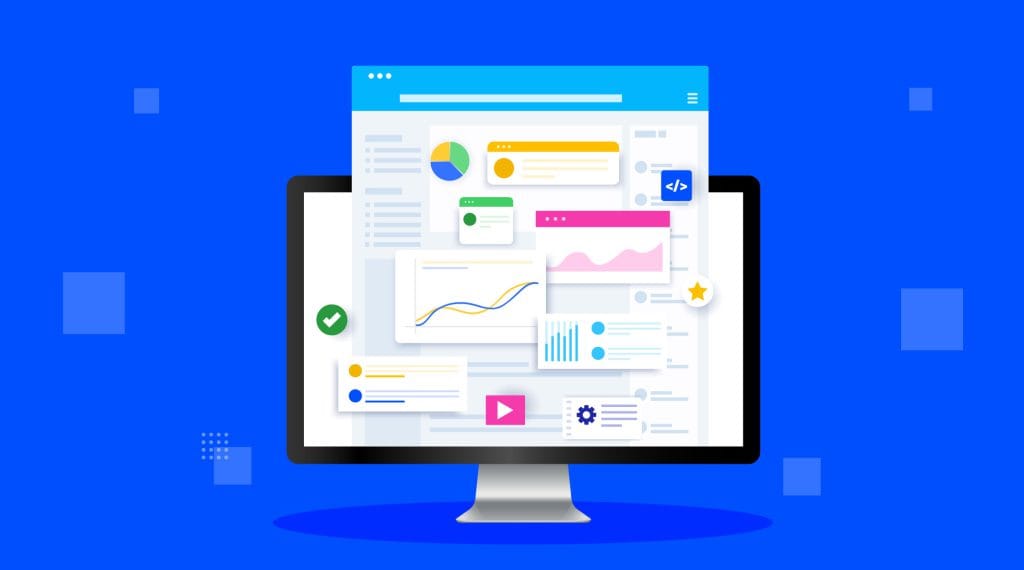
Basic features are essential in project management software to ensure successful project execution. Nevertheless, specific or distinctive features make some software more suitable for certain teams or businesses.
To pick the right project management tool, it’s crucial to conduct research and determine what unique features align with your team’s approach, business type, and project type for optimal outcomes.
To make the search easier, we’ve organized all the features into a convenient table. You can use the textbox below to search for any specific feature you require. You can also export this list to a timely Excel file.


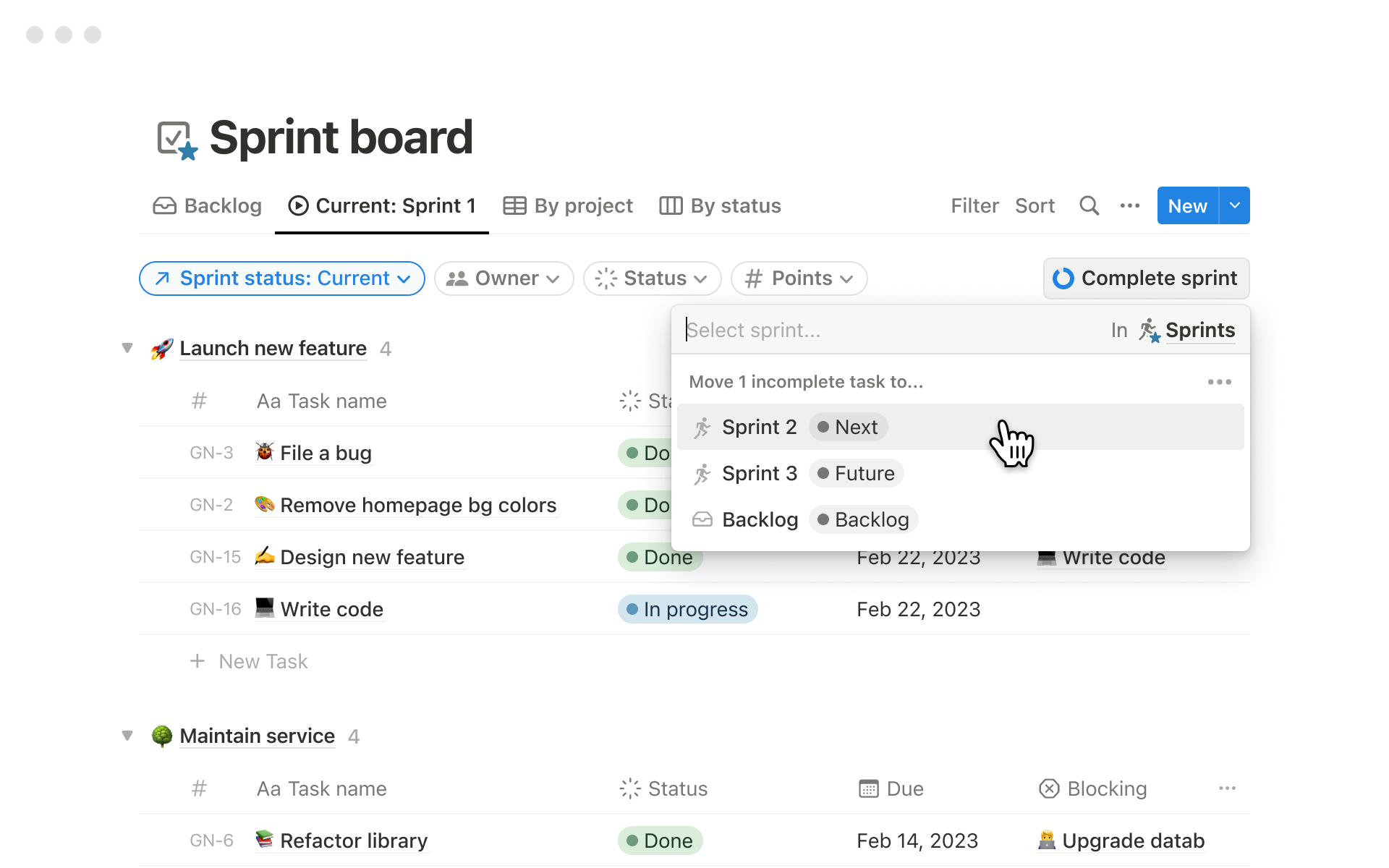
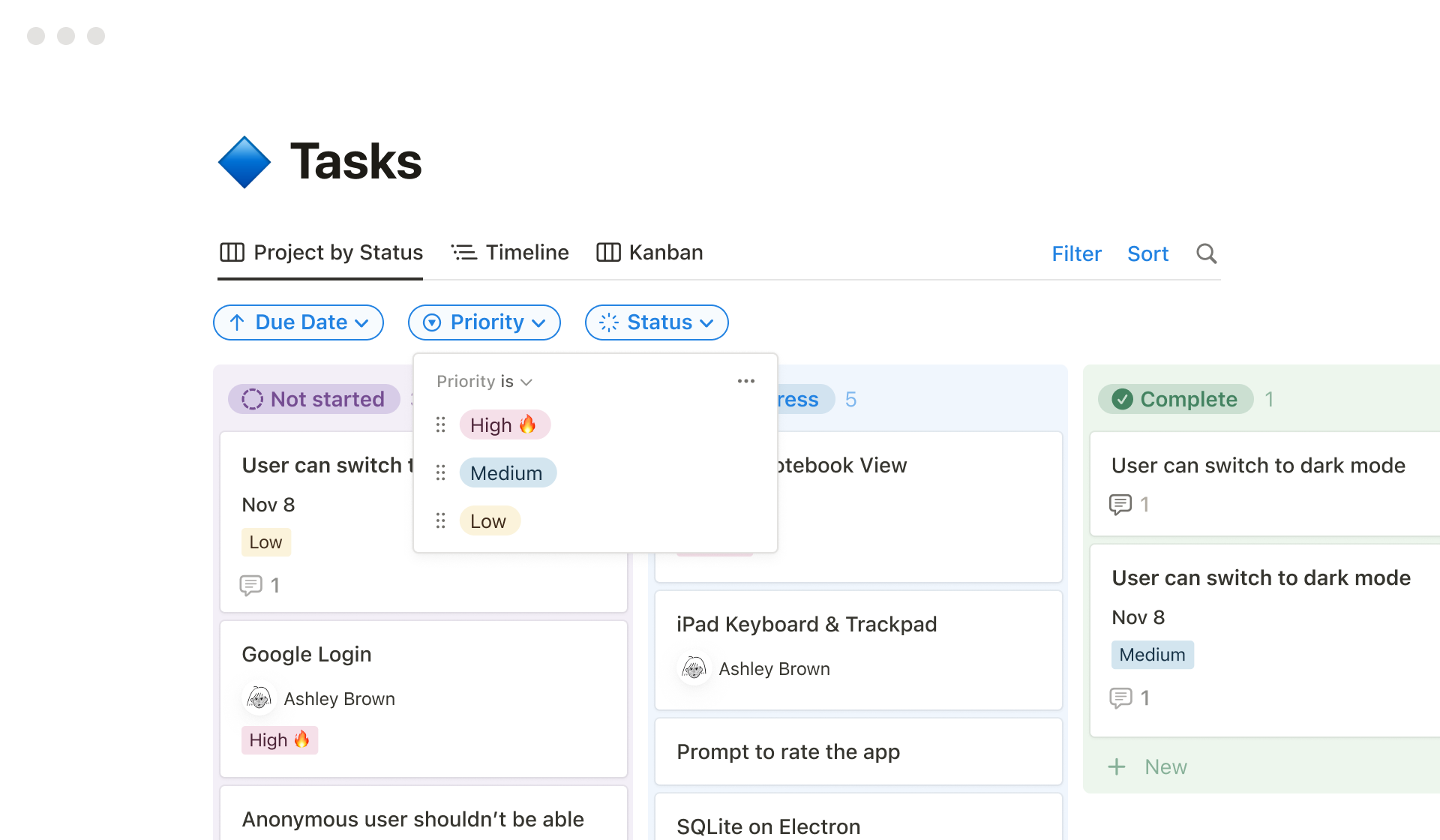
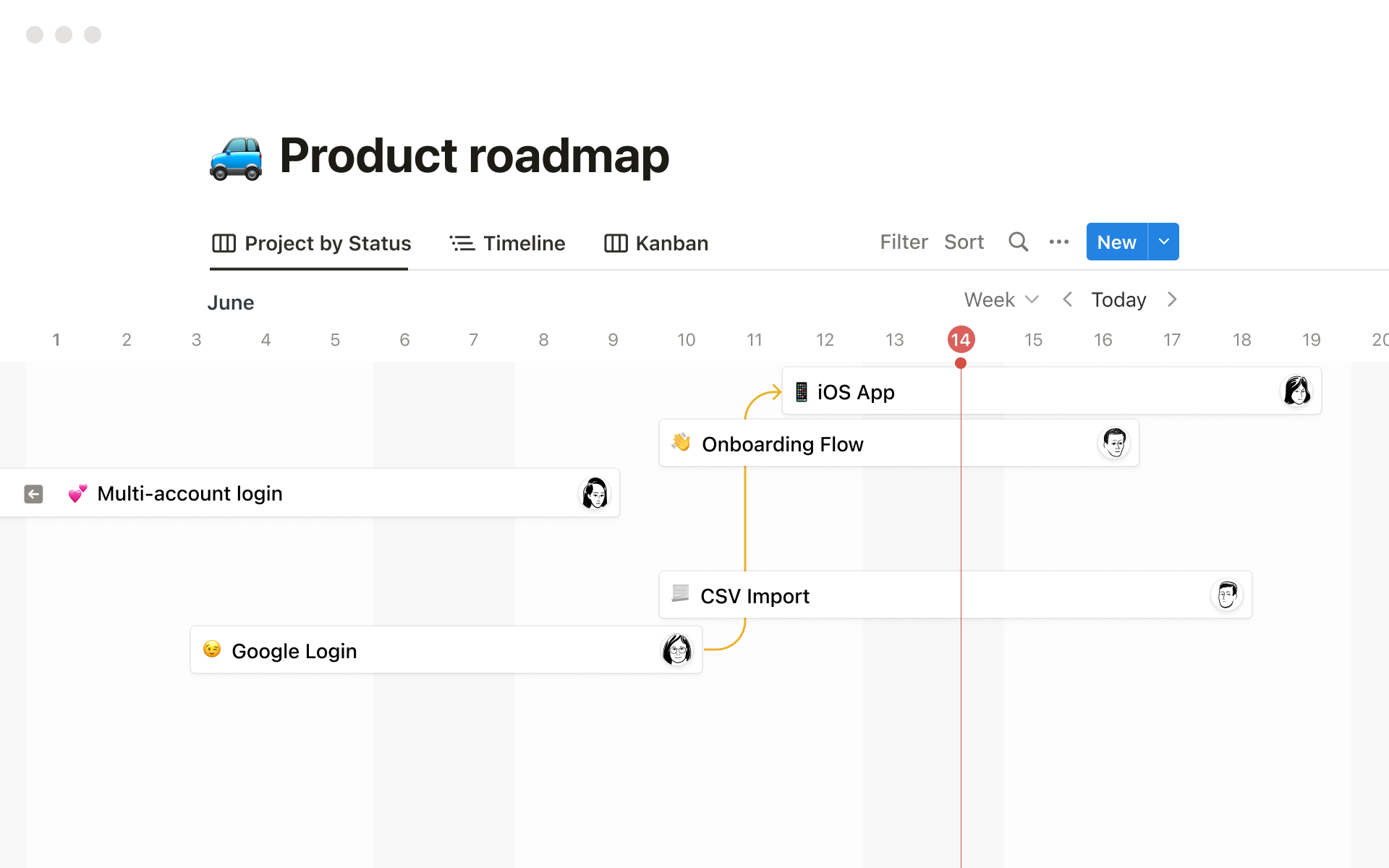
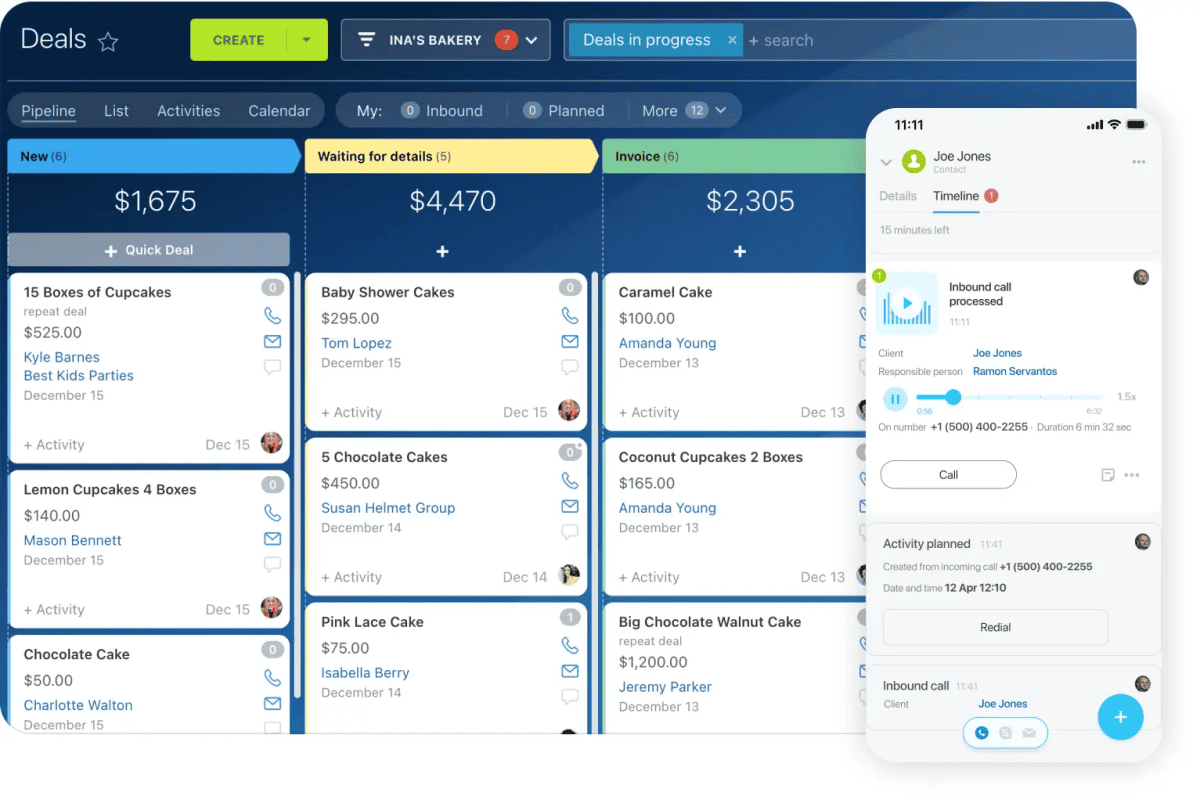
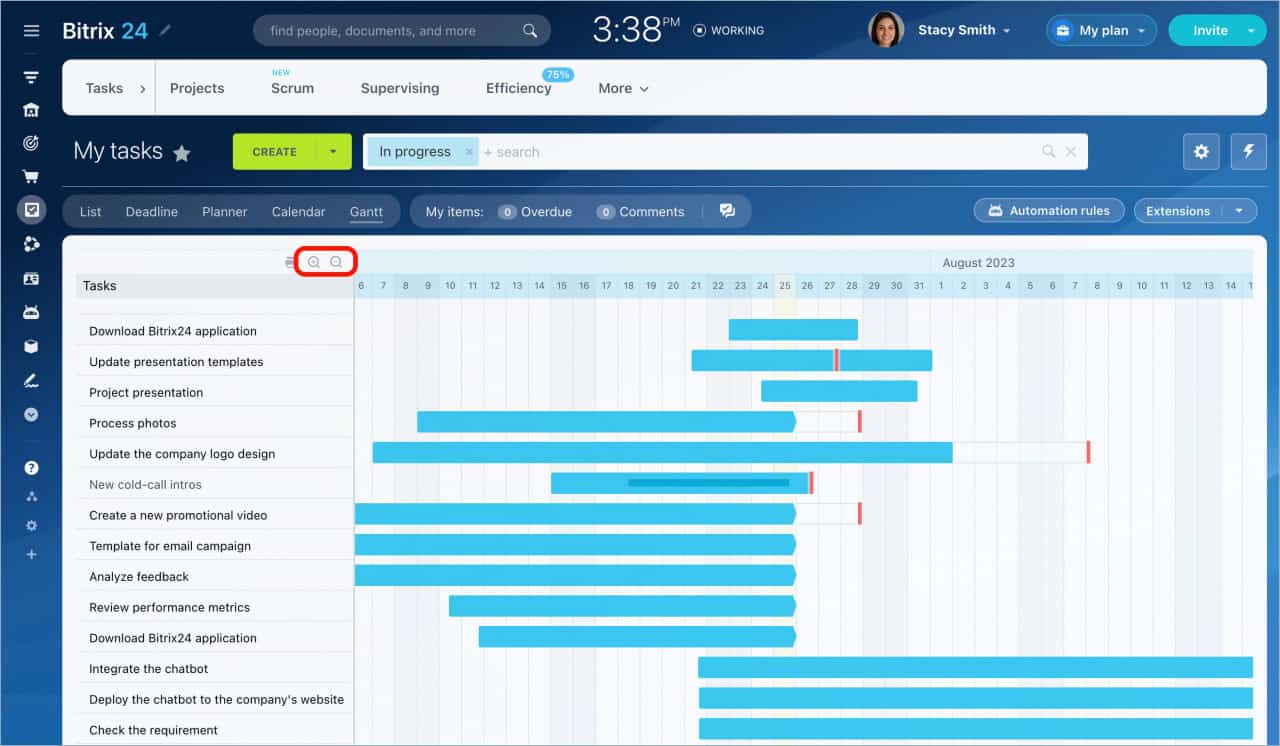
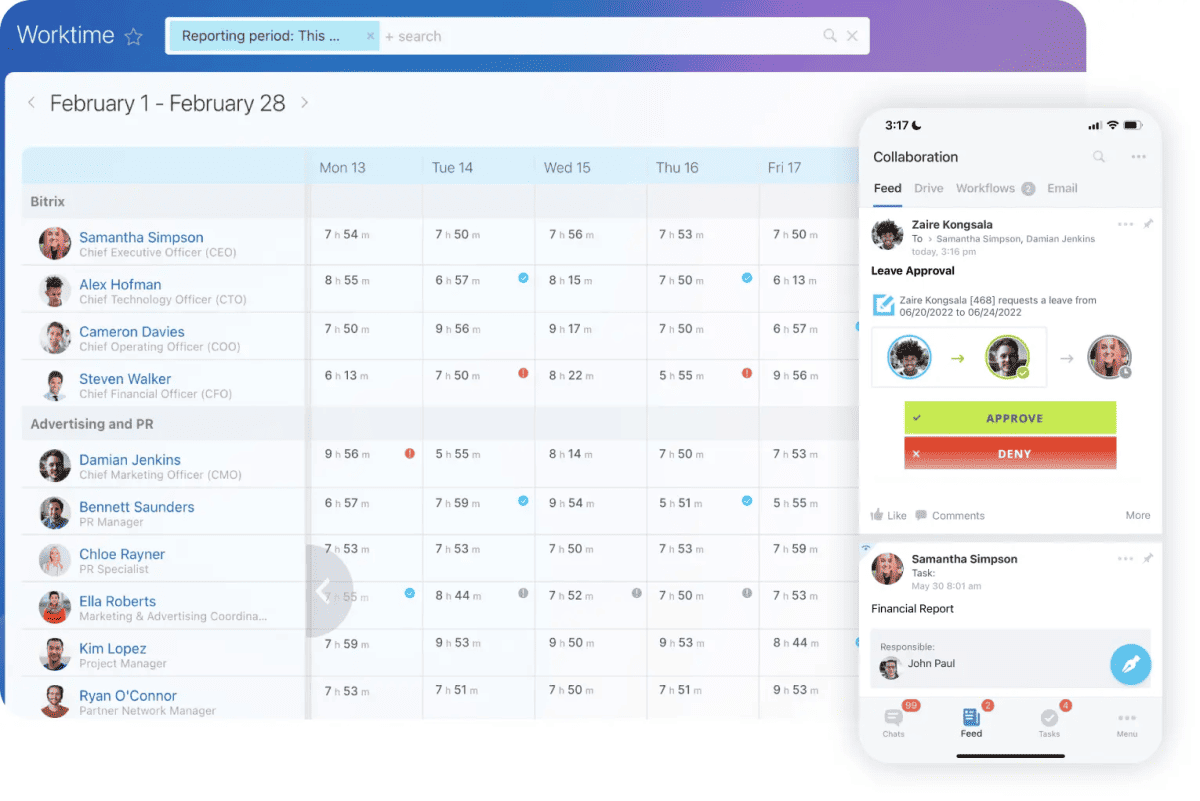
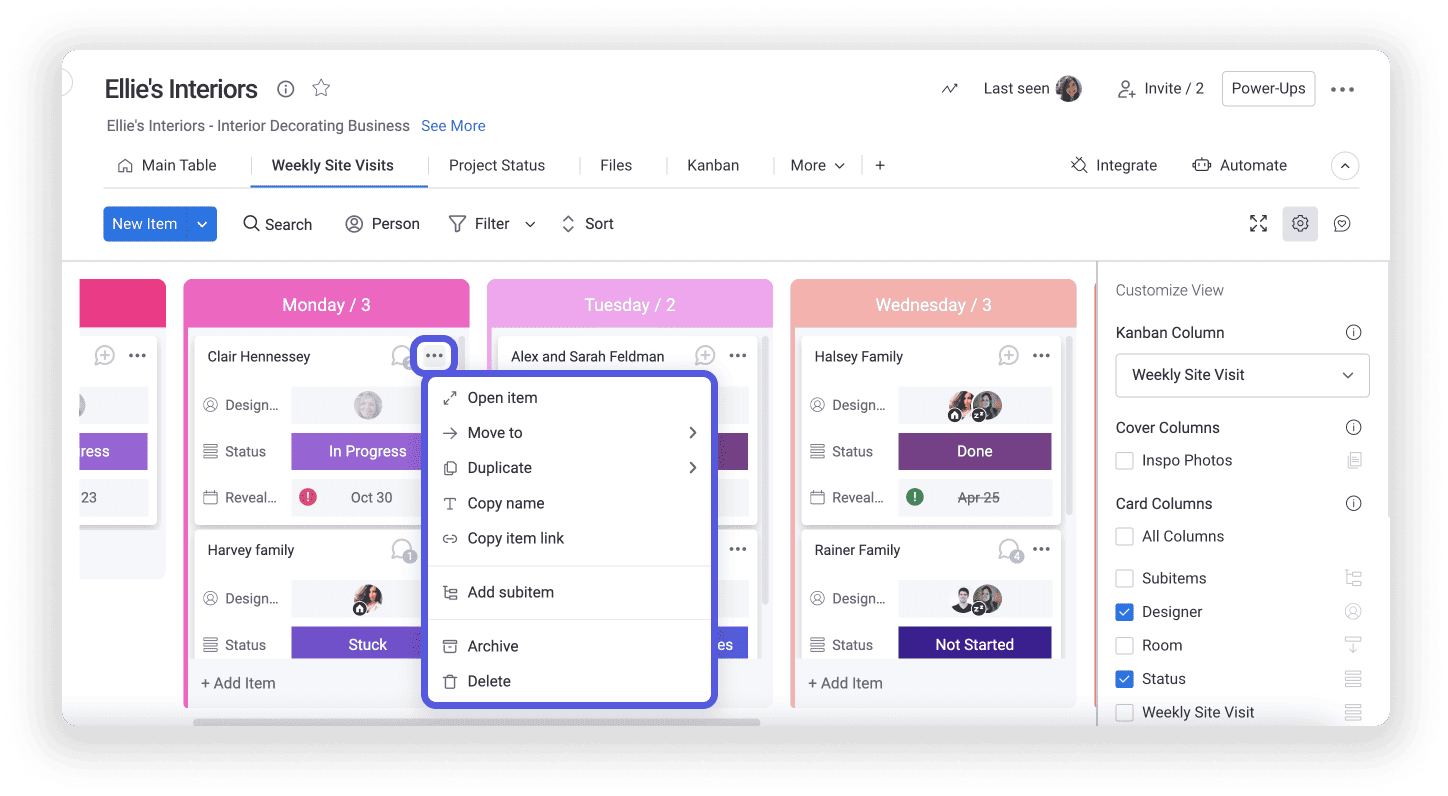
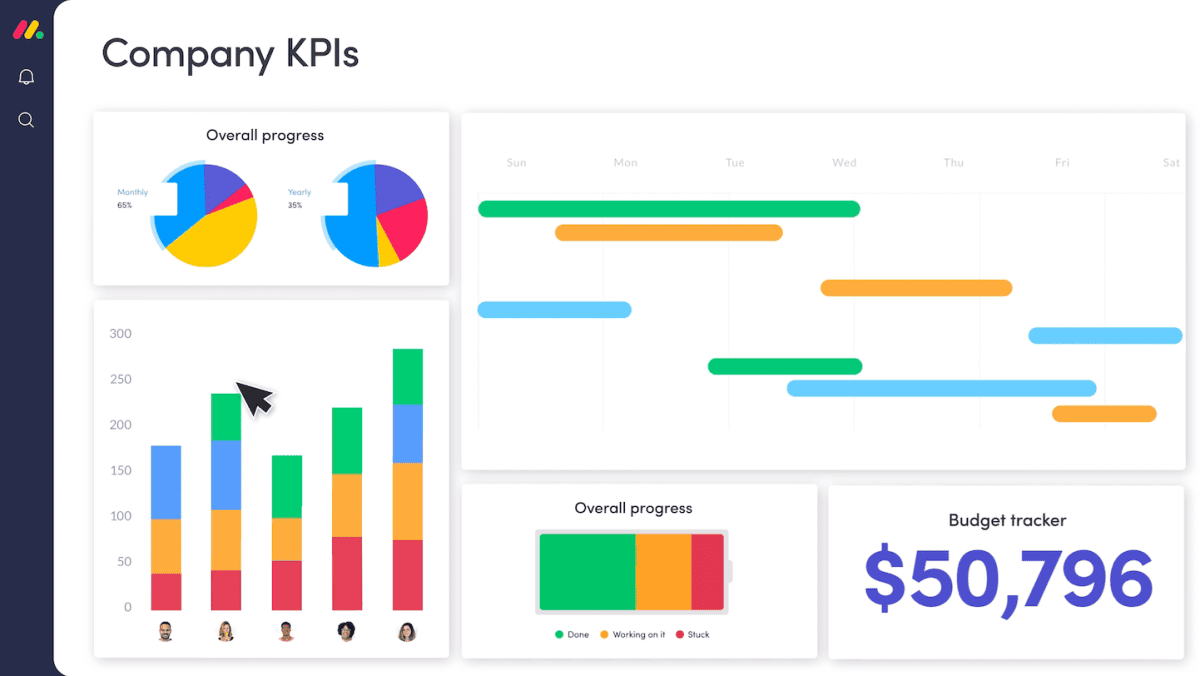
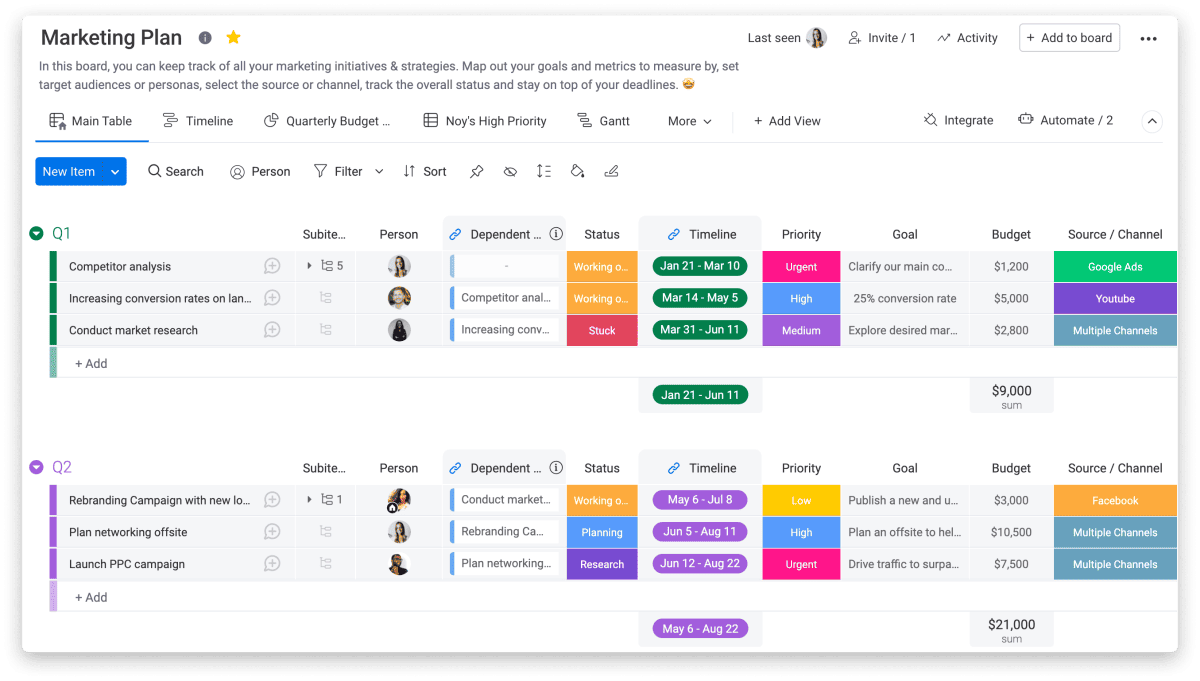
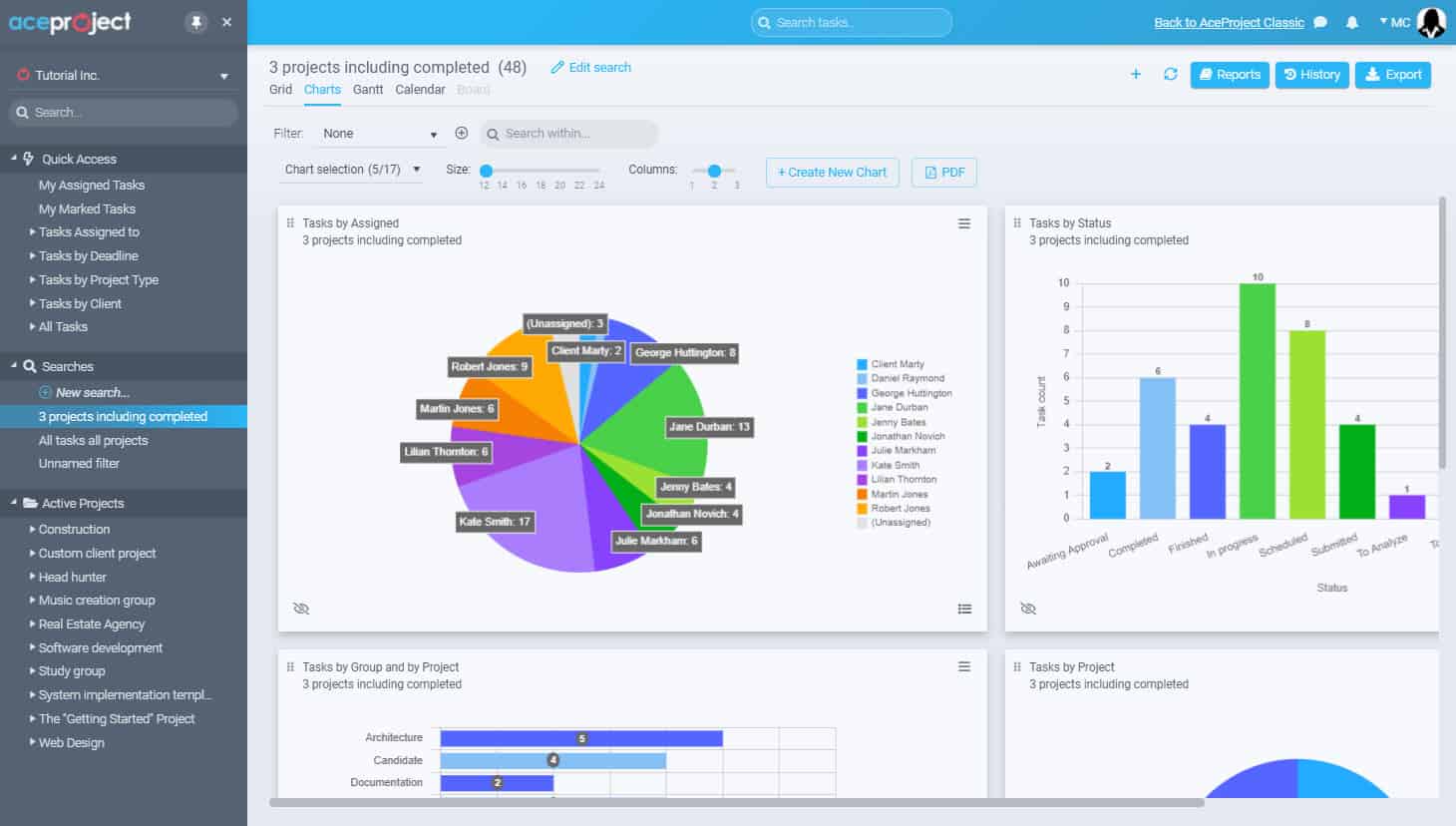
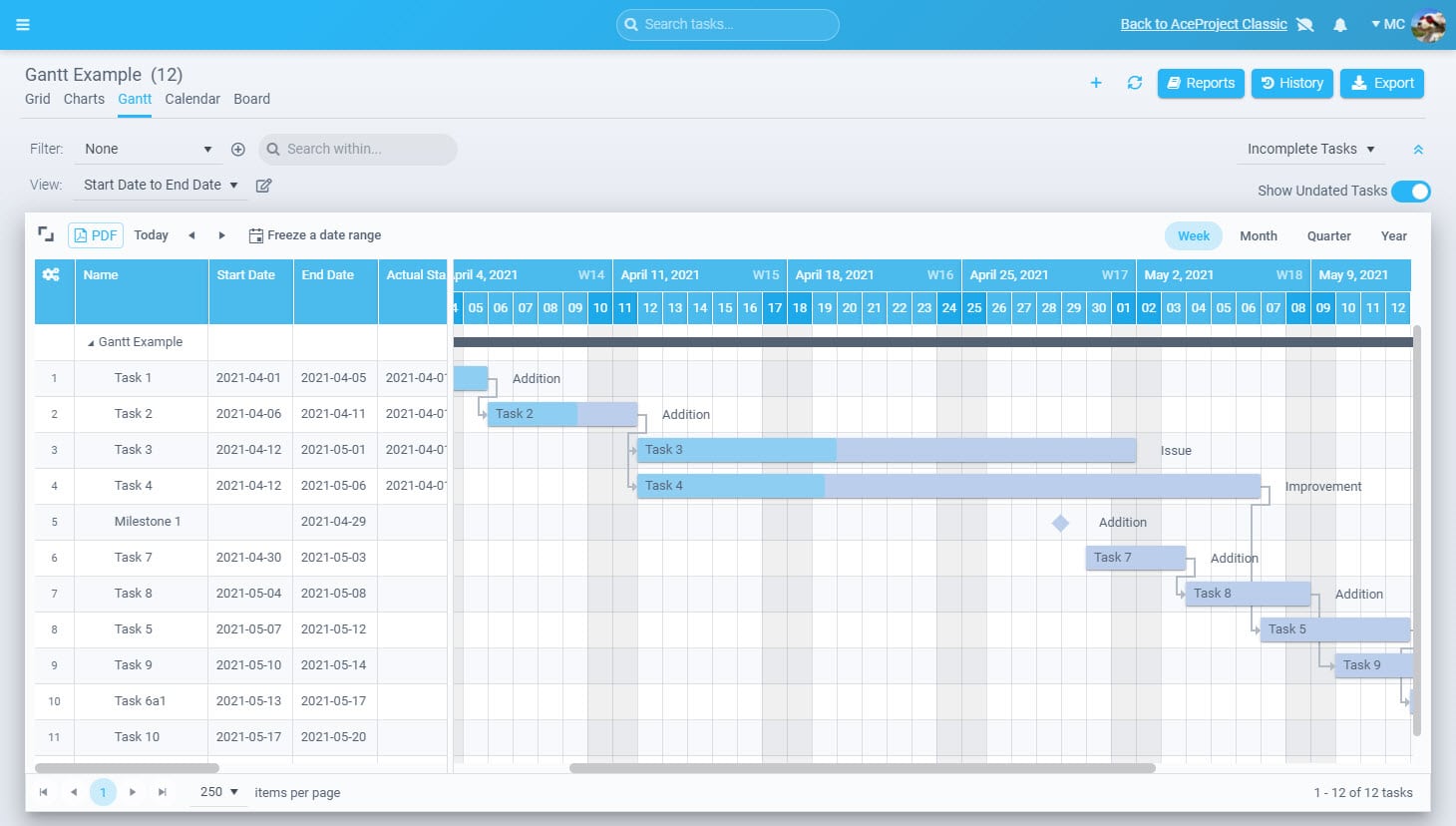
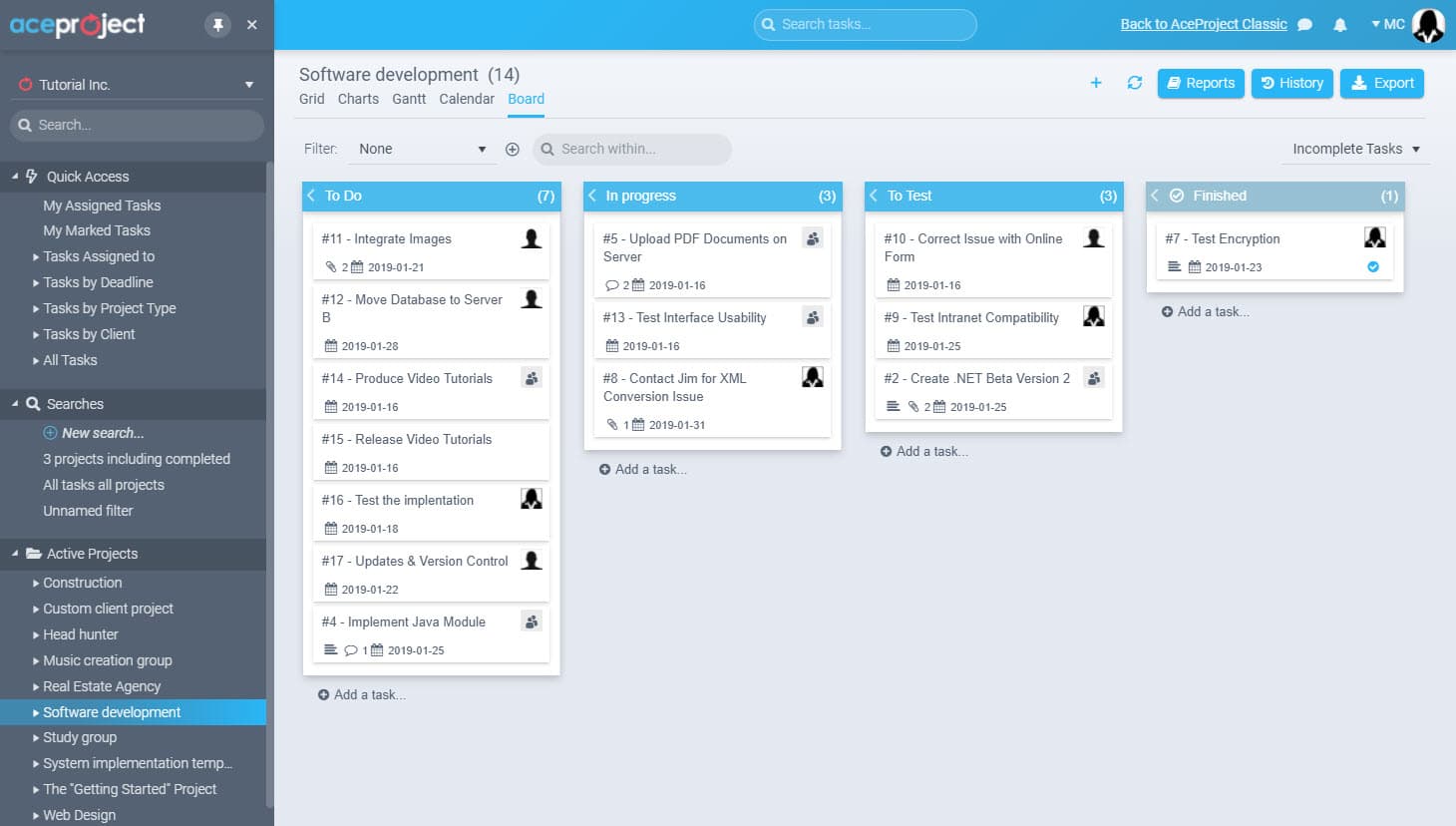
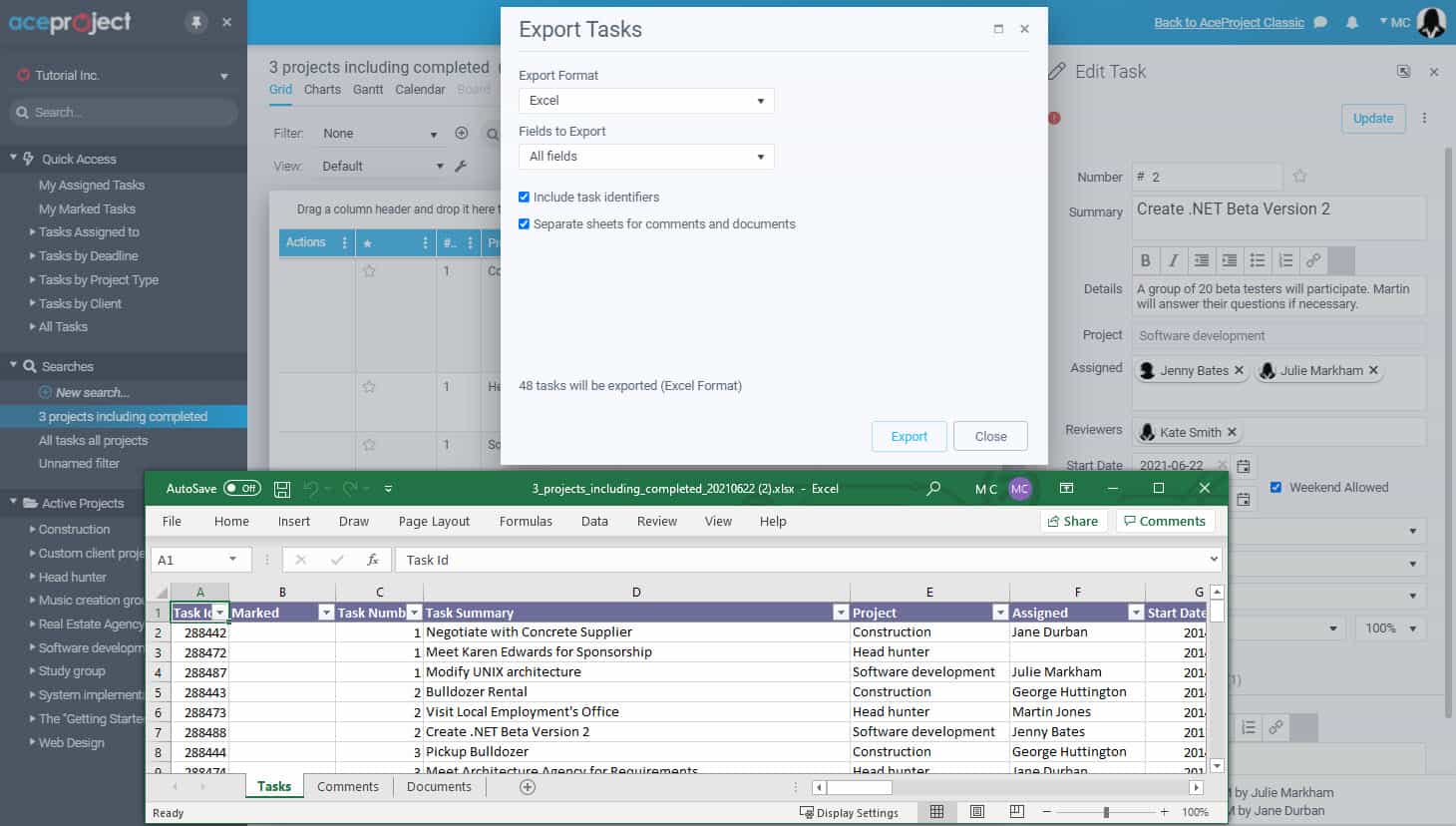
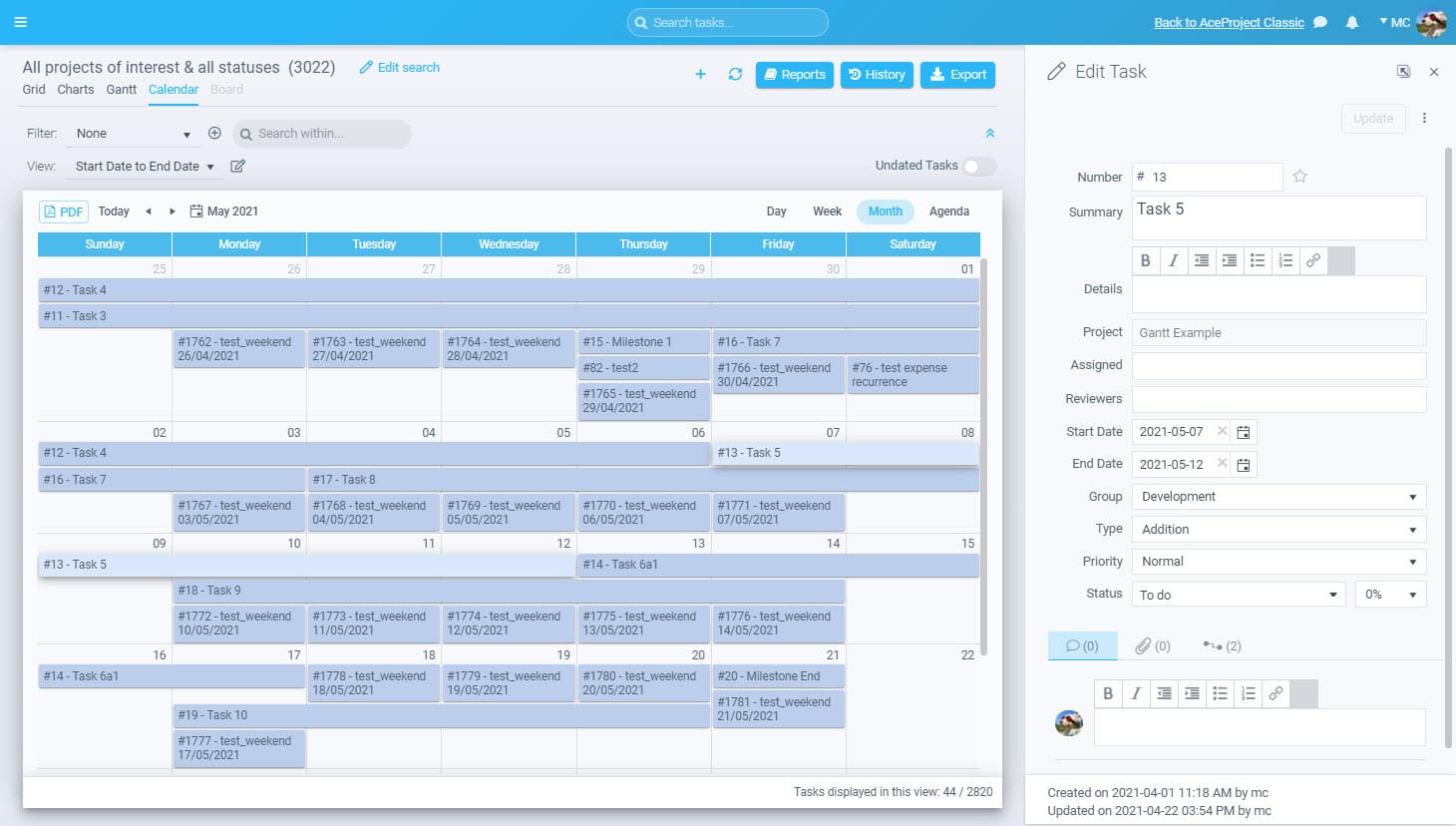
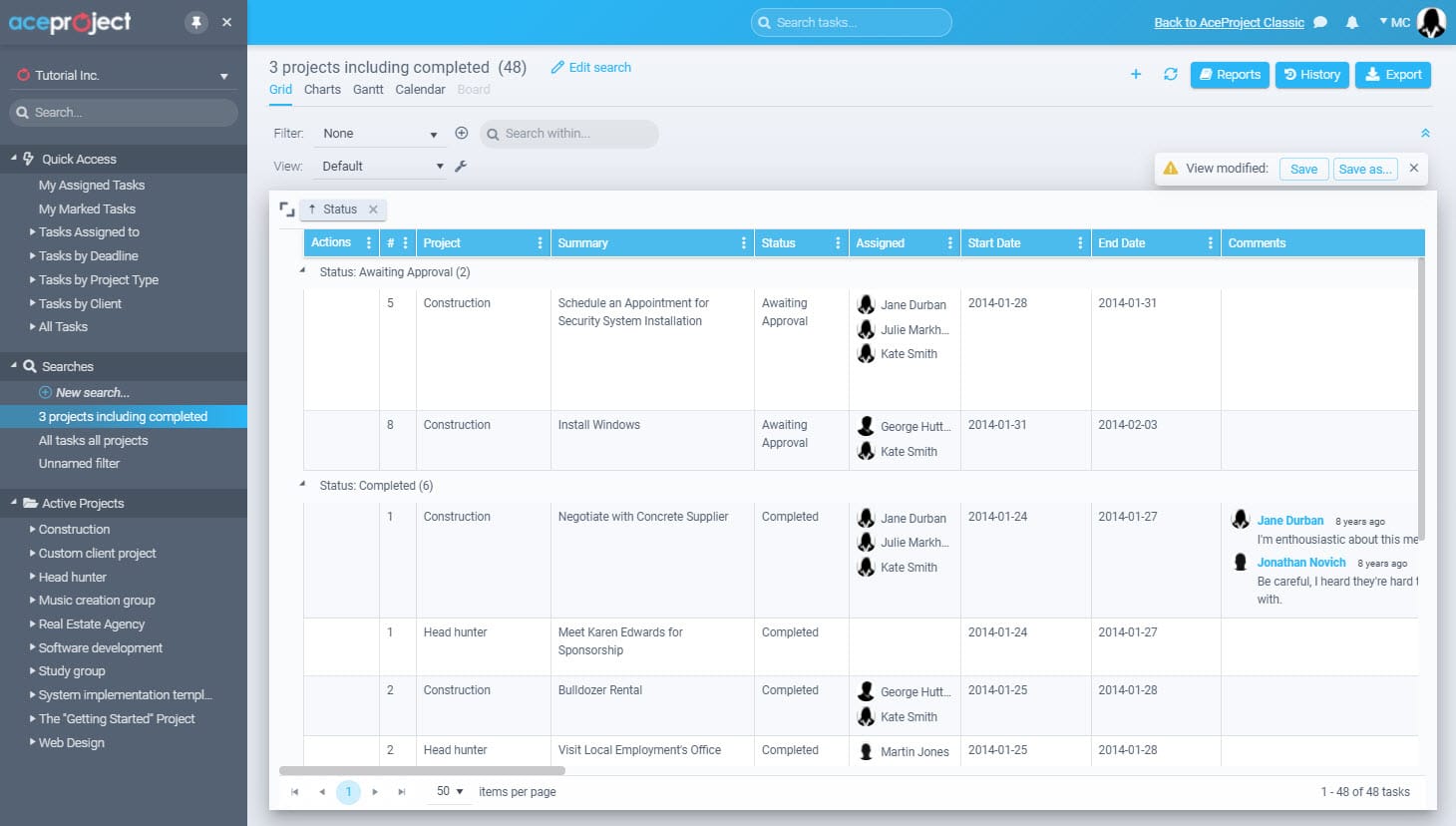
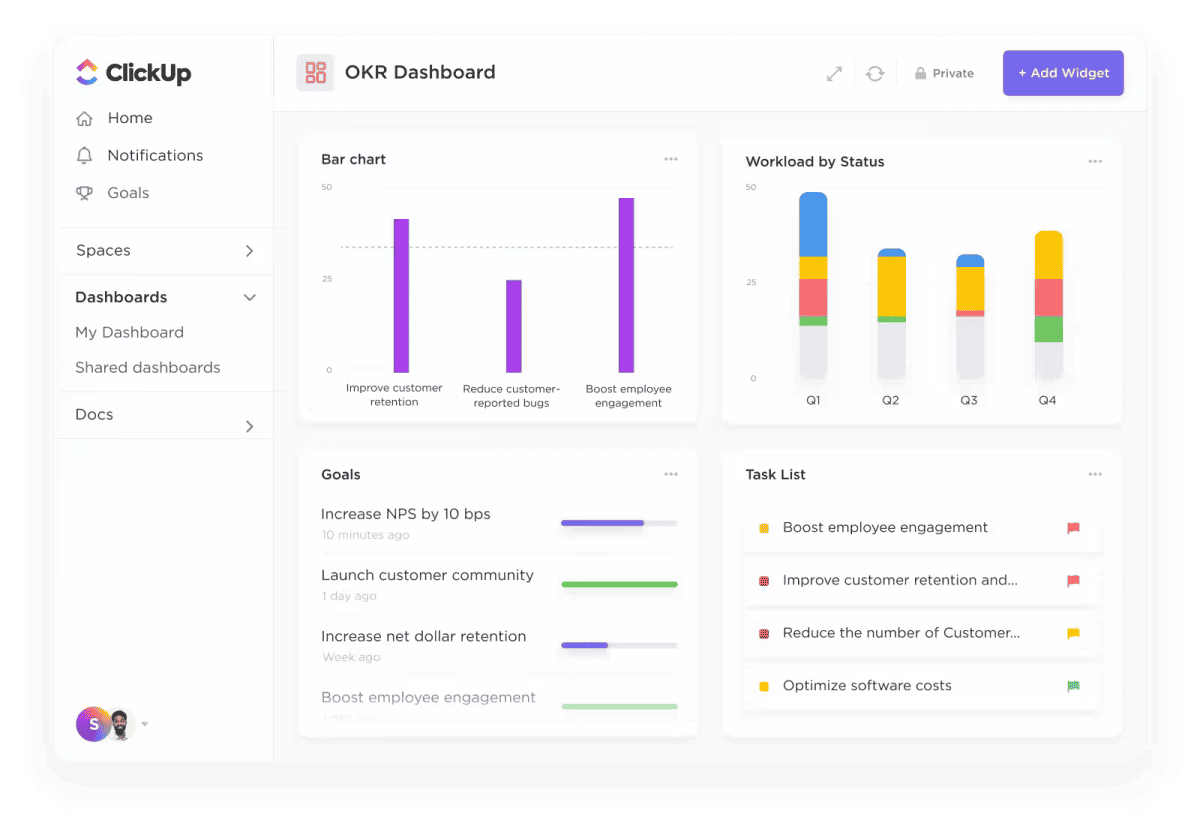
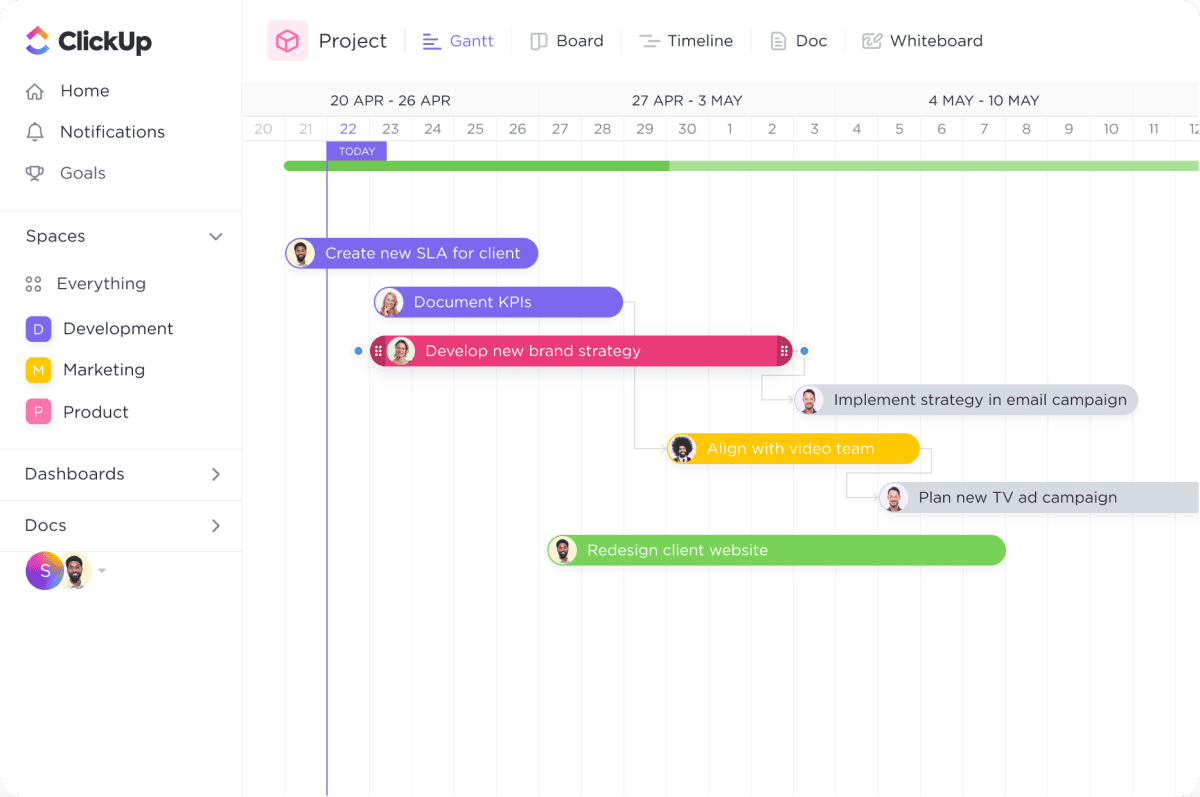
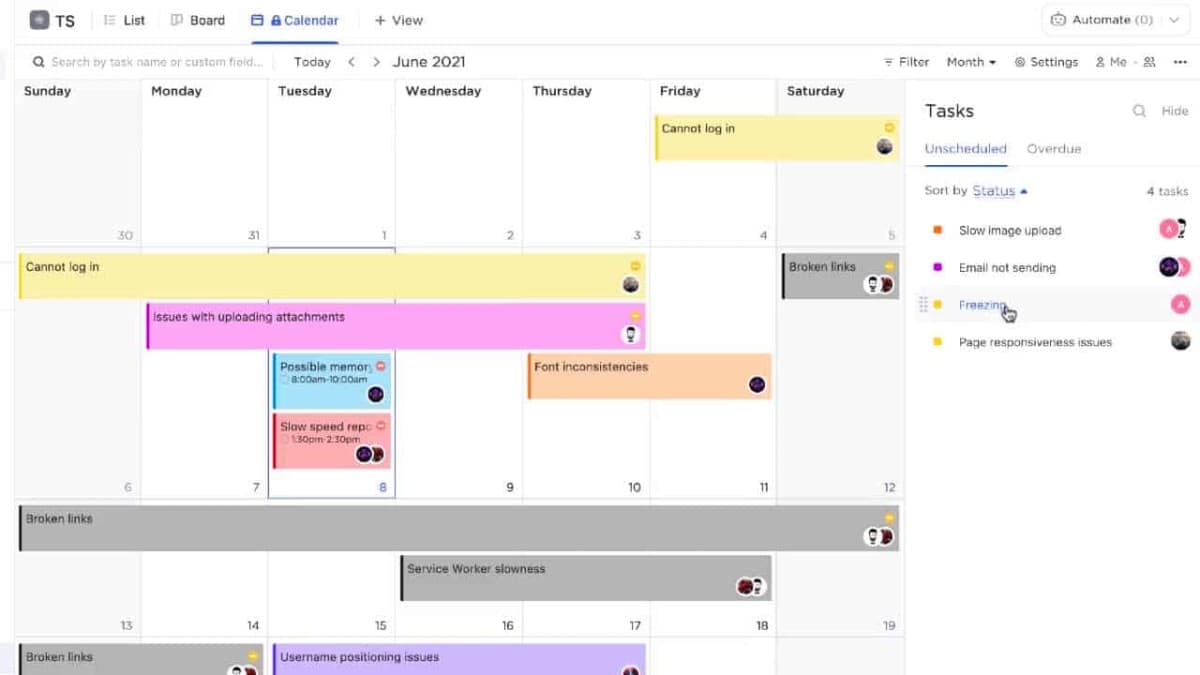
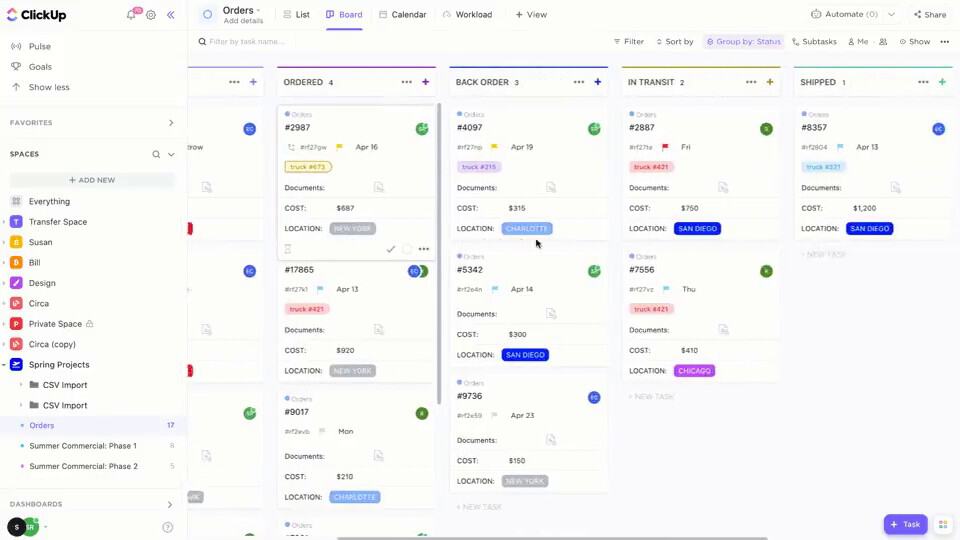
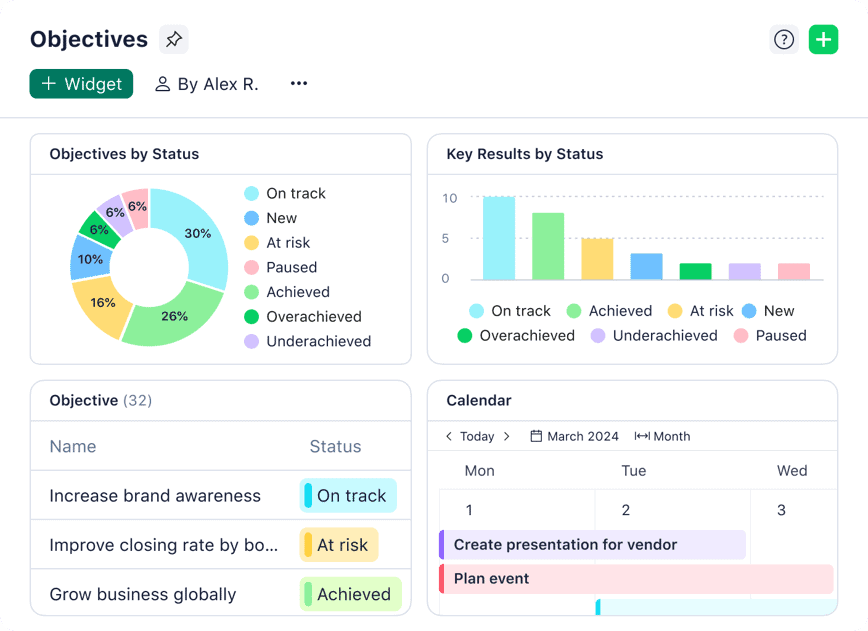
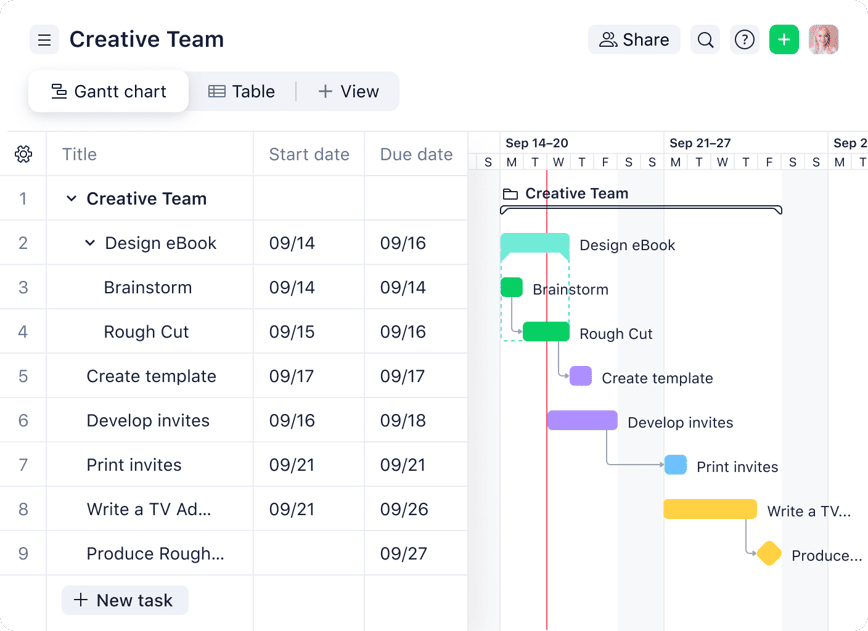
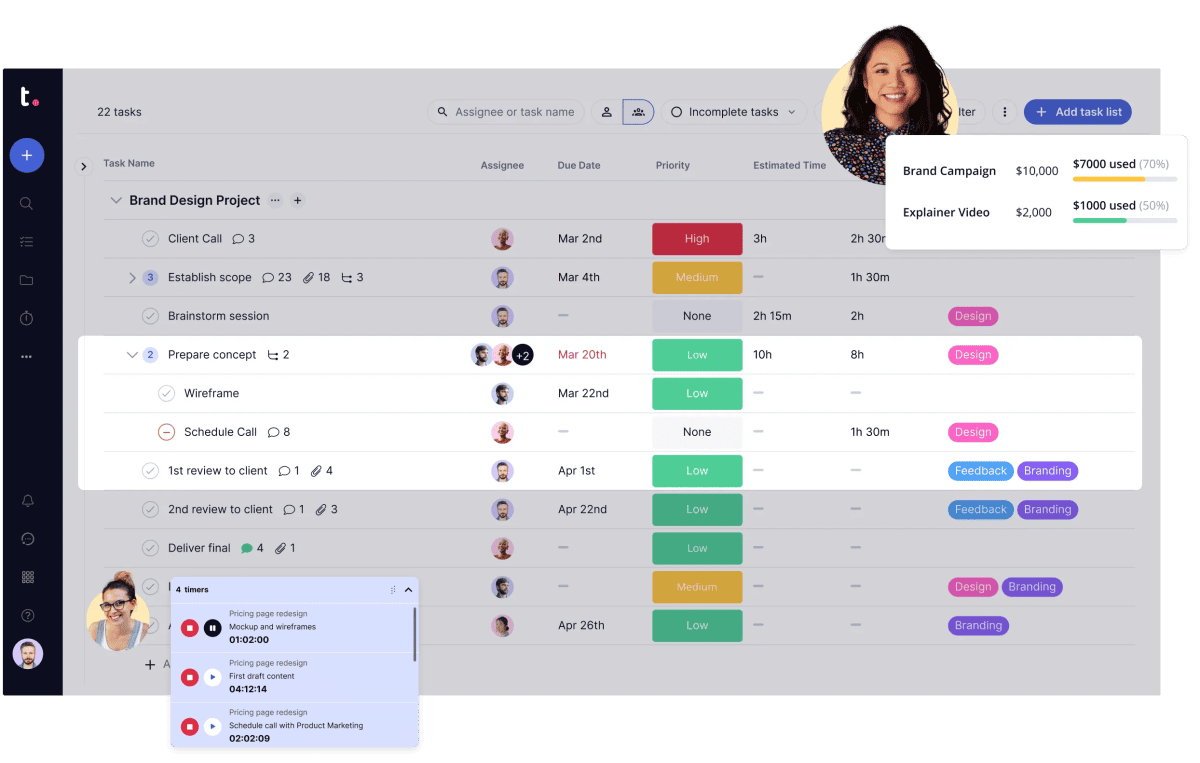
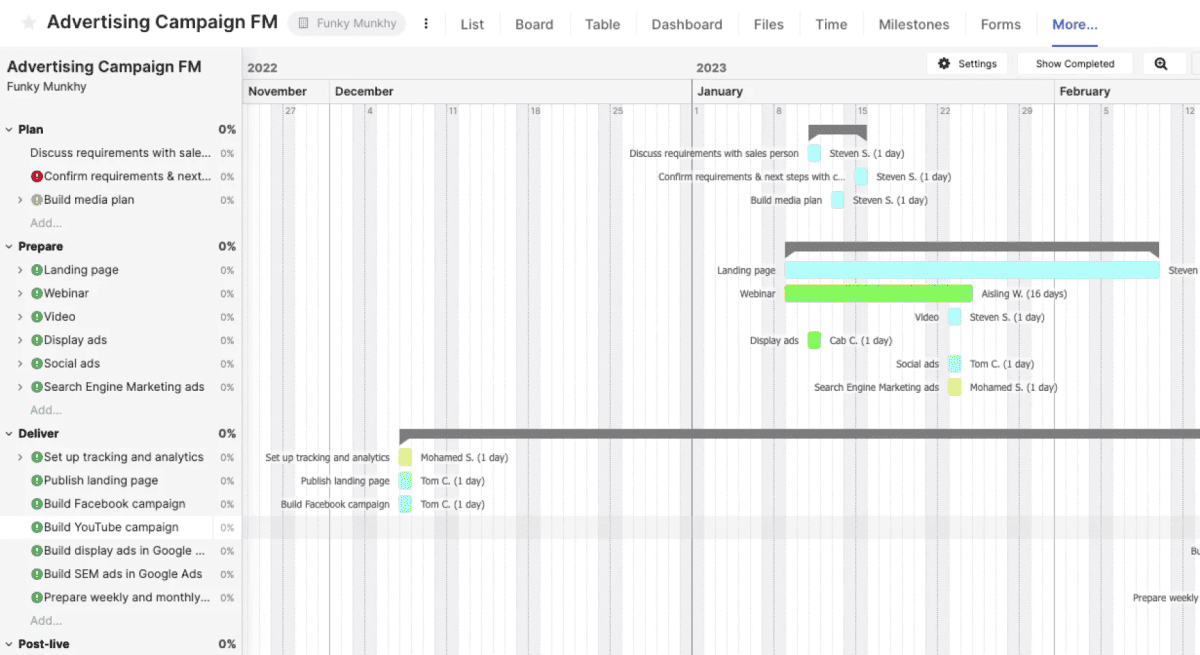
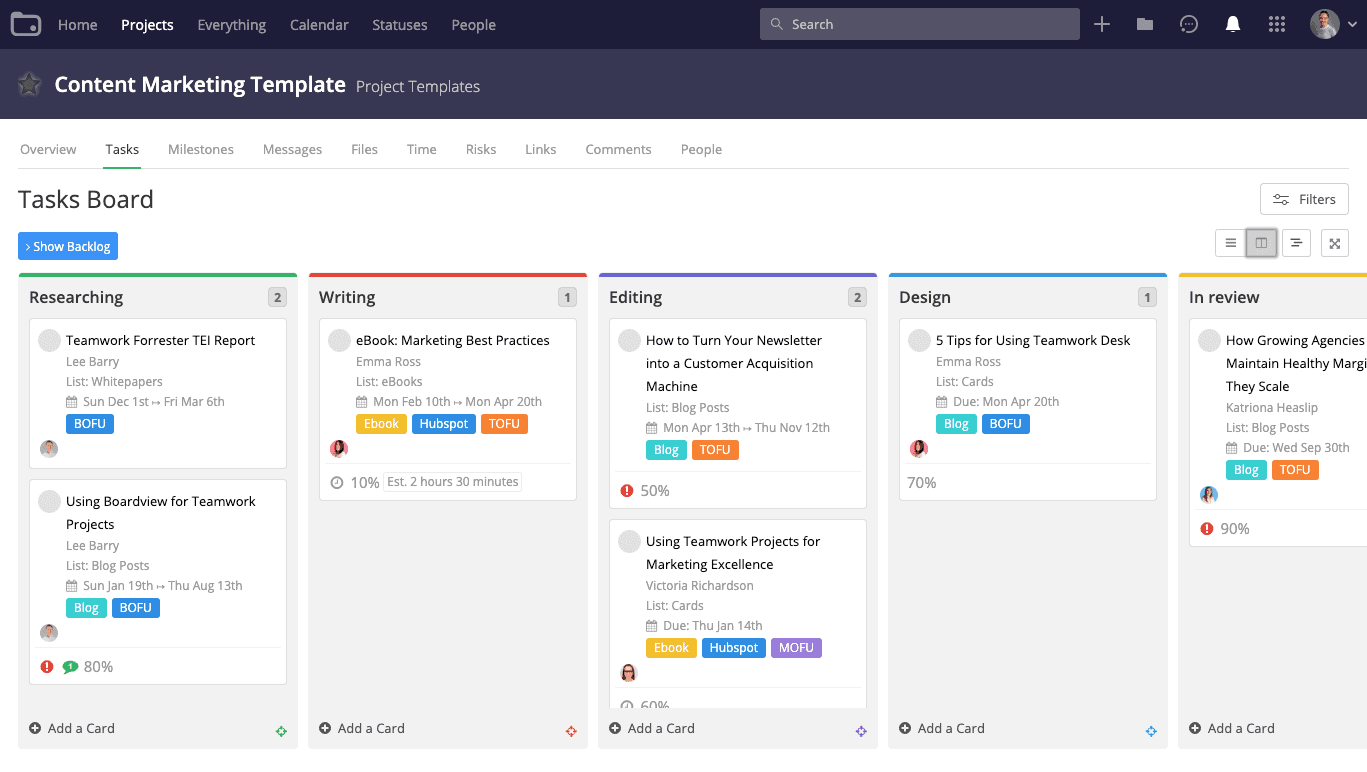
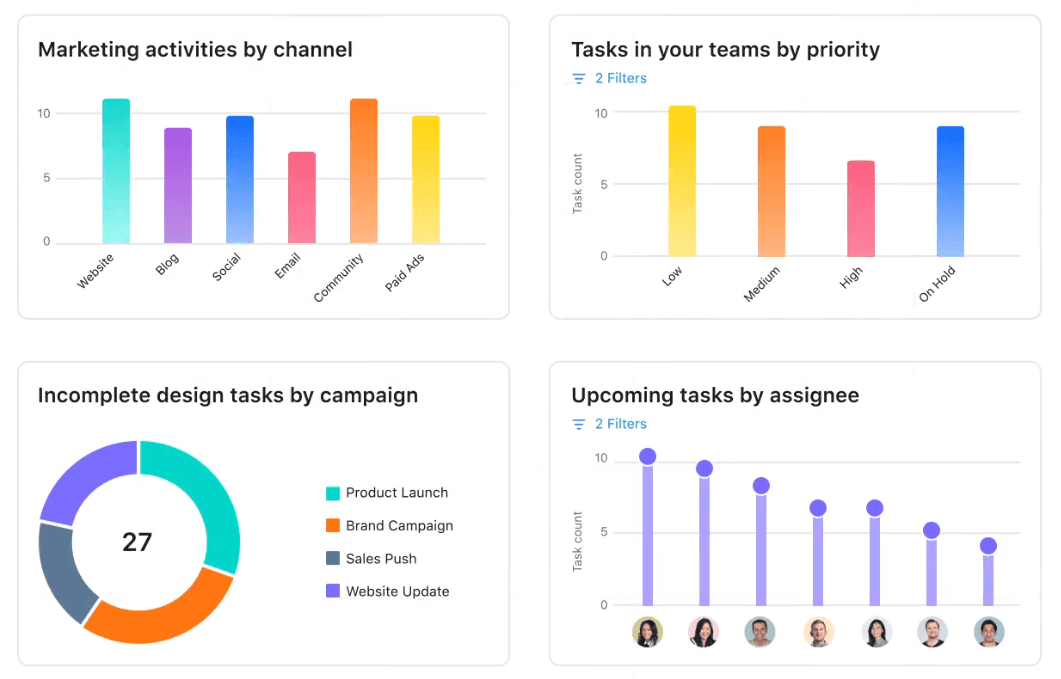
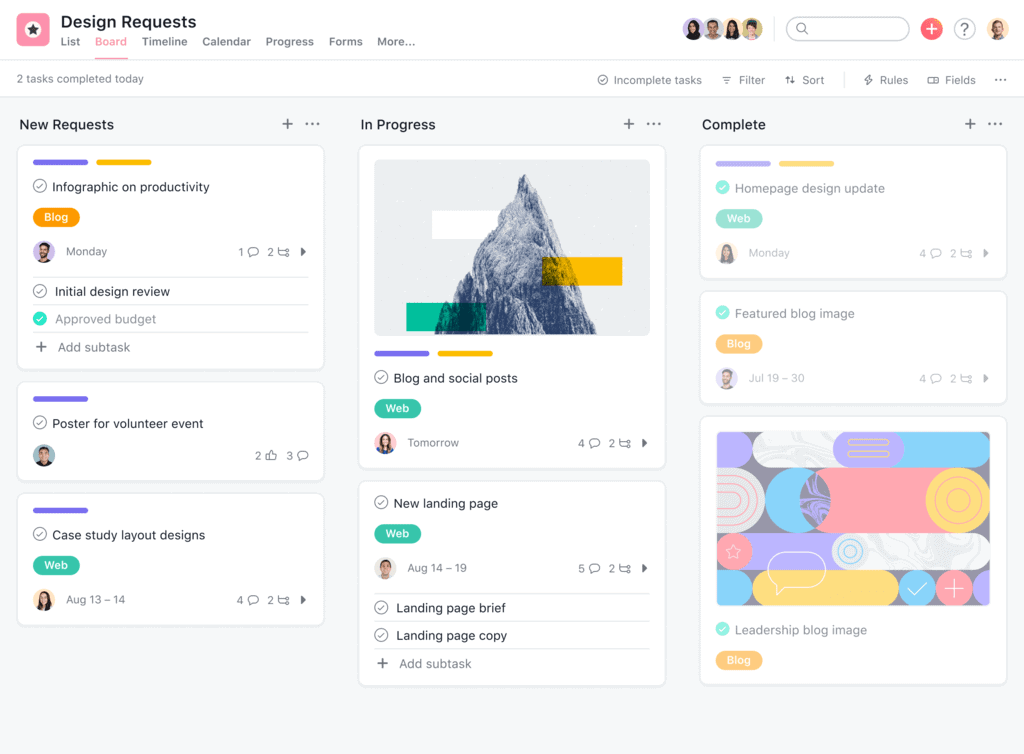
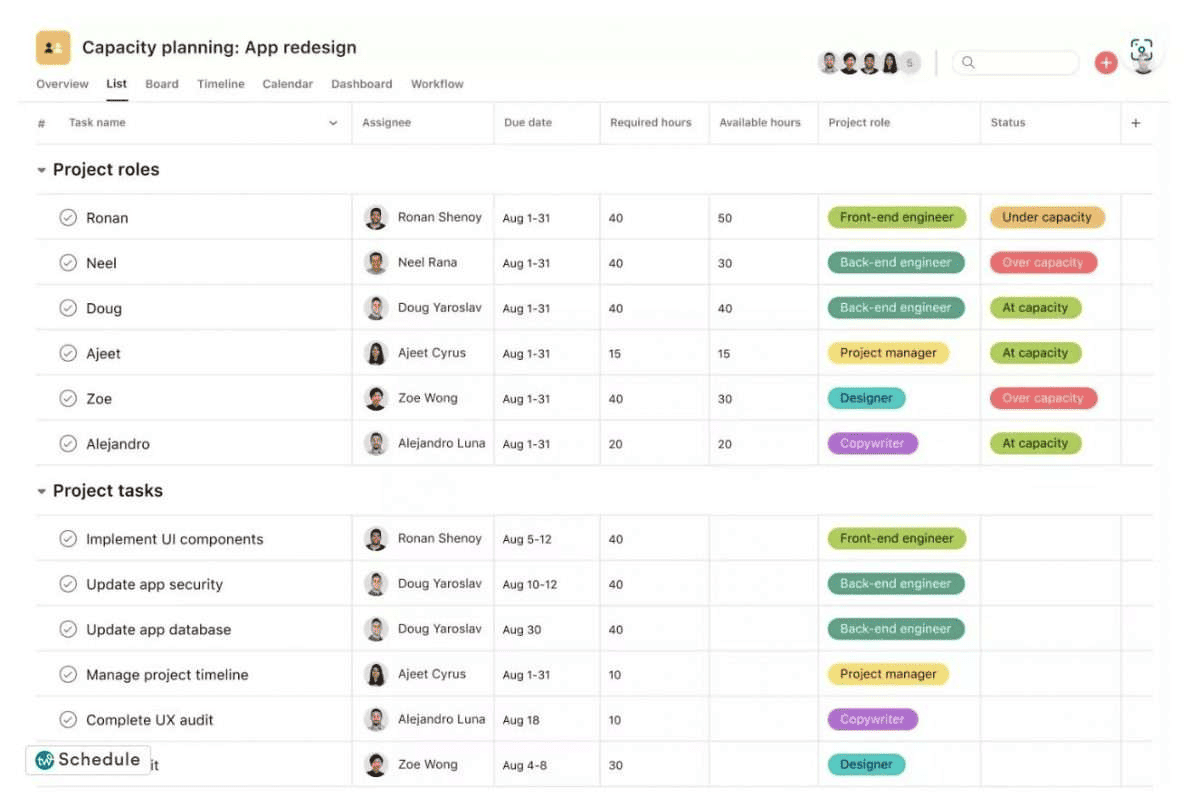
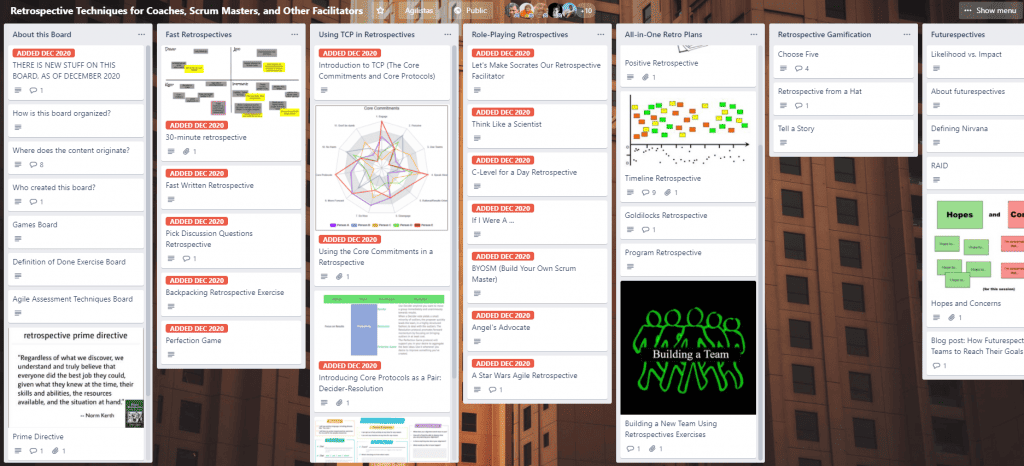
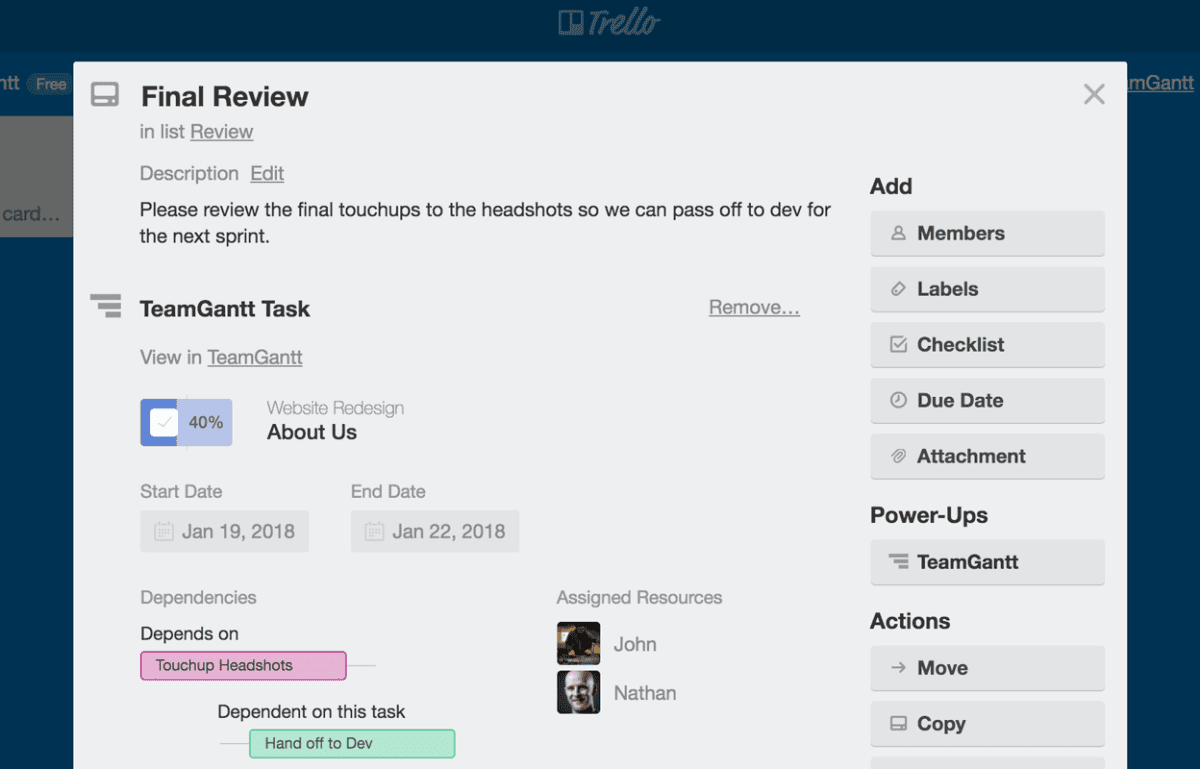
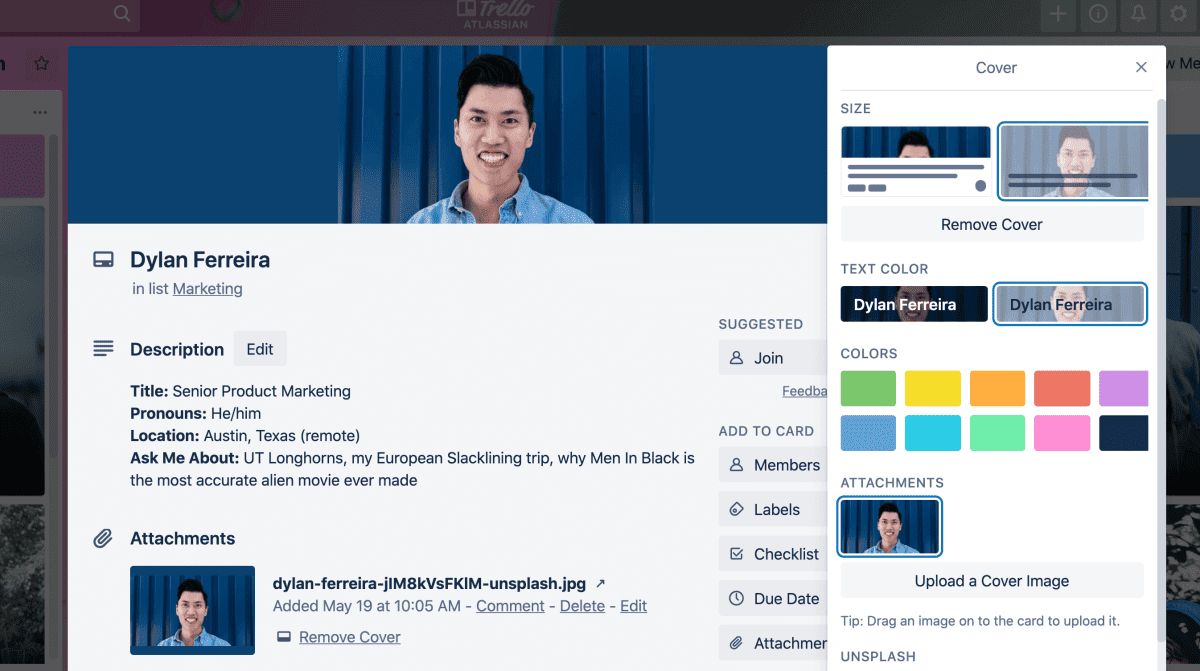
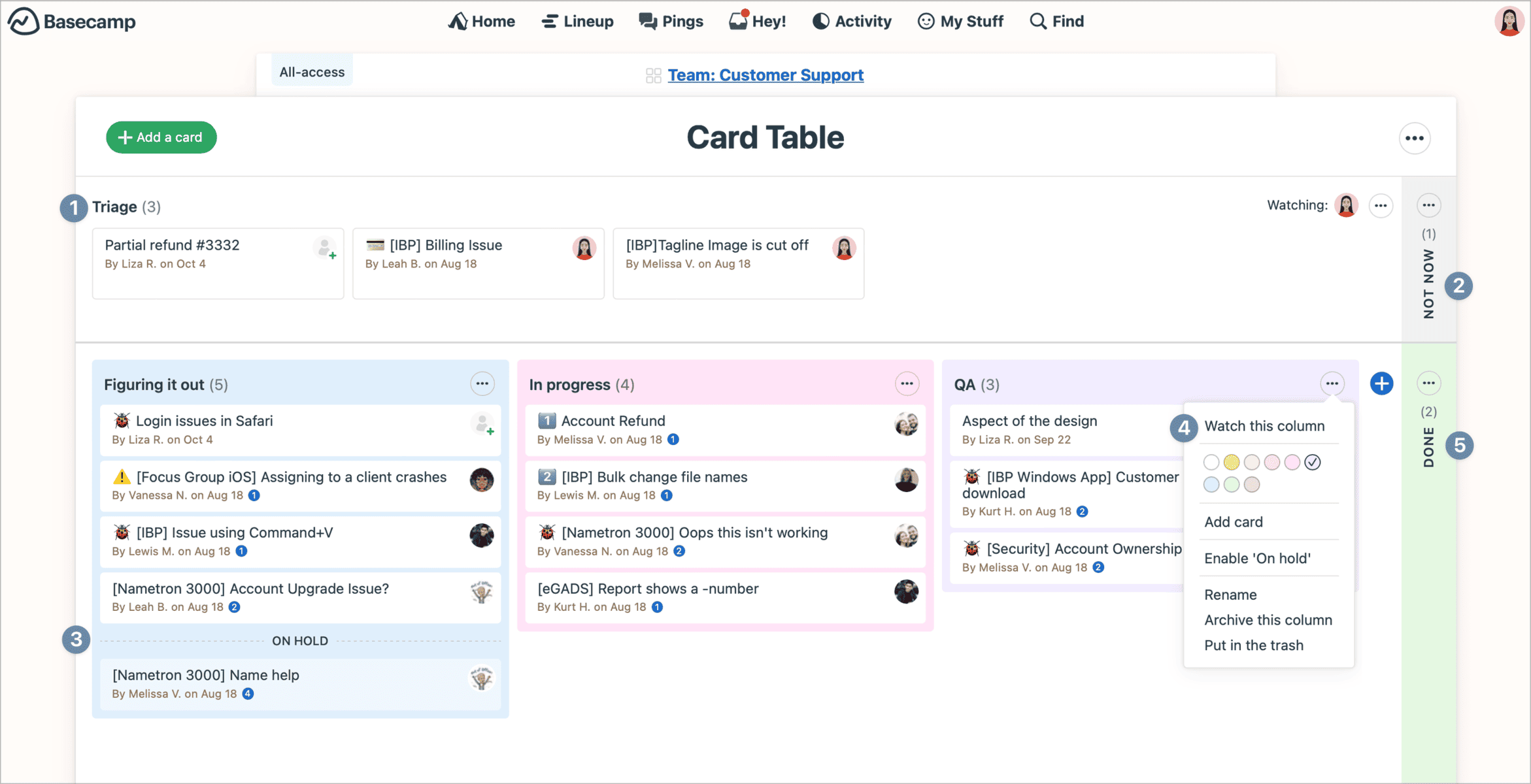
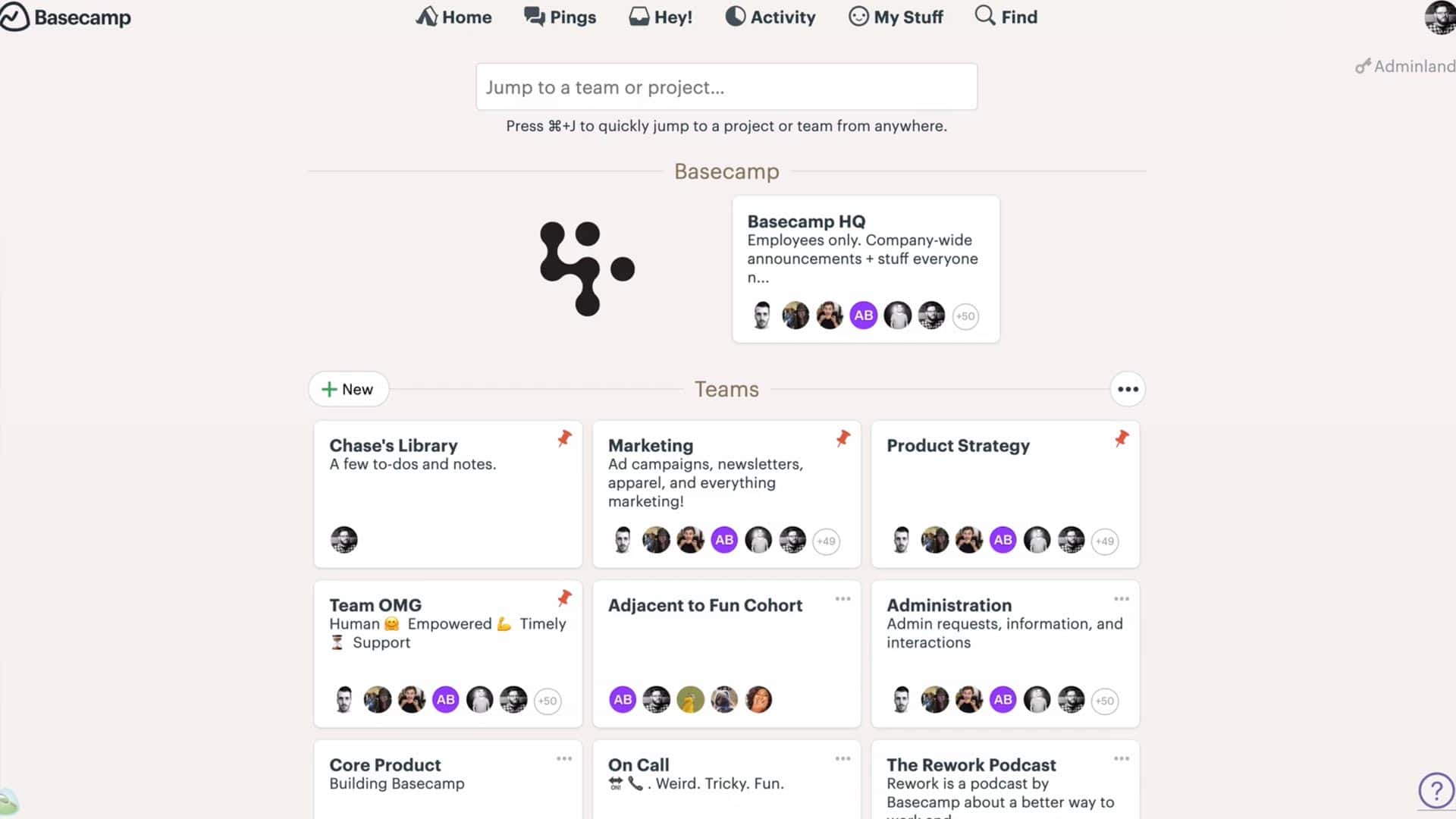
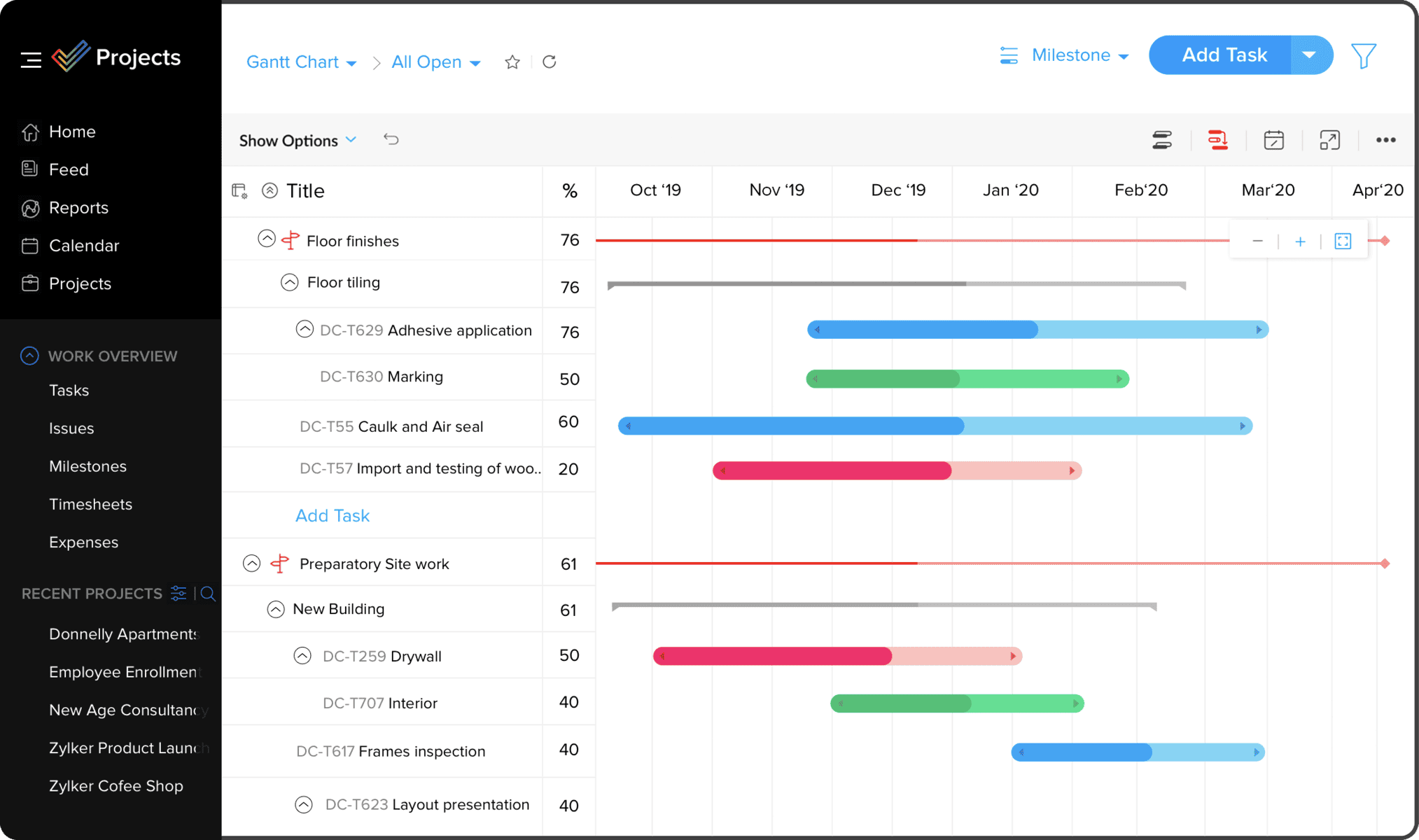
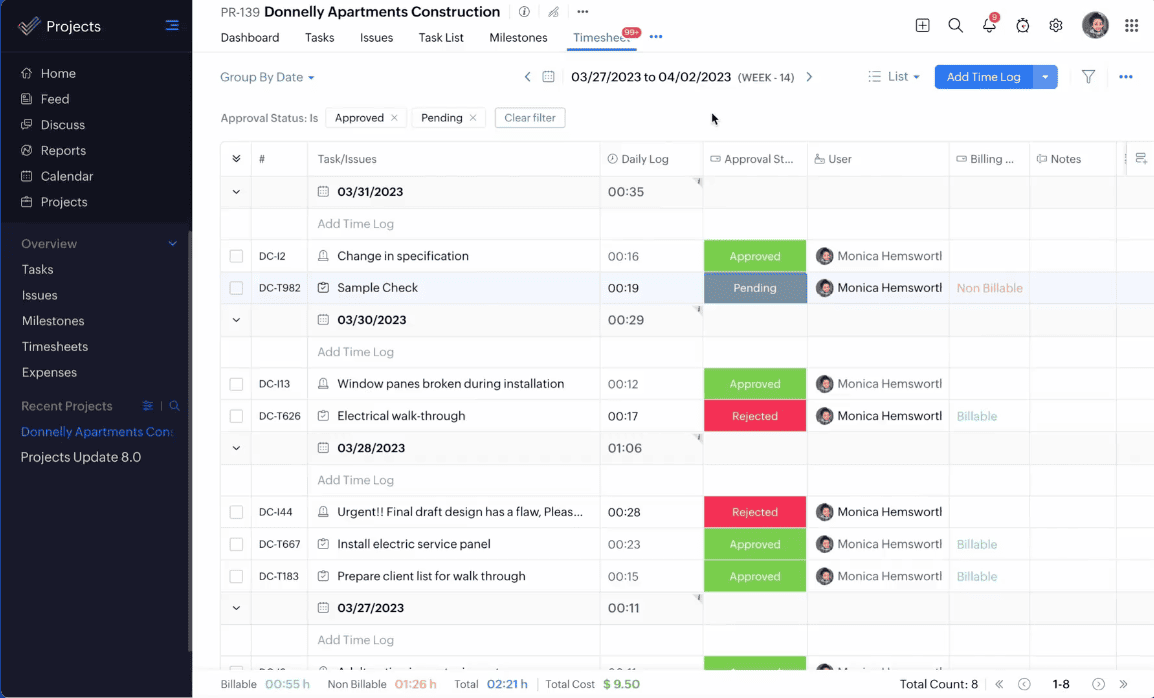
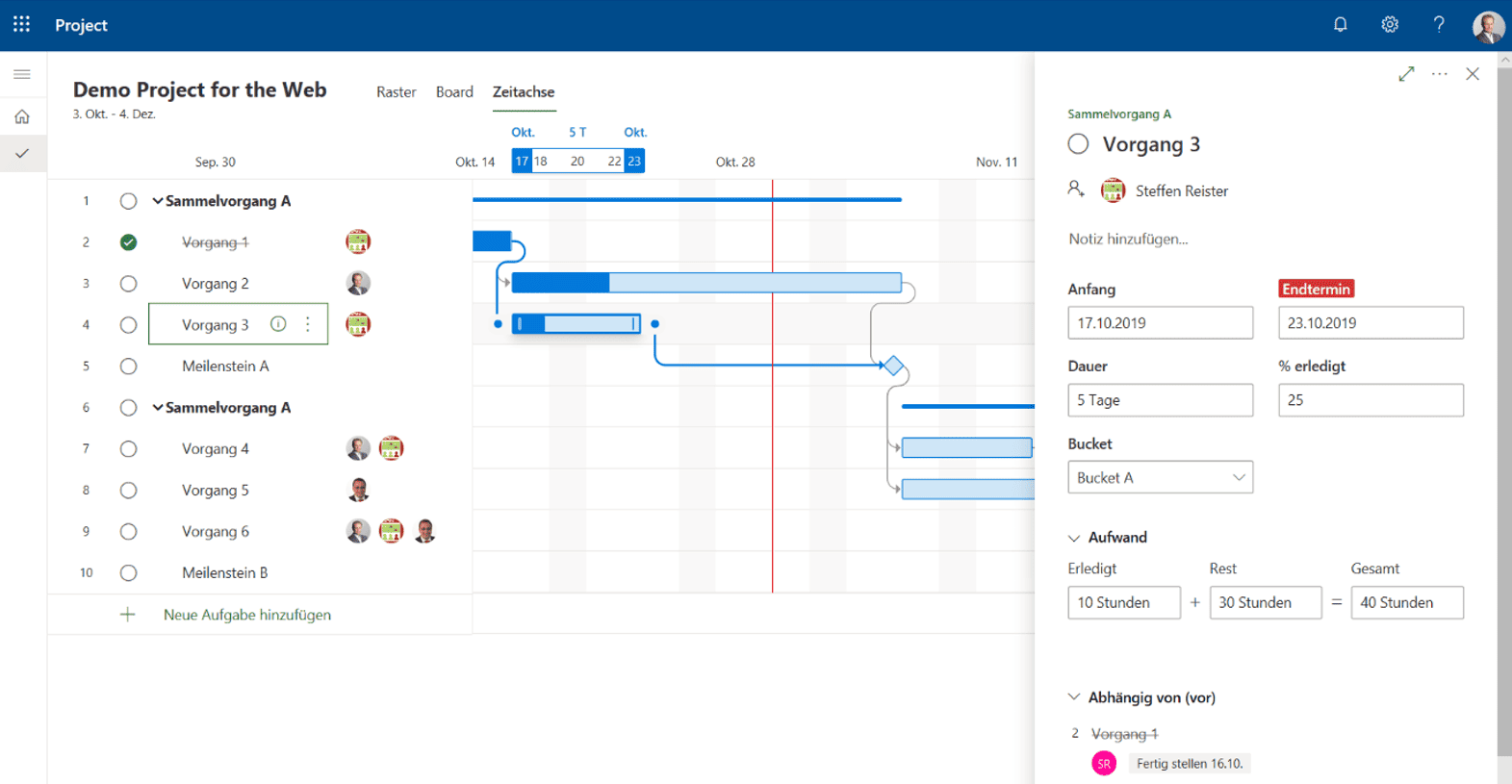
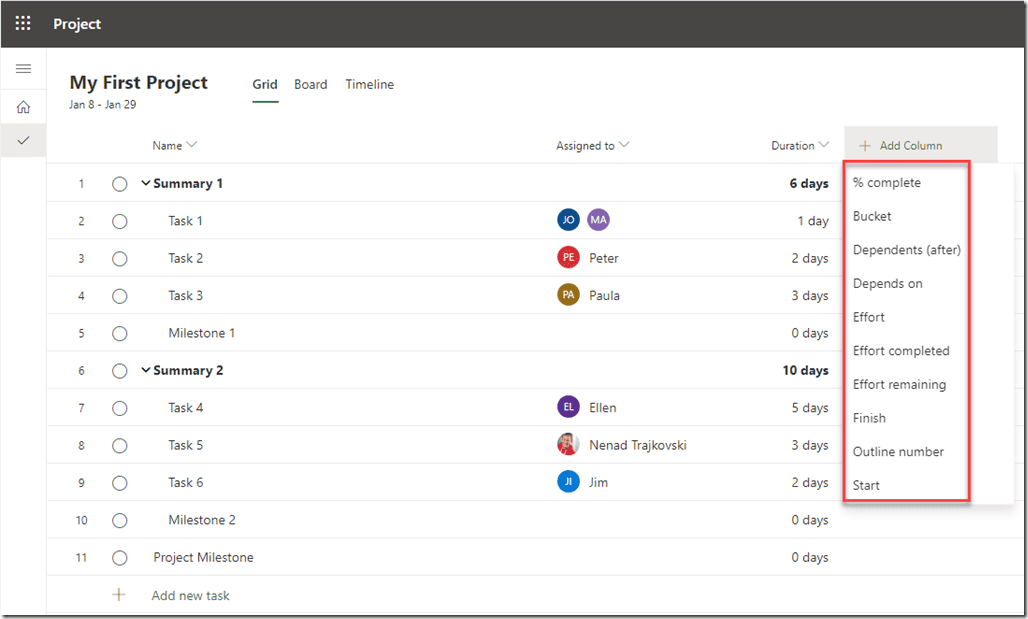
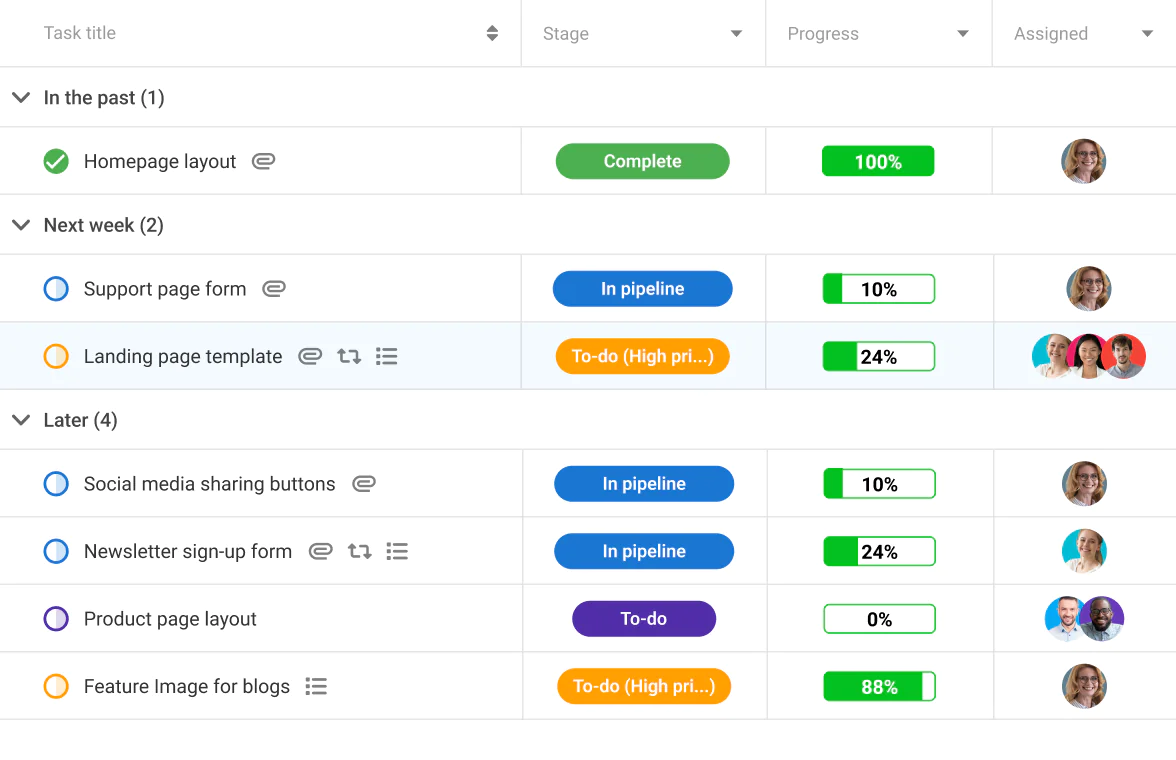
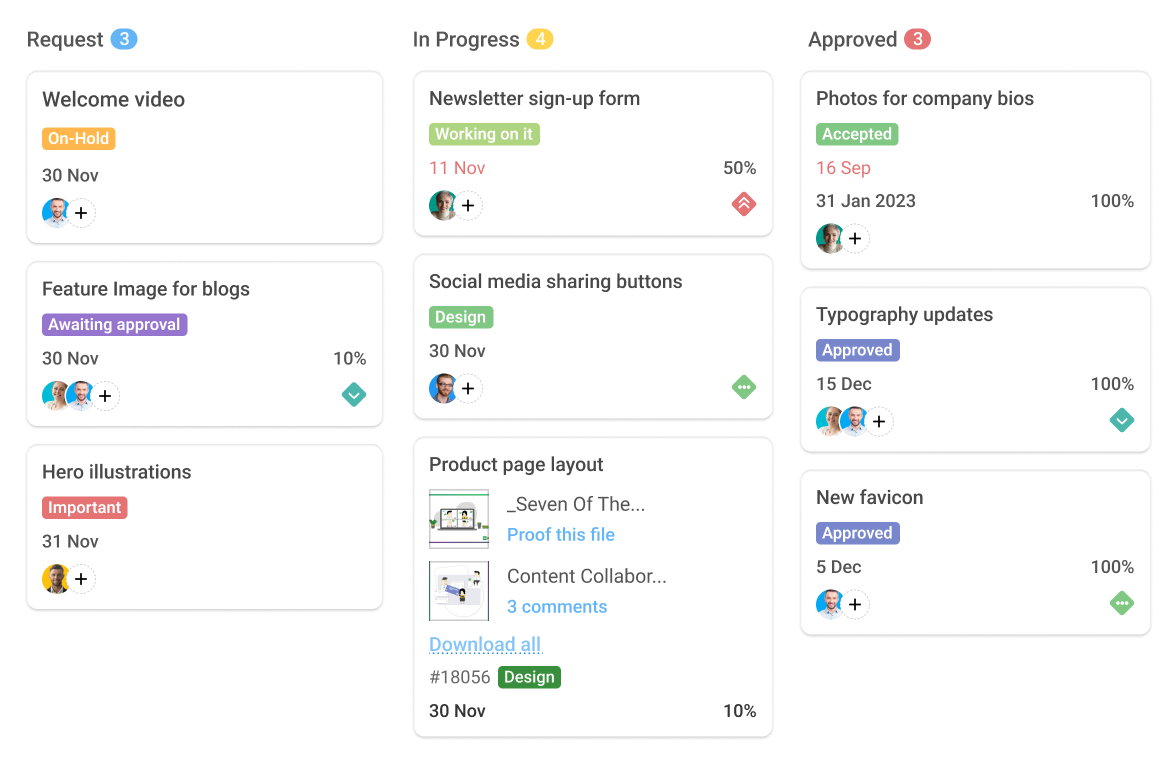

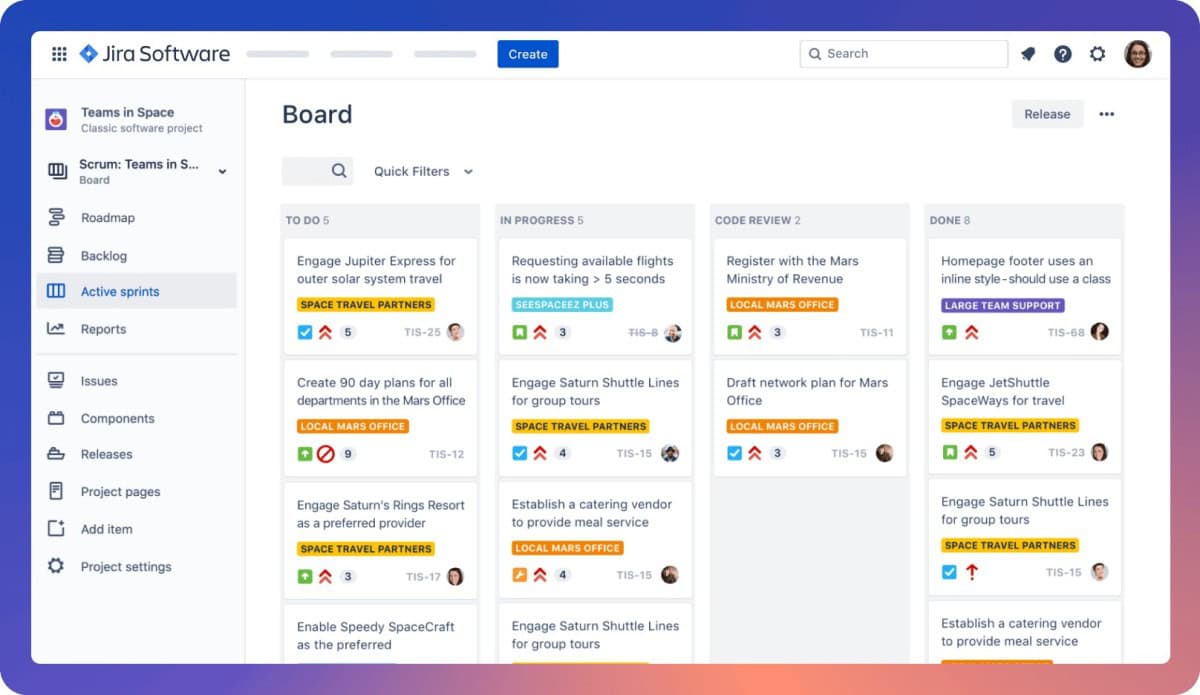
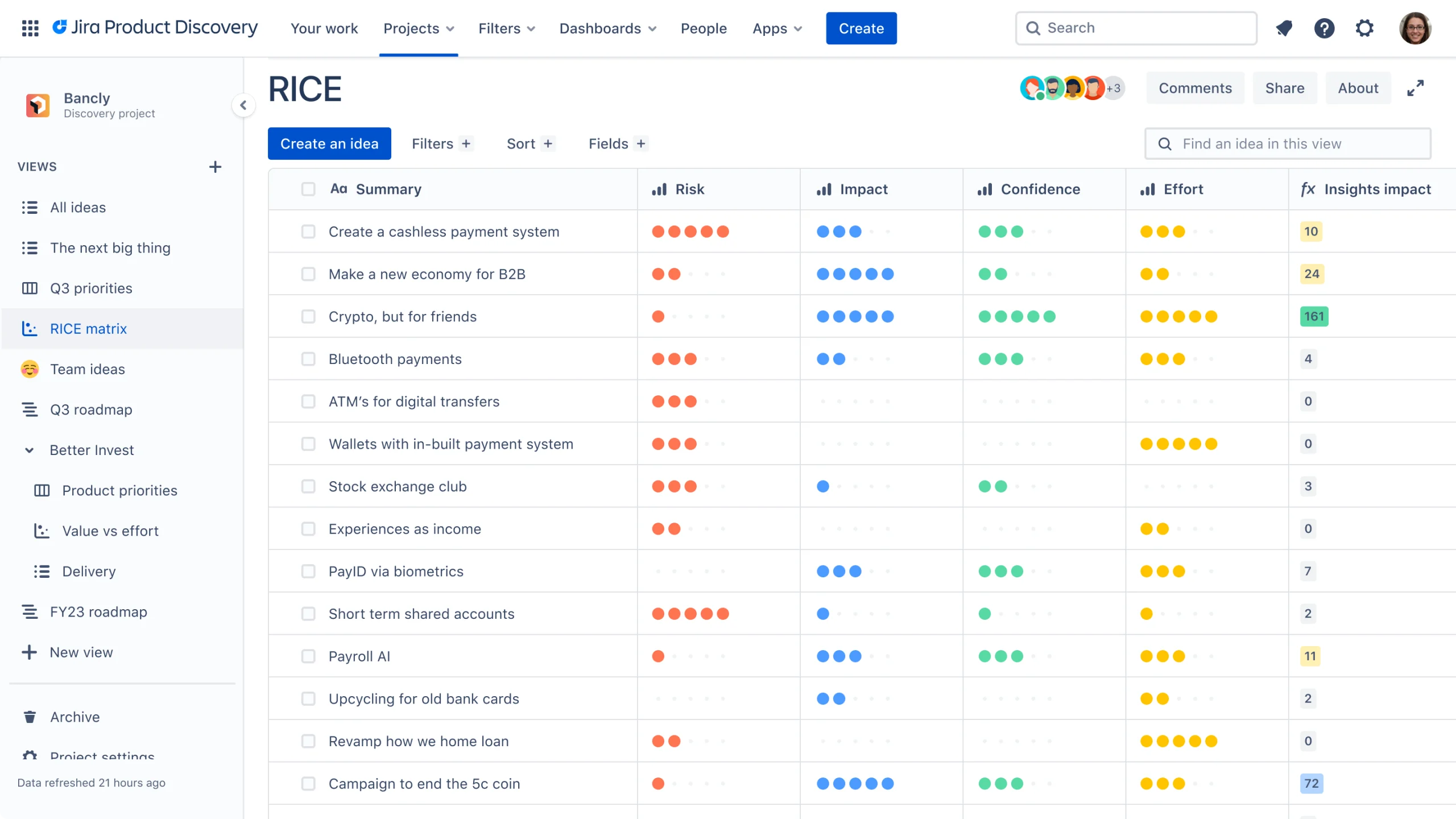
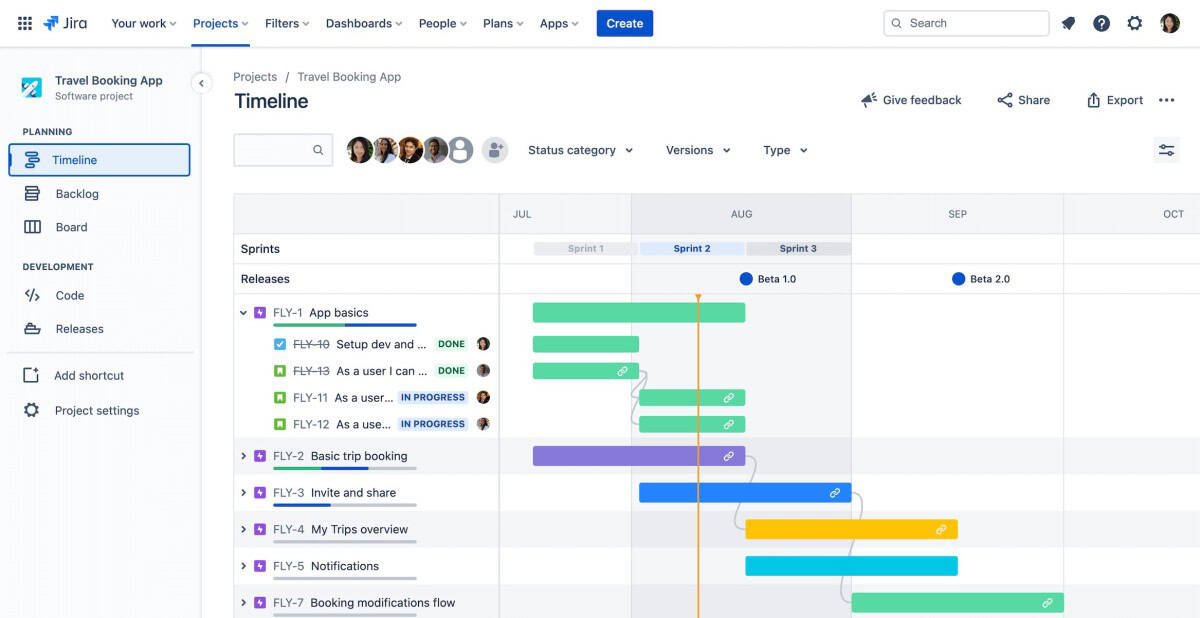
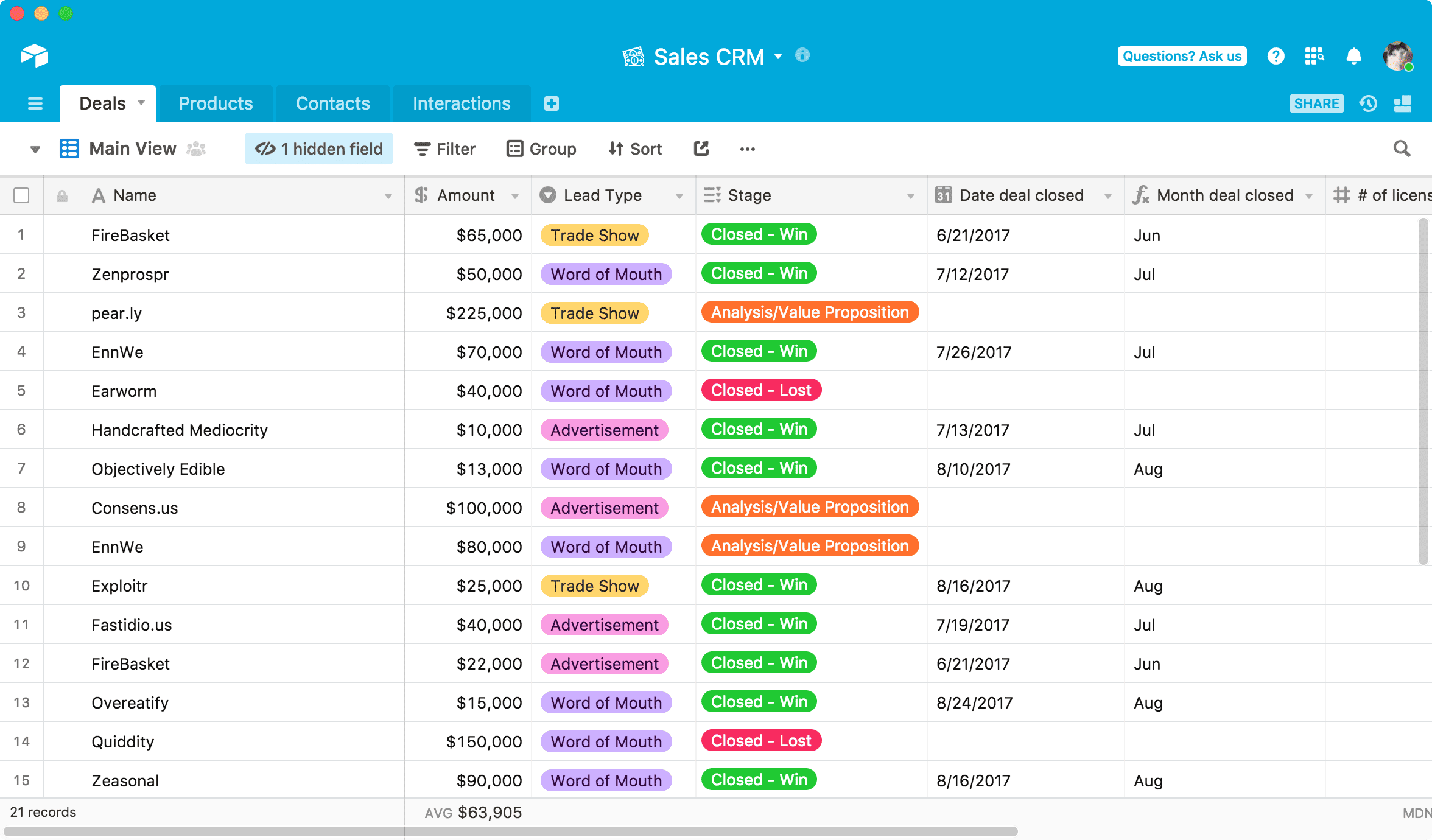
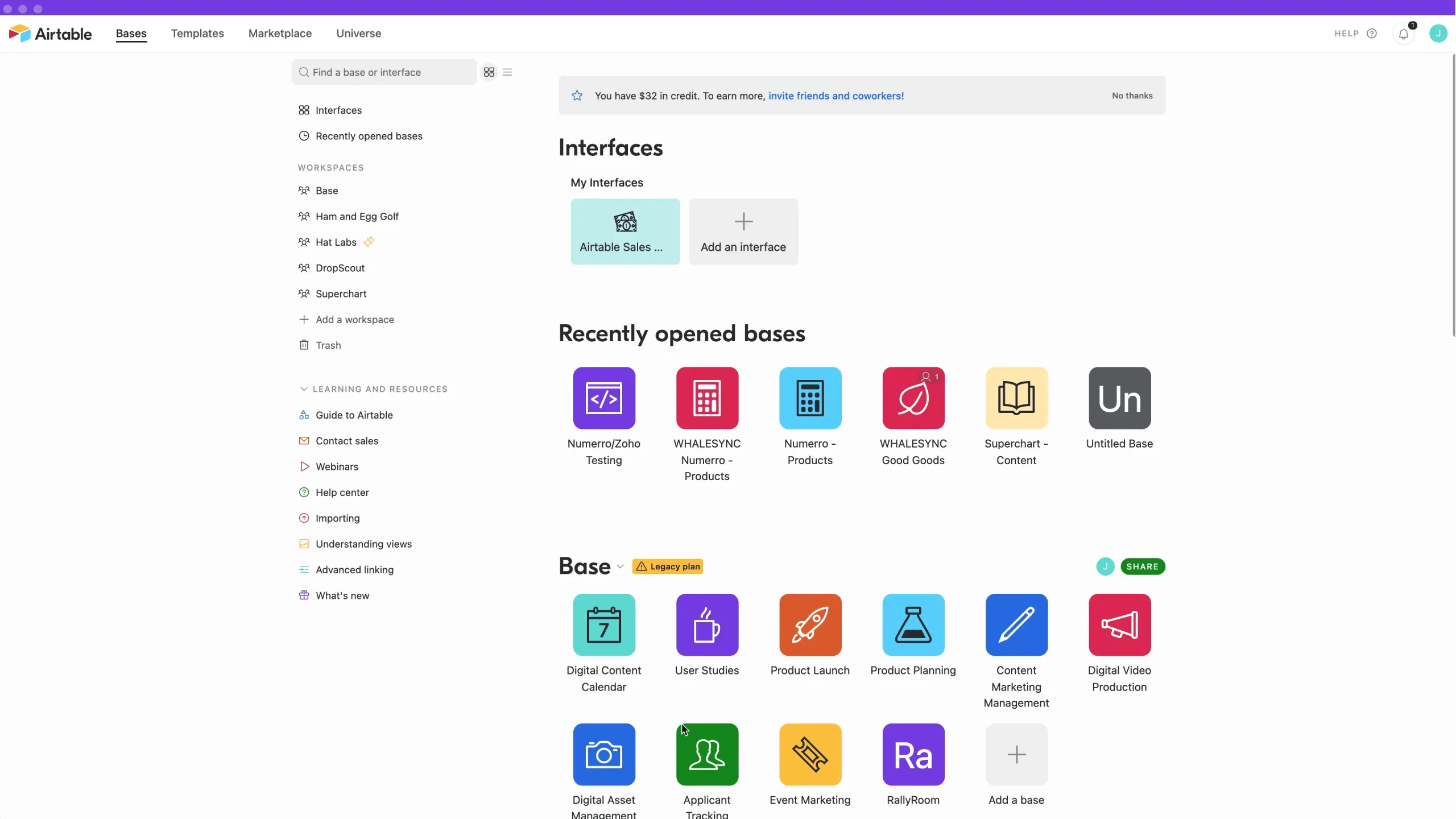
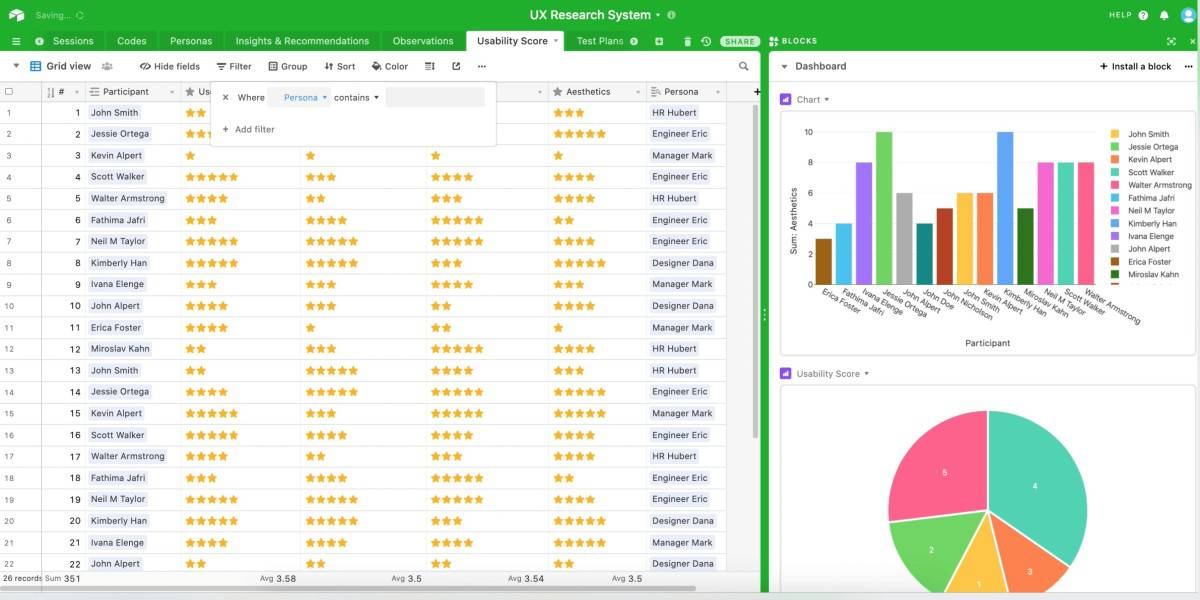
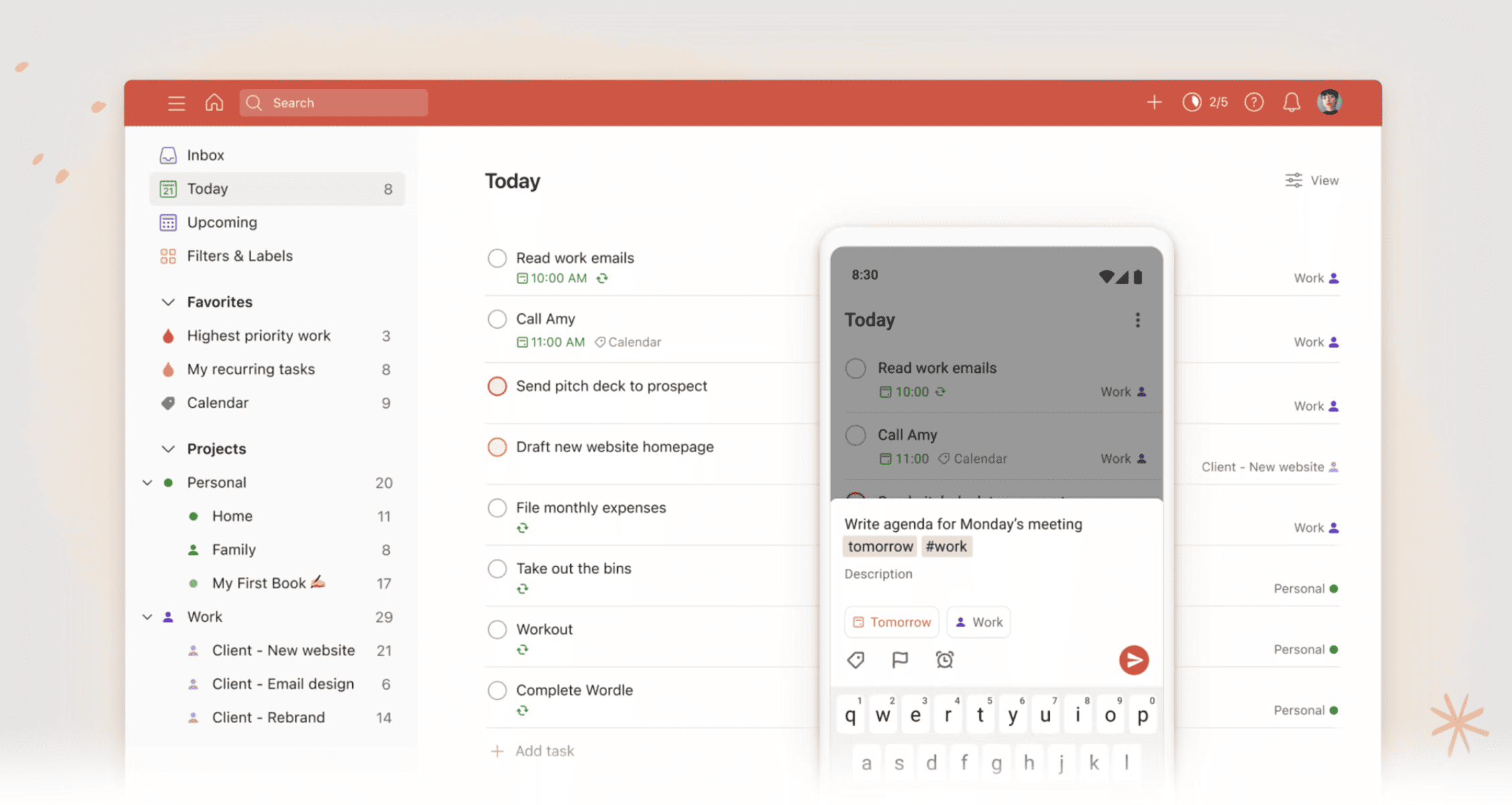
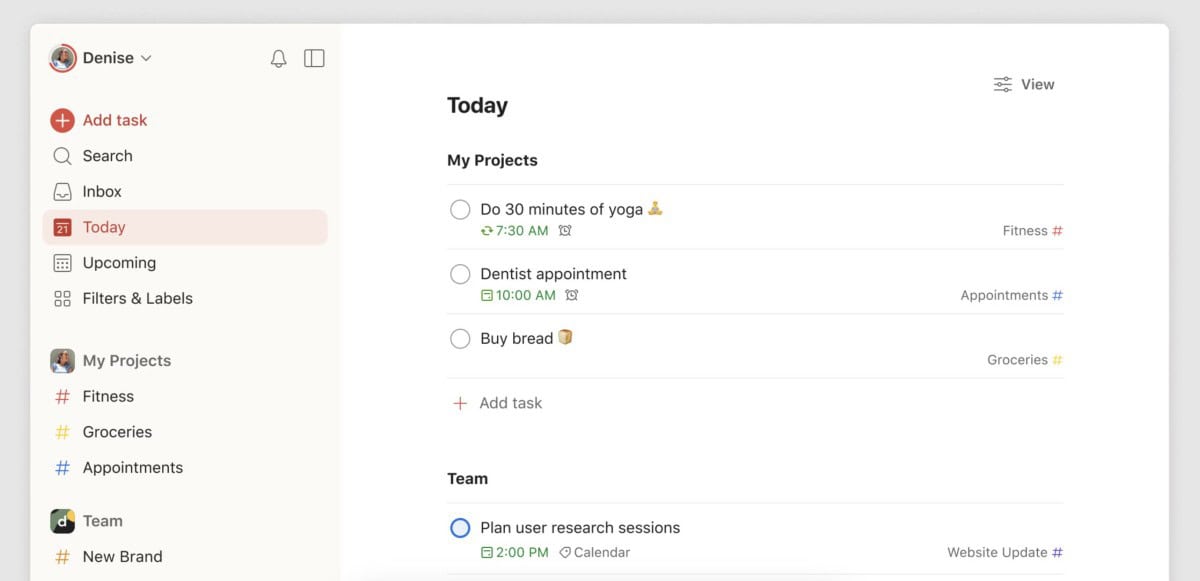
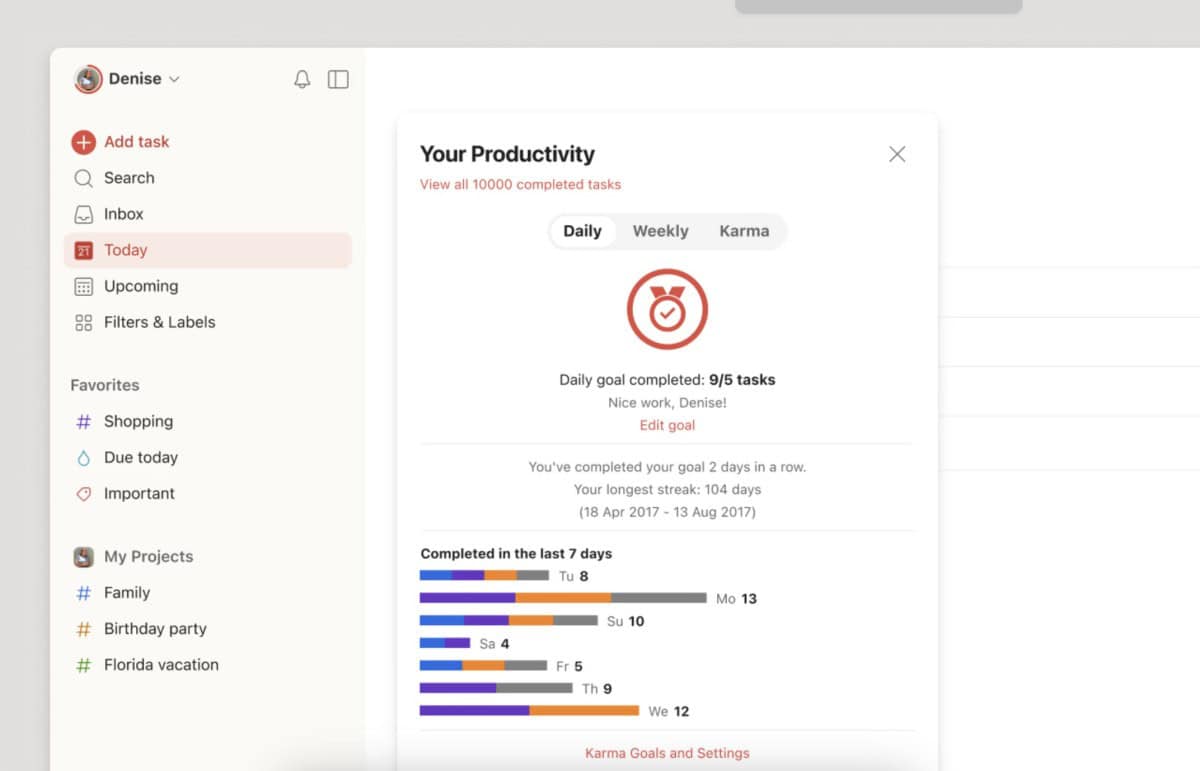
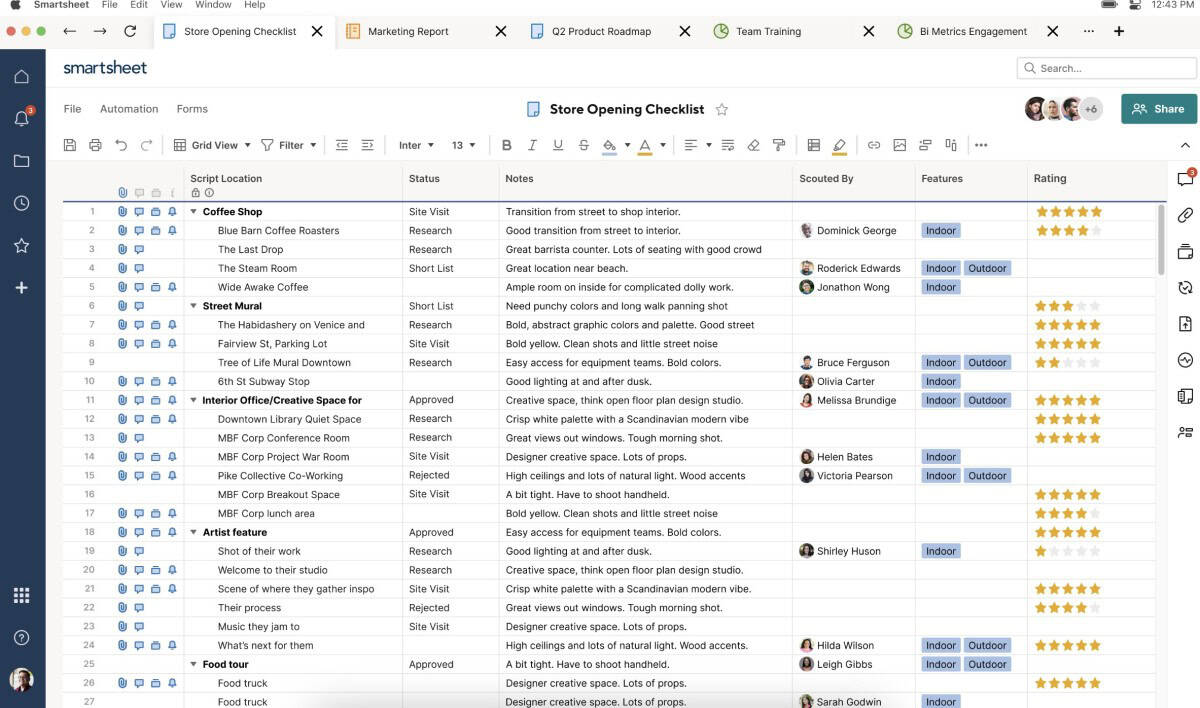
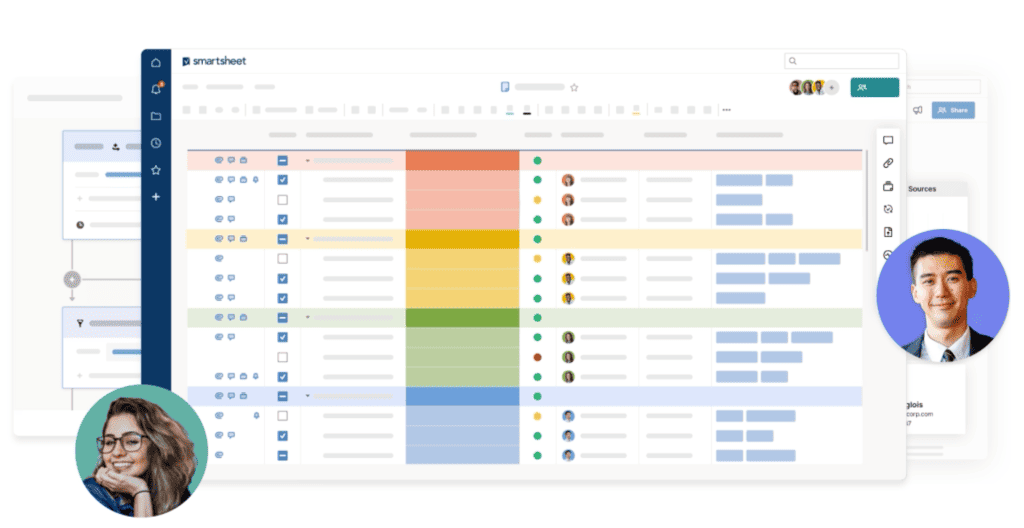
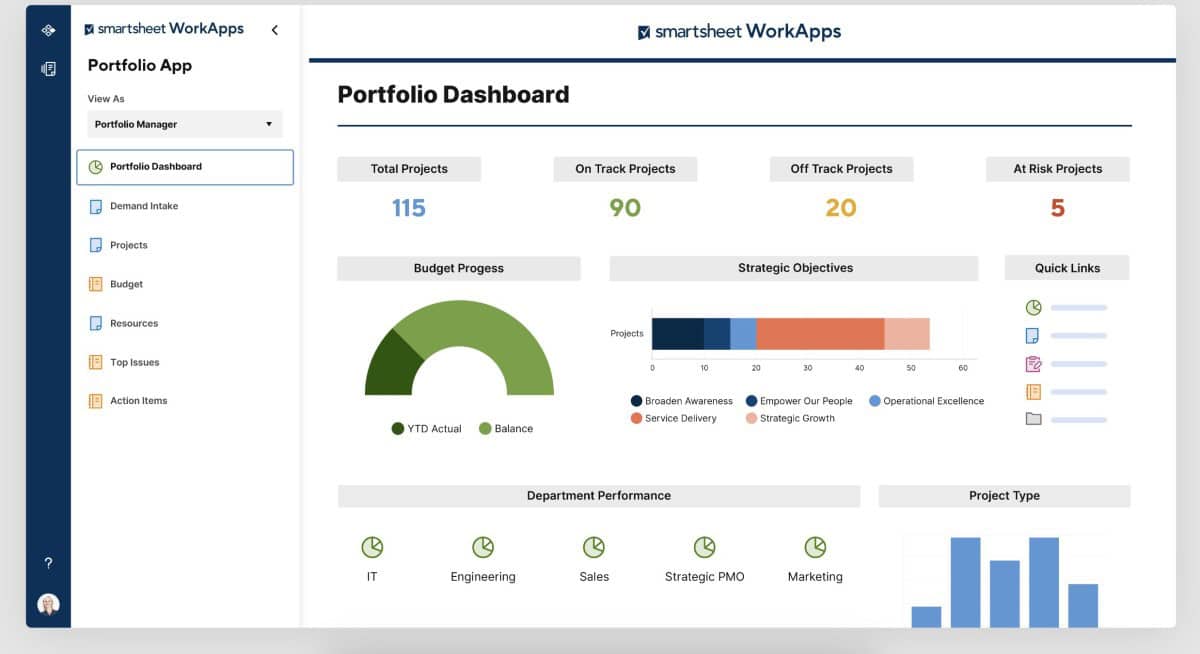
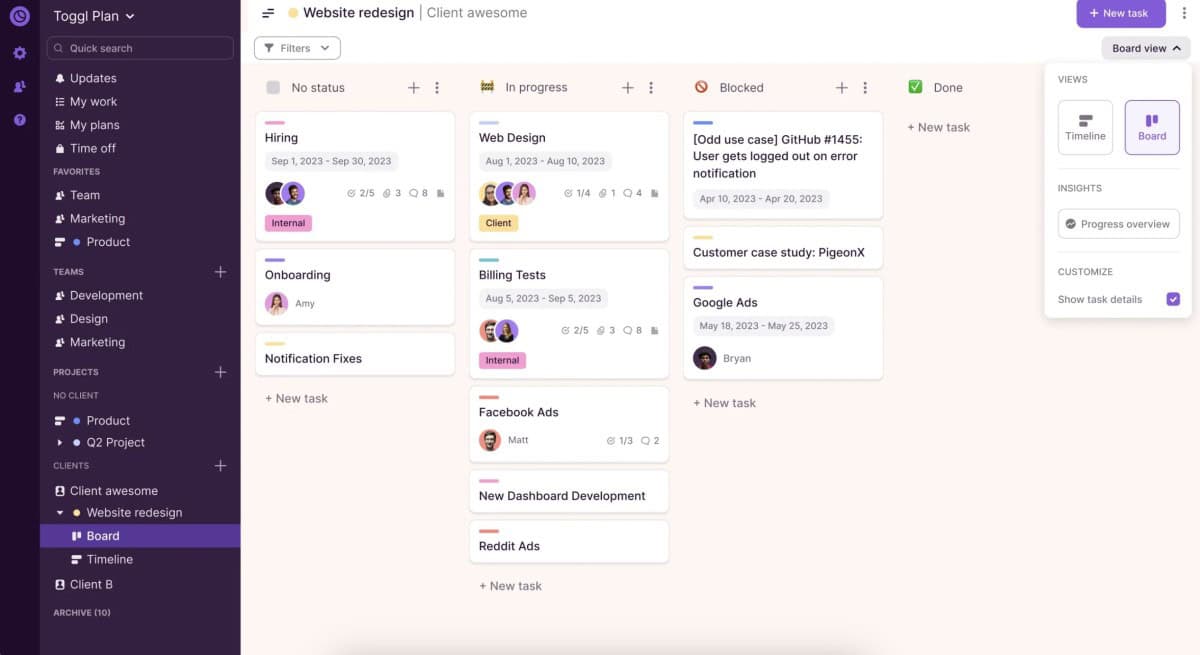
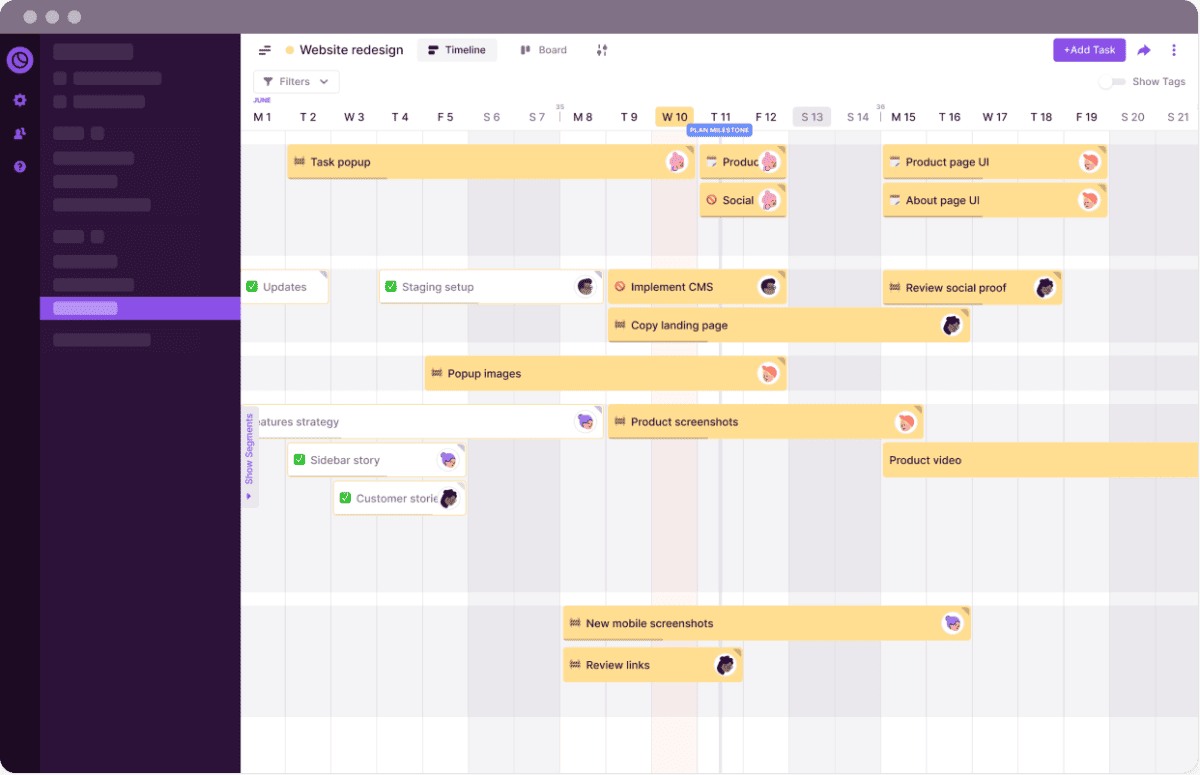
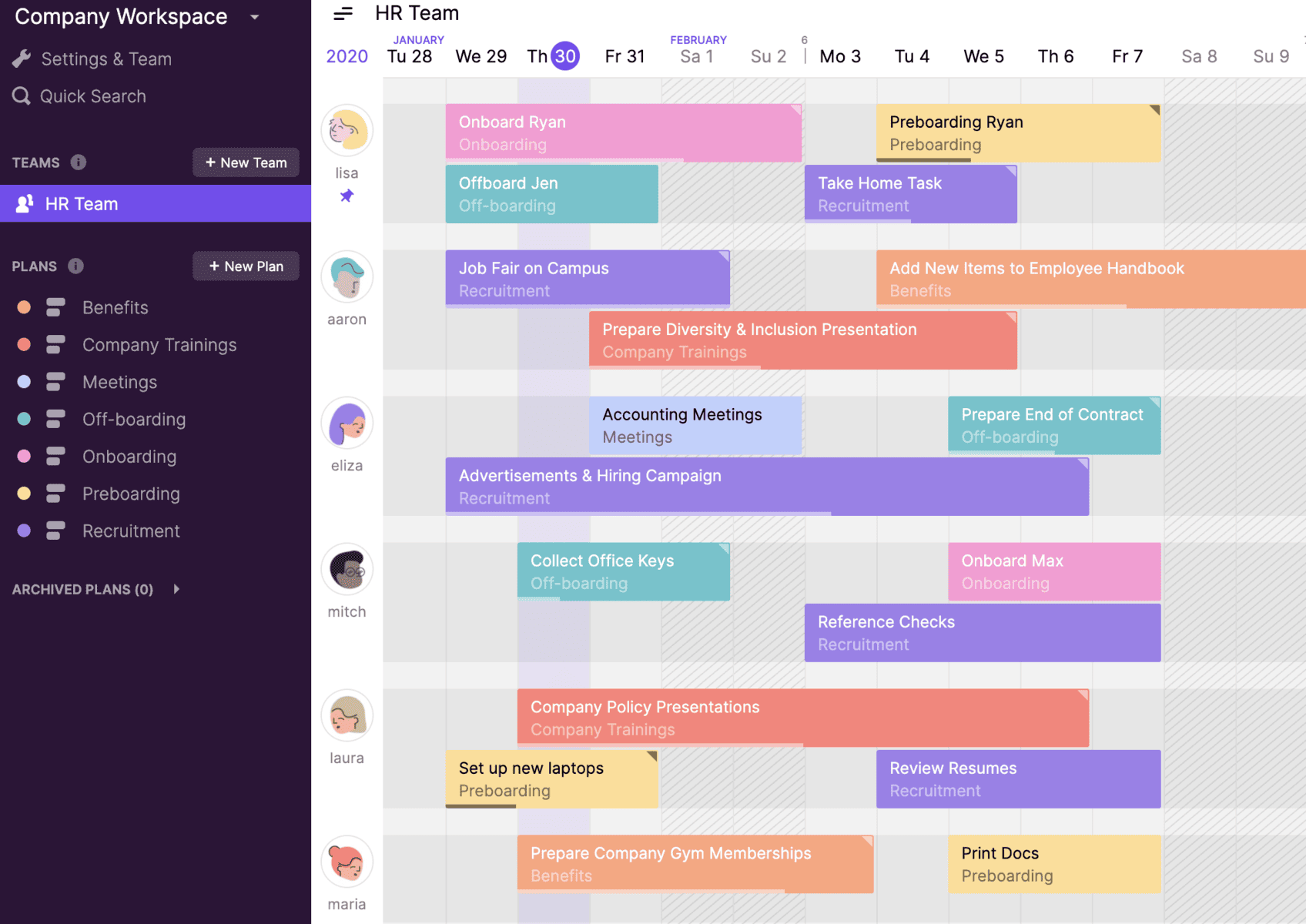
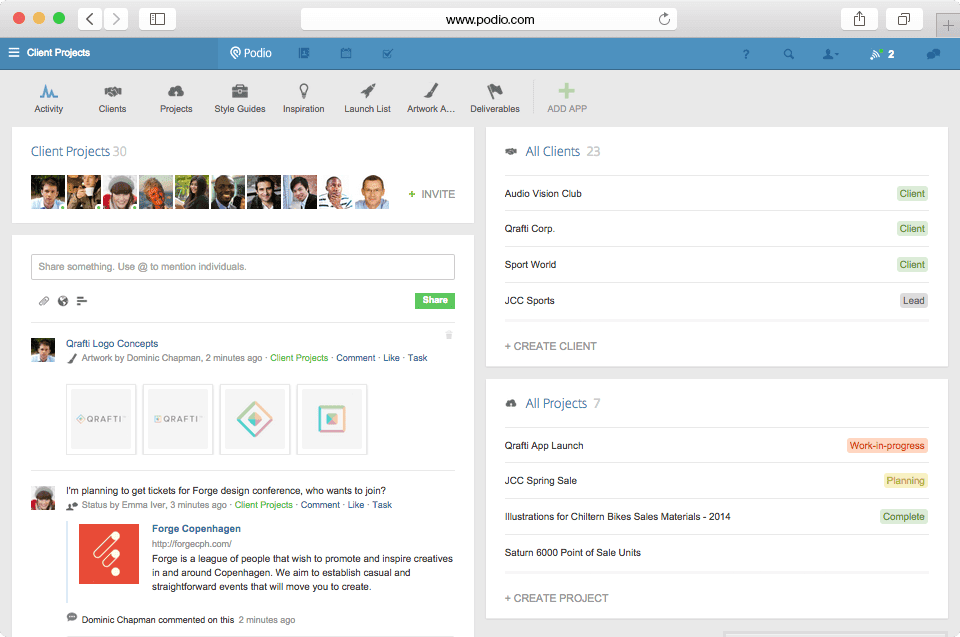
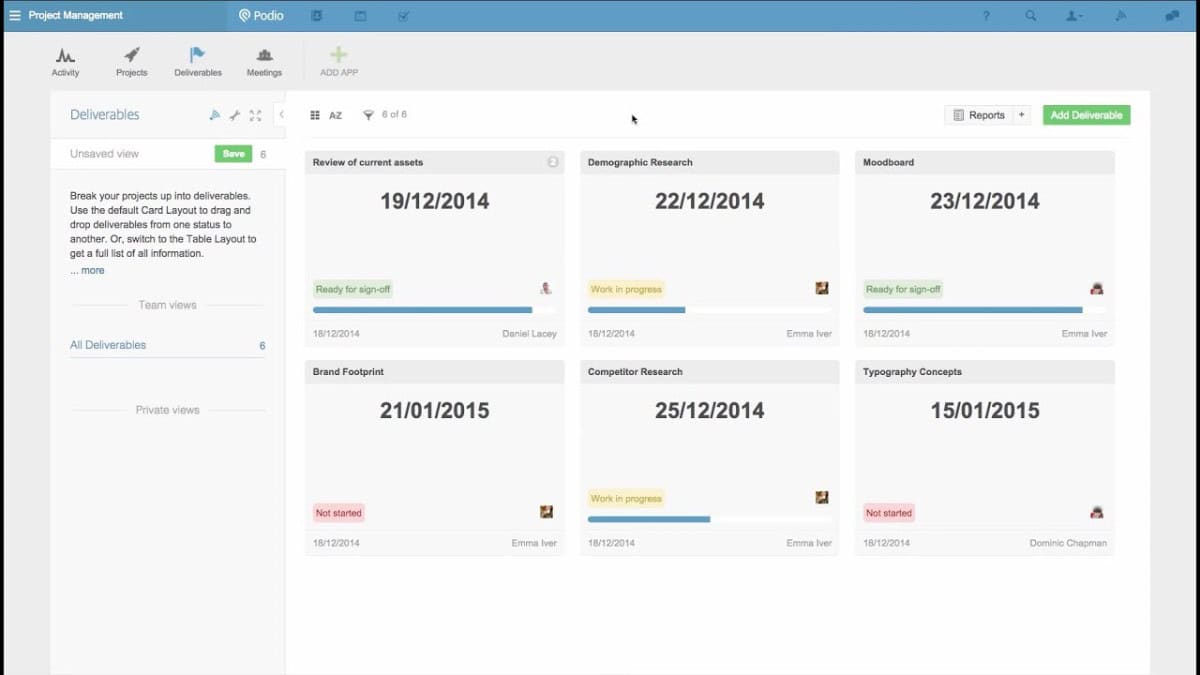
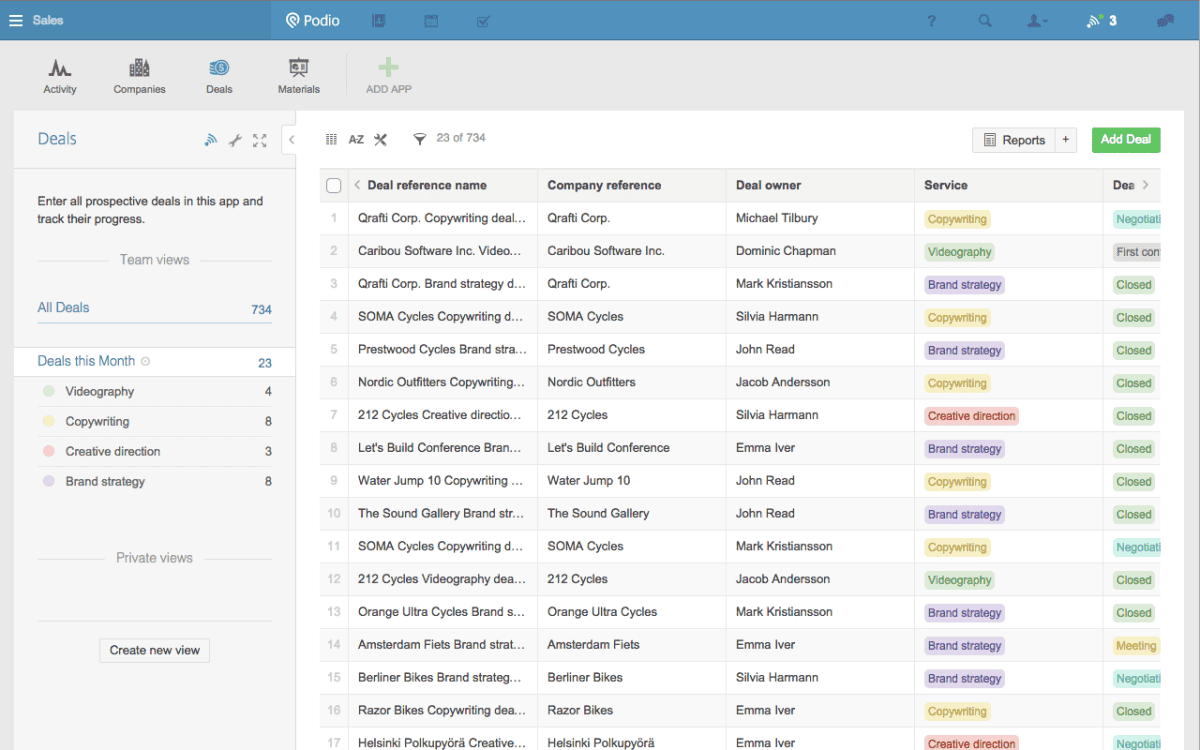
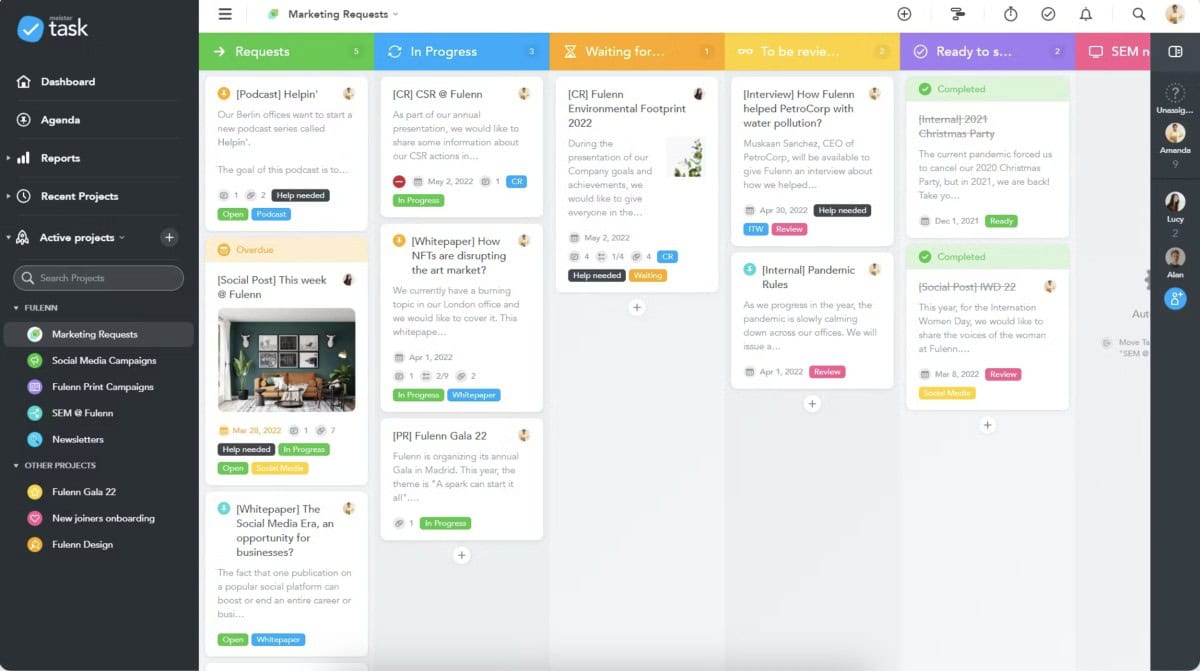
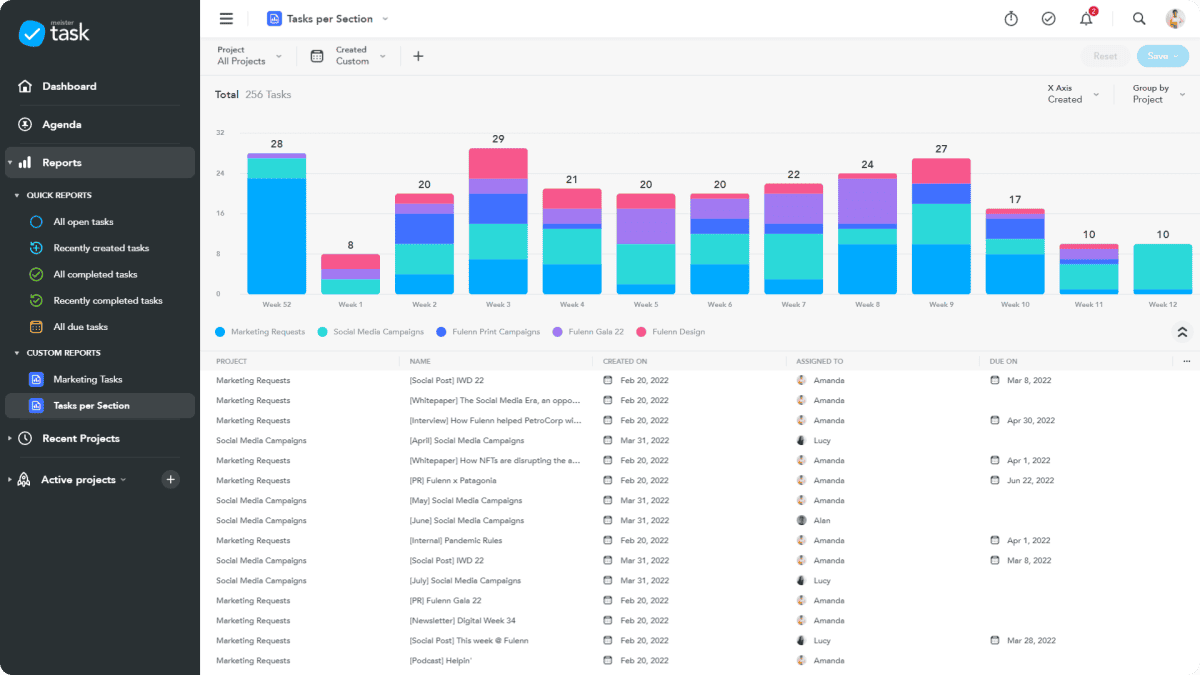
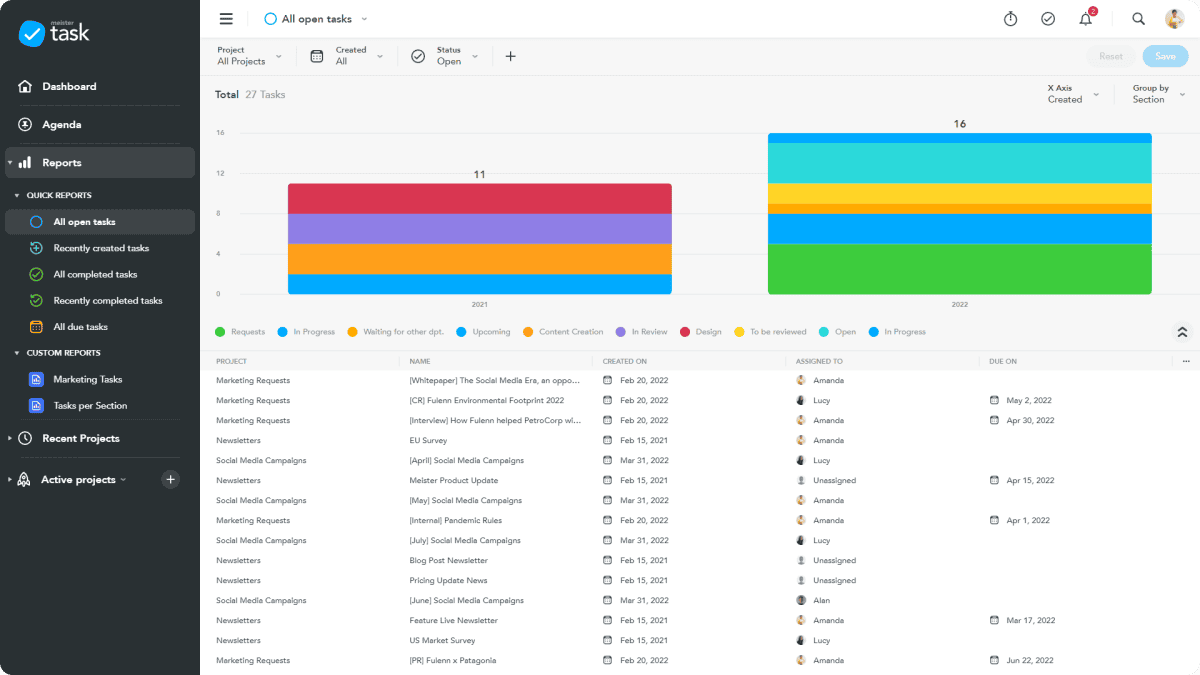
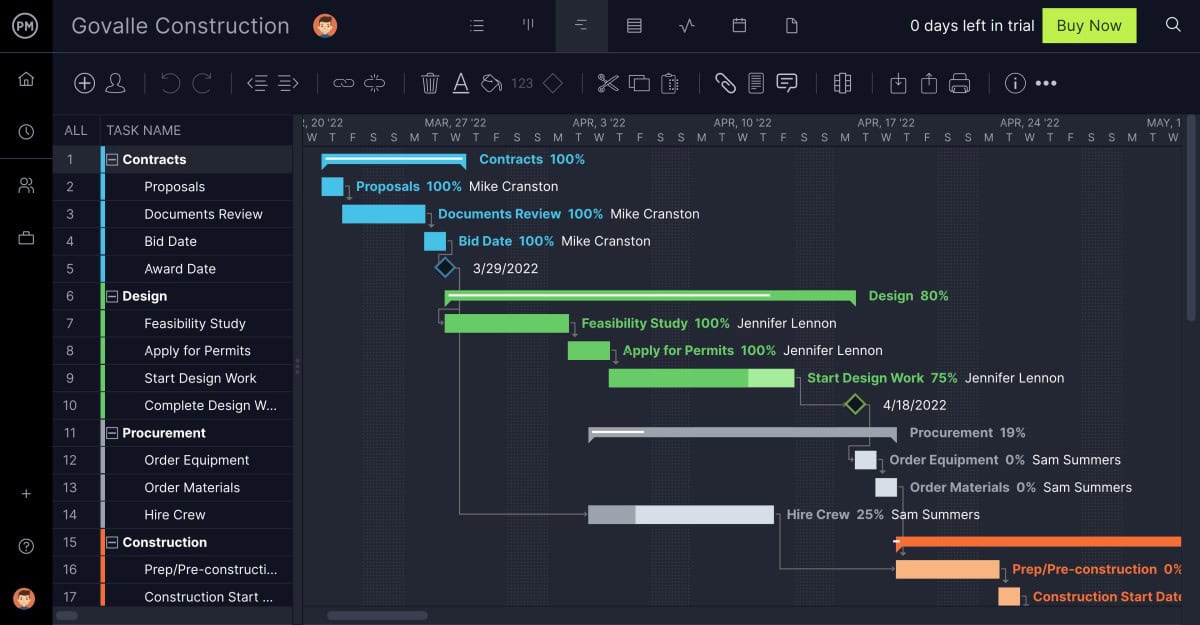
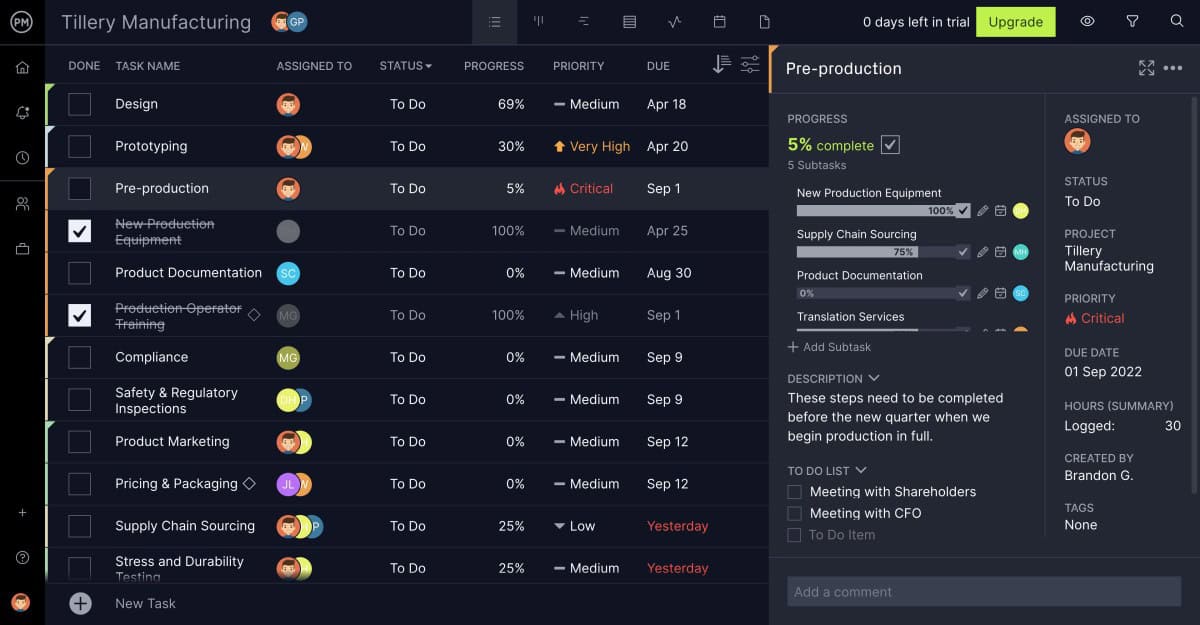
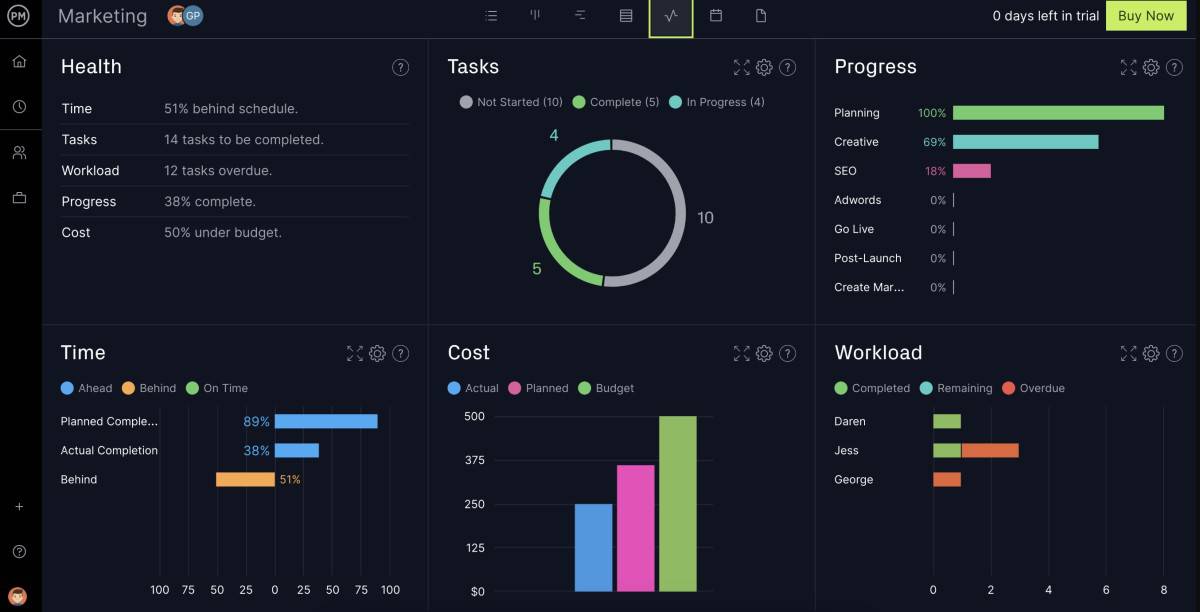
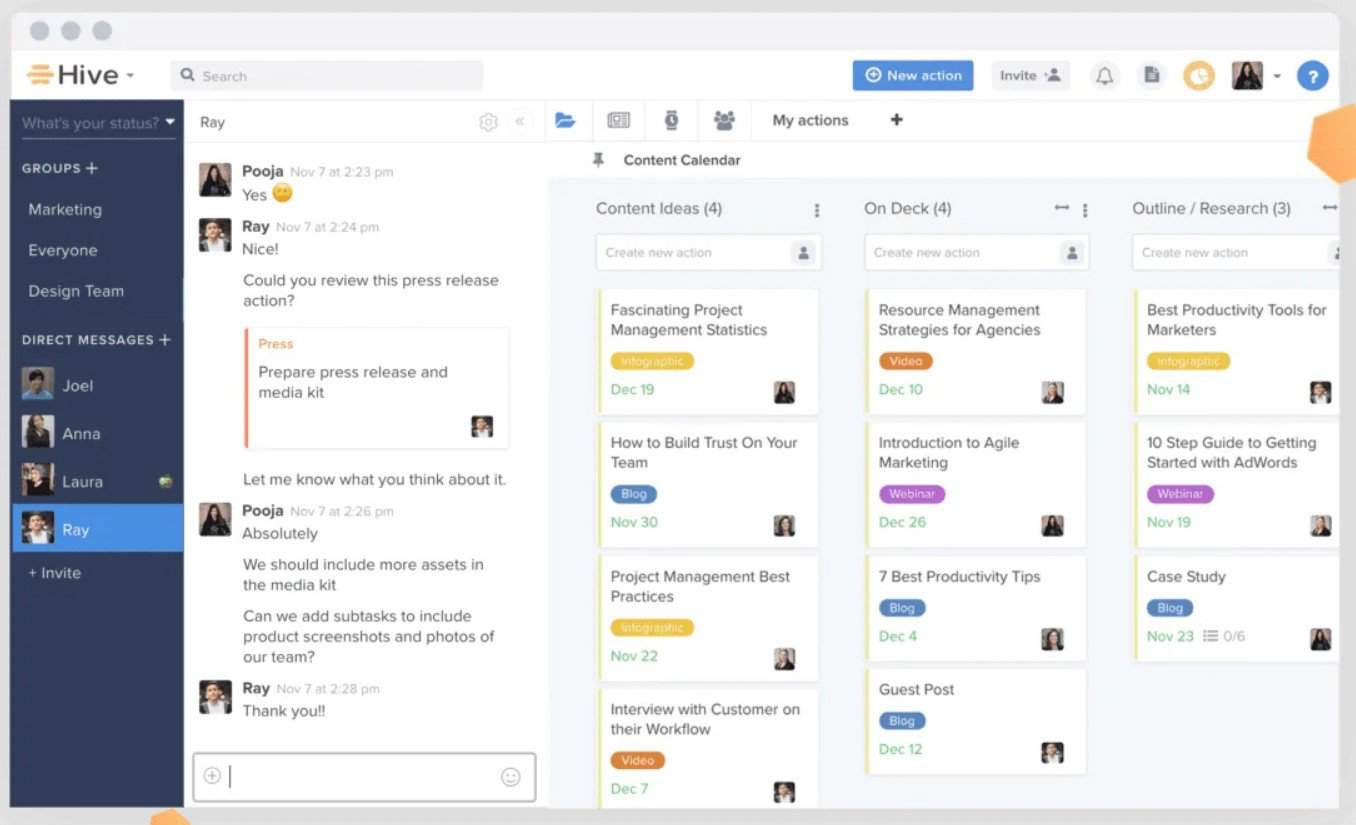
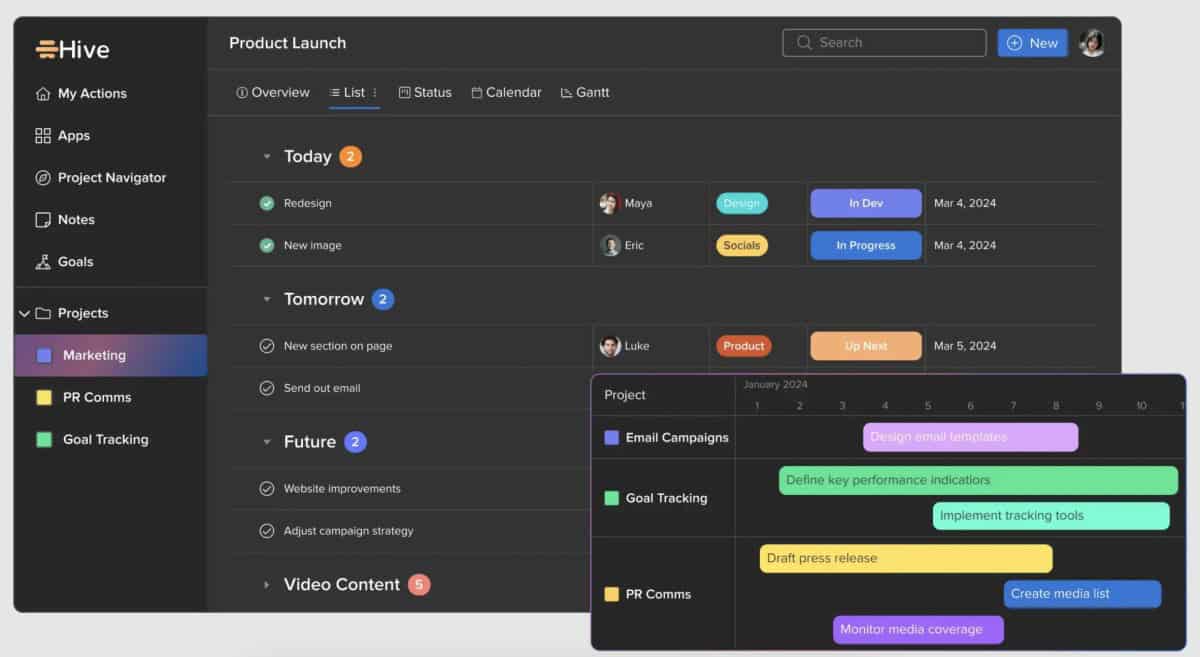
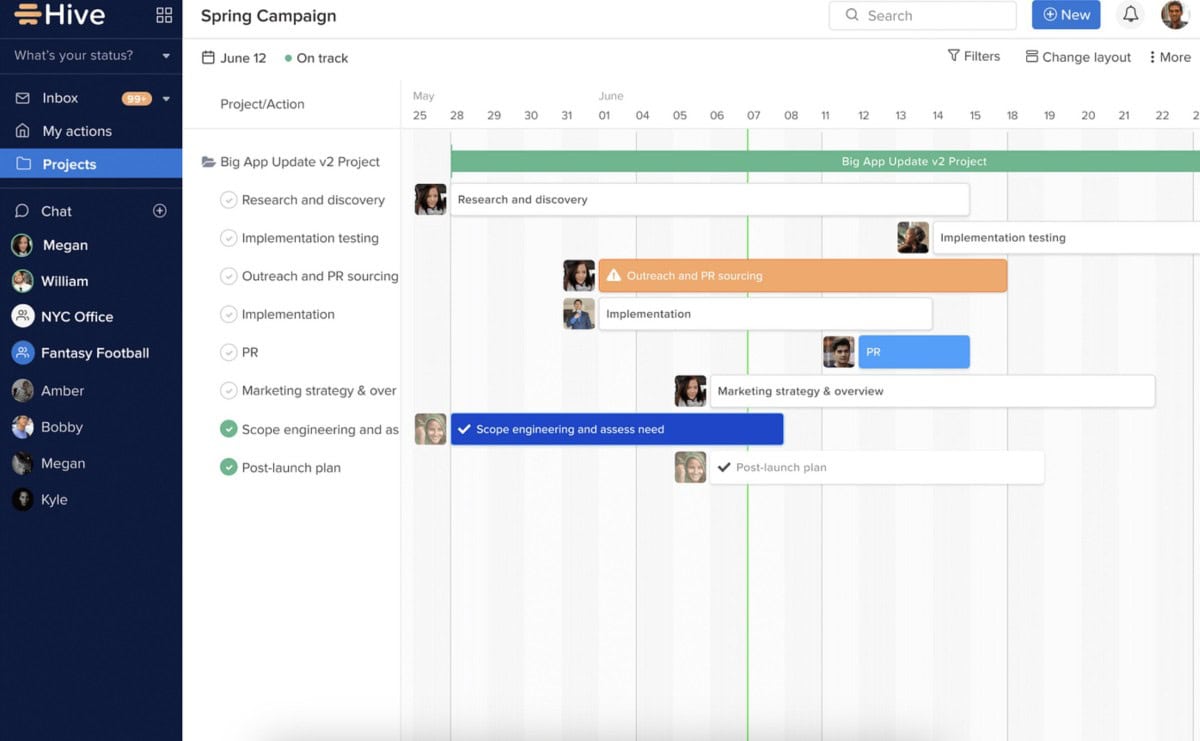
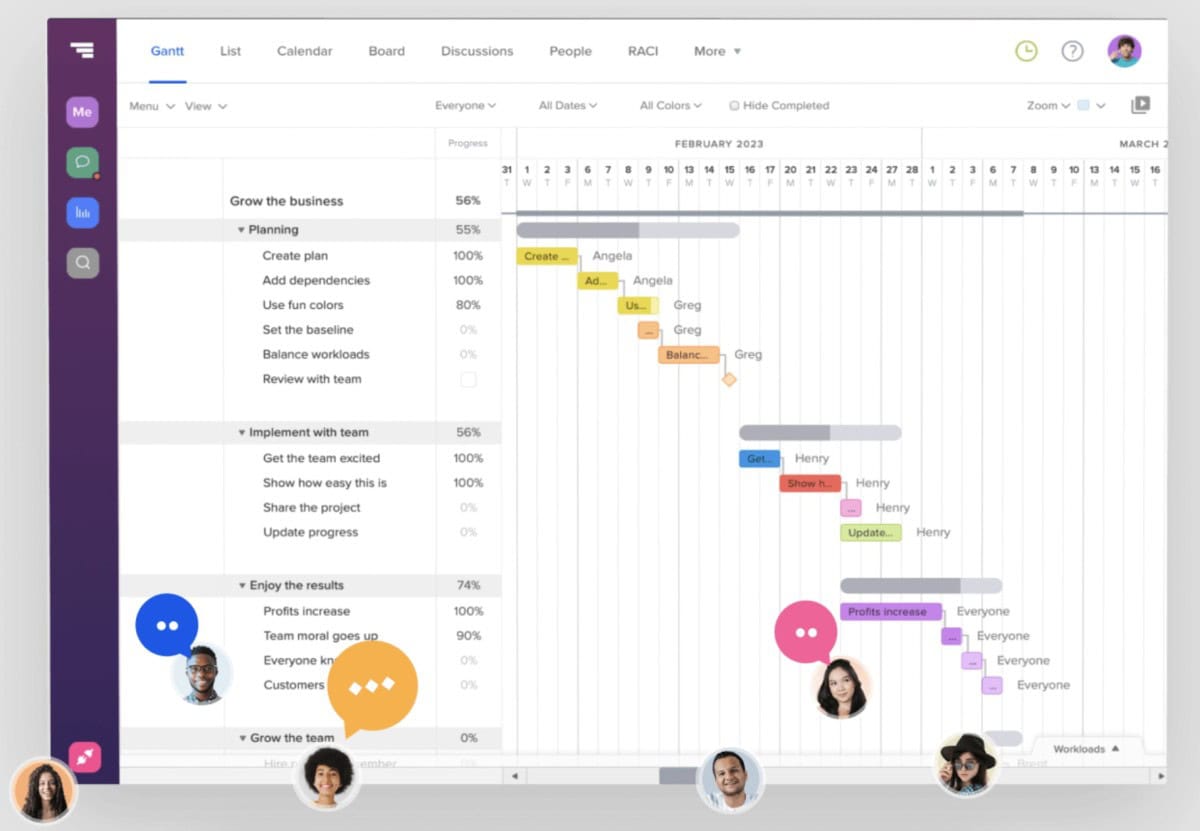
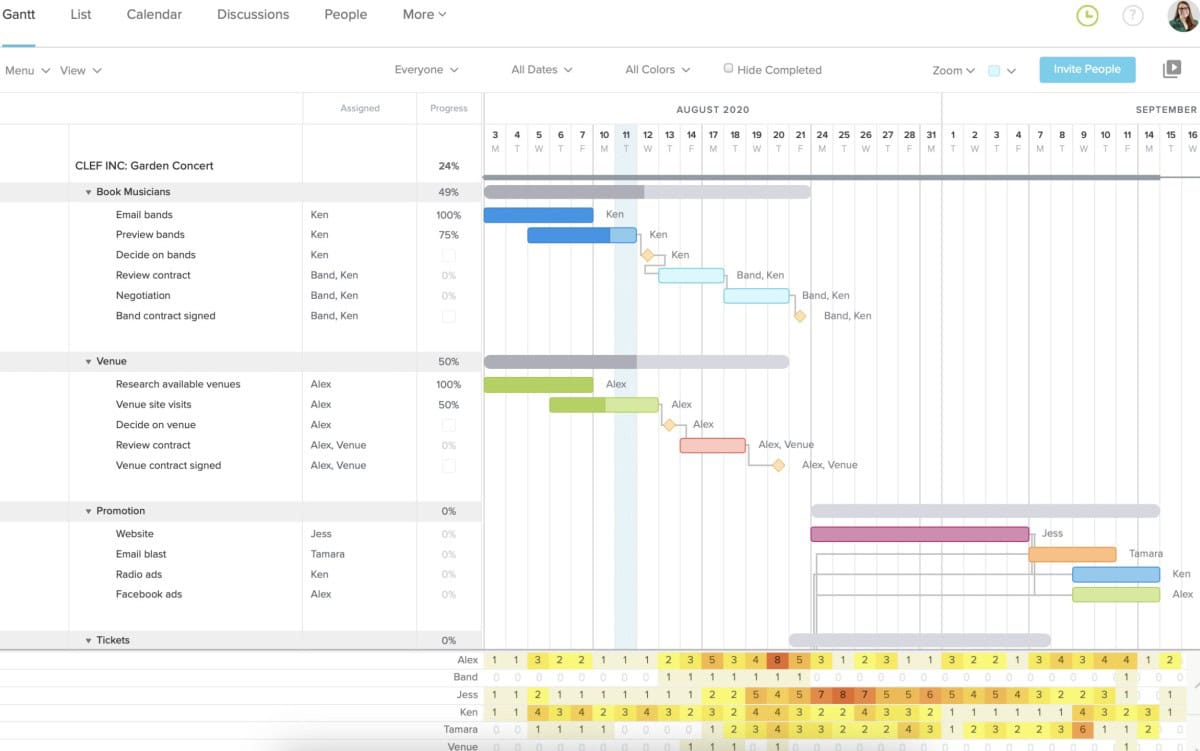
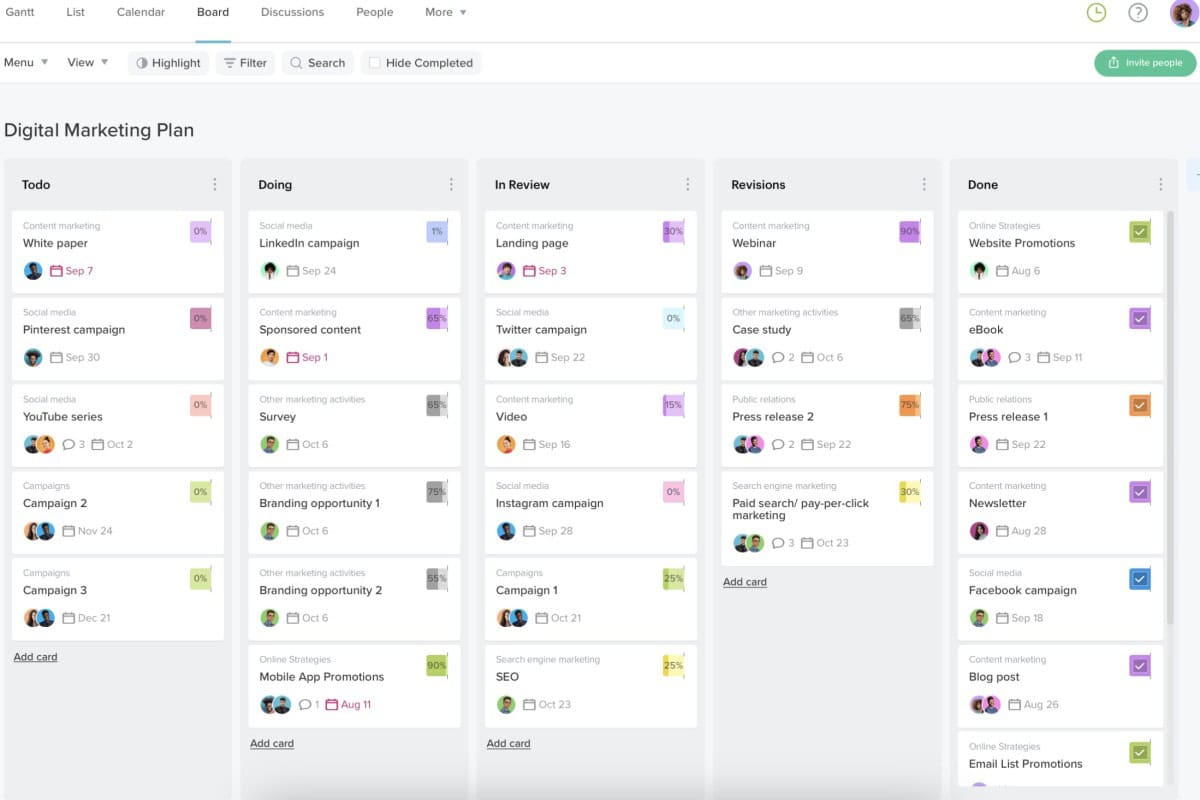
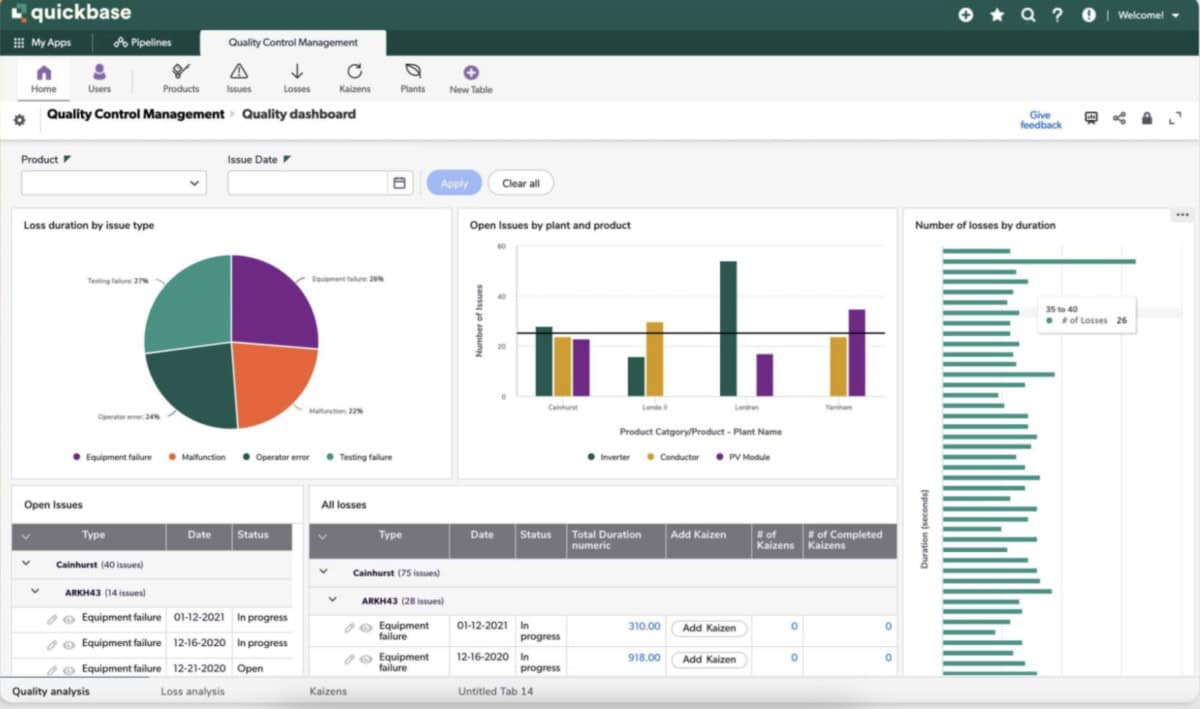
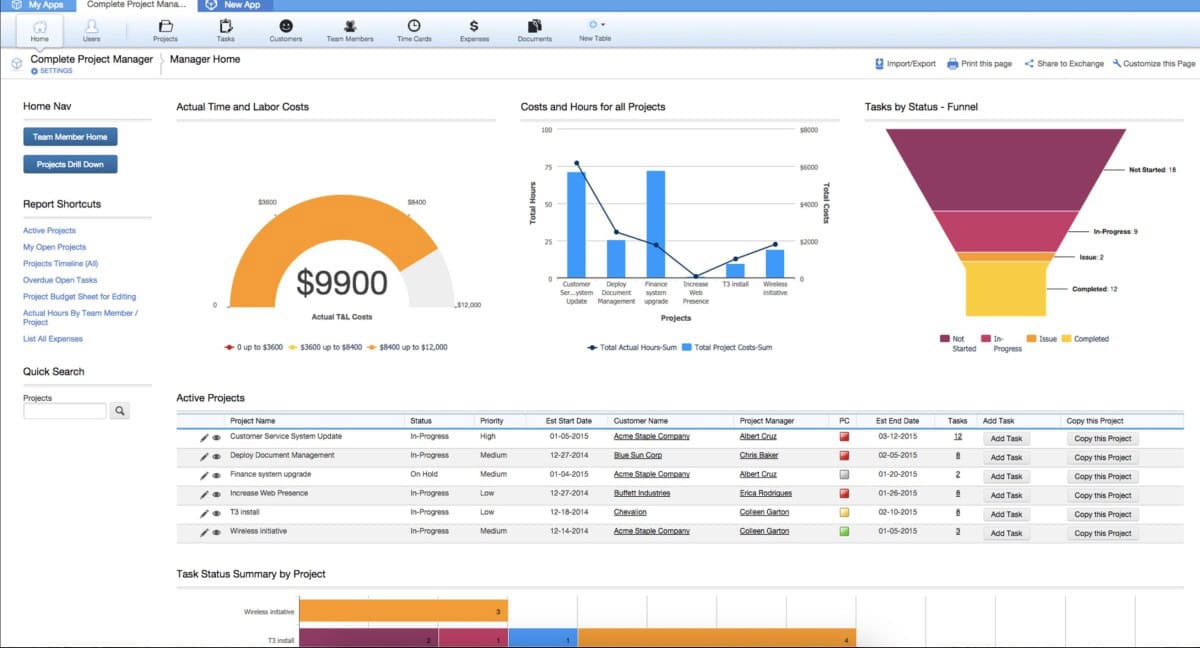
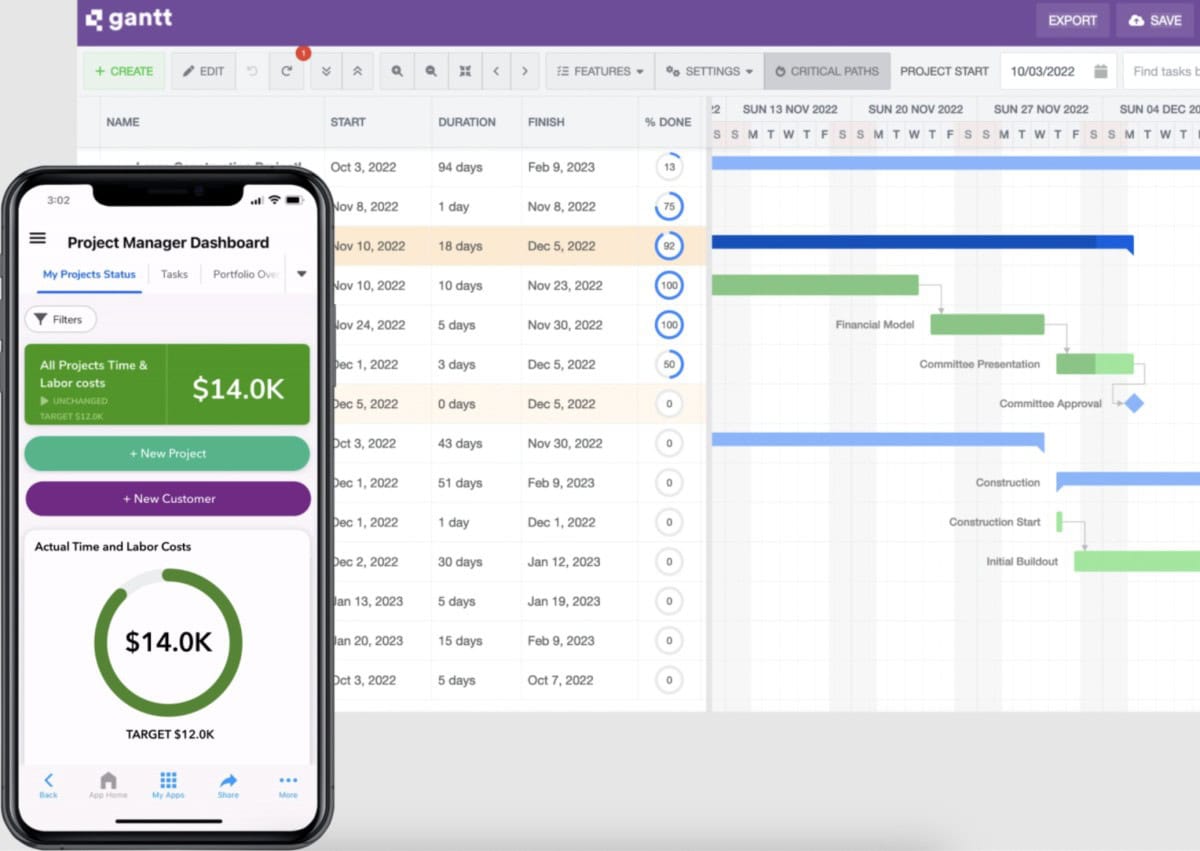
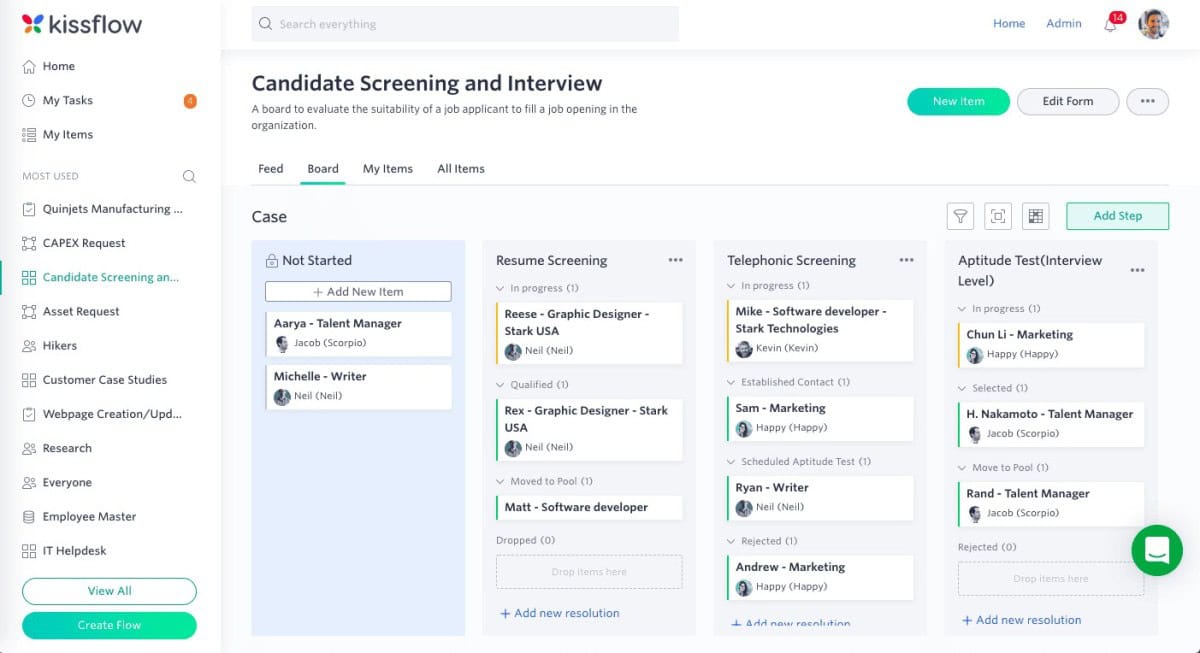
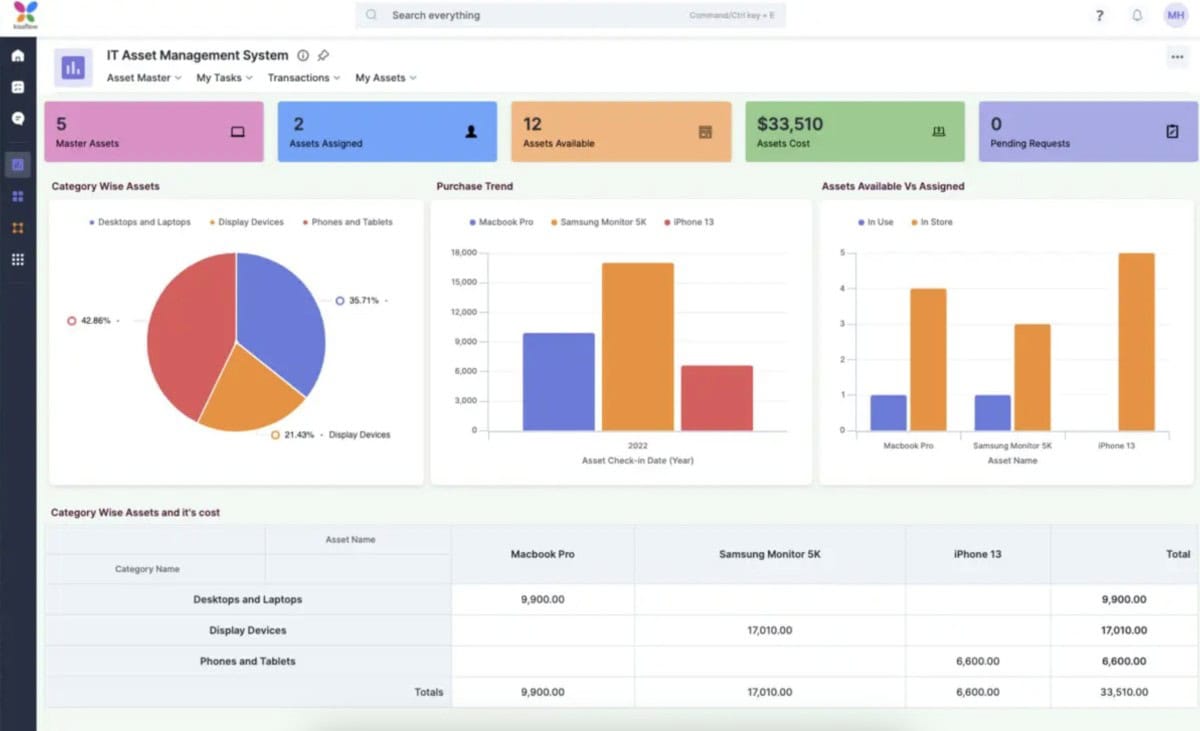
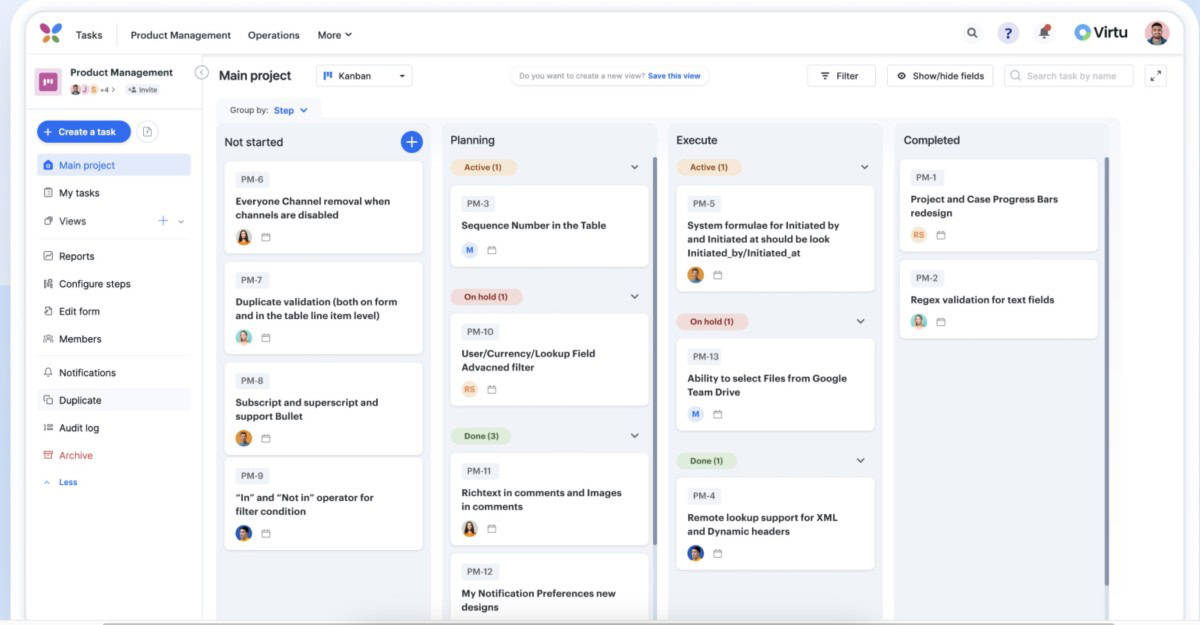
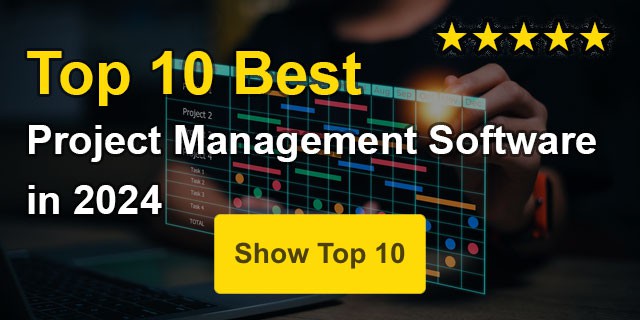

very nice article, and so readable.